social web
description: World Wide Web sites that use technology beyond the static pages of earlier Web sites
115 results

Designing for the Social Web
by
Joshua Porter
Published 18 May 2008
See also social web applications managing online content with, 153 most popular, 16 why people join, 10, 13 social news sites, 17, 153. See also Digg social objects embedding, 148–149 giving unique URL to, 33–34 successful web sites built around, 32 social proof, 79, 80, 87 social psychology, father of, 8 social psychology research, viii, 13, 88, 107 social software. See also social web accelerating growth of, 6, 13–19 challenge of, 9 components of marketing plan for, 48 as forced move, 10–13 and human psychology, viii mobile access to, 91 social web. See also social software; social web applications and personal vs. network value, 24 reasons behind rise of, 5–20 and usage lifecycle, ix–xi social web applications barriers to entry in, 130–131 estimated time spent on, 18 getting people to talk about, 144 growth of, 17–18 most popular, 16–17 new and noteworthy, 17 prioritization scheme for designing, 23.
…
v Table of Contents Introduction vii Part Interface Design, Part Psychology ..............................................viii What’s in the Book ................................................................................ ix One Goal: Better Design ...................................................................... xii Chapter 1: The Rise of the Social Web 1 The Amazon Effect . ................................................................................2 The Social Web . .....................................................................................5 Conclusion . ..........................................................................................20 Chapter 2: A Framework for Social Web Design 21 The AOF Method . .................................................................................23 Focus on the Primary Activity . ............................................................24 Identify Your Social Objects . ...............................................................31 Choose a Core Feature Set . ................................................................34 Conclusion. ...........................................................................................40 Chapter 3: Authentic Conversations 41 The Growing Alienation. .......................................................................43 What Could it Look Like?
…
We are just at the beginning of knowing how to design for a networked world. ix INTRODUCTION What’s in the Book I start off in Chapter 1, The Rise of the Social Web, with a discussion of the scale and significance of the social web phenomenon. Chapter 2, A Framework for Social Design, describes a prioritization scheme called the AOF method that helps designers make early decisions about what features their software should have. The rest of the book examines the series of design problems that correspond to increasing involvement—the Usage Lifecycle—and the strategies social web design can offer. The concept of the usage lifecycle is central to understanding the book.
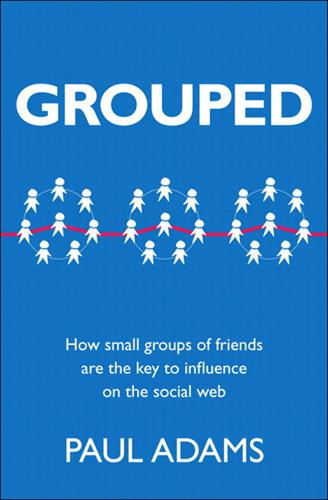
Grouped: How Small Groups of Friends Are the Key to Influence on the Social Web
by
Paul Adams
Published 1 Nov 2011
We are now entering the third phase (right), where websites are being rebuilt around people. Social behavior is the key feature. It is not bolted on. * * * Quick Tips Don’t think about the social web as a set of features to add on to your existing site. The social web is not about adding a “like” button or a “share” button to your web pages. Bolting on social features will not work, because we don’t bolt on social behavior offline. We’ve seen how Zynga, Facebook Photos, and Etsy reinvented businesses by designing around people. Think of the social web like you think of electricity. It’s always there, powering everything else. Social behavior is the same: always there, motivating us to act.
…
Many new businesses are using the social web as a platform to change established industries and incumbent companies. The web is being fundamentally rebuilt around people, and this will change how businesses operate. Almost everything we do revolves around other people, and the social web will reach us all. This rebuilding of the web is happening because our online life is catching up with our offline life. We’re social creatures, and social networks have been around for 10,000 years. The social behavior we’ve evolved over those thousands of years will be what motivates us to act on the social web. Businesses will need to understand those behavior patterns to be successful.
…
Grouped How small groups of friends are the key to influence on the social web Paul Adams For Jenny. Thank you. Grouped: How small groups of friends are the key to influence on the social web Paul Adams New Riders 1249 Eighth Street Berkeley, CA 94710 510/524-2178 510/524-2221 (fax) Find us on the Web at: www.newriders.com To report errors, please send a note to errata@peachpit.com New Riders is an imprint of Peachpit, a division of Pearson Education. Copyright © 2012 by Paul Adams Project Editor: Michael J. Nolan Development Editor: Rose Weisburd Production Editor: Becky Chapman-Winter Copyeditor/Proofreader: Jan Seymour Book Designer: Mimi Heft Compositor: Danielle Foster Indexer: James Minkin Notice of Rights All rights reserved.
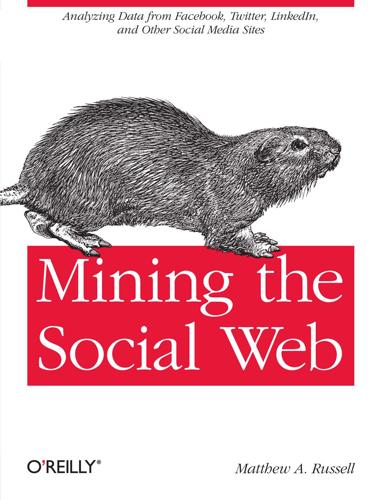
Mining the Social Web: Finding Needles in the Social Haystack
by
Matthew A. Russell
Published 15 Jan 2011
When we look back years from now, it may well seem obvious that the second- and third-level effects created by an inherently social web were necessary enablers for the realization of a truly semantic web. The gap between the two seems to be closing. * * * [1] See the opening paragraph of Chapter 9. [2] Mark Zuckerberg, the creator of Facebook, was named Person of the Year for 2010 by Time magazine (http://www.time.com/time/specials/packages/article/0,28804,2036683_2037183_2037185,00.html) [3] See http://journal.planetwork.net/article.php?lab=reed0704 for another perspective on the social web that focuses on digital identities. Or Not to Read This Book?
…
would indicate that the sender is retweeting information gained via the user @SocialWebMining. An equivalent form of the retweet would be “Justin Bieber is on SNL 2nite. w00t?!? Ummm…(via @SocialWebMining)”. Extracting relationships from the tweets Because the social web is first and foremost about the linkages between people in the real world, one highly convenient format for storing social web data is a graph. Let’s use NetworkX to build out a graph connecting Twitterers who have retweeted information. We’ll include directionality in the graph to indicate the direction that information is flowing, so it’s more precisely called a digraph.
…
In the chapters to come, we’ll cover additional outlets of social web data and techniques for analysis. Synthesis: Visualizing Retweets with Protovis A turn-key example script that synthesizes much of the content from this chapter and adds a visualization is how we’ll wrap up this chapter. In addition to spitting some useful information out to the console, it accepts a search term as a command line parameter, fetches, parses, and pops up your web browser to visualize the data as an interactive HTML5-based graph. It is available through the official code repository for this book at http://github.com/ptwobrussell/Mining-the-Social-Web/blob/master/python_code/introduction__retweet_visualization.py.
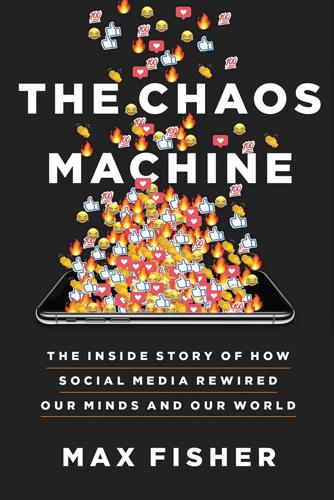
The Chaos Machine: The Inside Story of How Social Media Rewired Our Minds and Our World
by
Max Fisher
Published 5 Sep 2022
Users on gaming subsections of the message board 4chan, a center of nerd culture, and especially on Reddit, a sprawling discussion site that had become a teeming megalopolis at the heart of the social web, embraced Gjoni’s claim as vindication of their mistrust, setting the narrative for the platforms’ millions of users. Gjoni’s post was also read as encouraging the rough justice often embraced on the social web: collective harassment. So much so that a judge later forbade him from writing anything further about Quinn. And indeed, if harassment was Gjoni’s goal, his post had the desired effect. “i just want to see zoe get her comeuppance,” one 4chan user wrote in a chat organizing the effort to, as another put it, “make her life irrepairably horrible,” even “harassing her into killing herself.”
…
Some posted what they believed to be her home address, sometimes alongside fantasies that she might be killed or raped there. But with the exception of a post offering $1,000 for a photo of Pao being assaulted, she instructed moderators to leave it all up. This string of episodes—Gamergate, the hate forums, the backlash to Pao—shook the social web but, strangely, not its overseers, who showed no sign of noticing how deeply the culture of extremism and mob majoritarianism had suffused the social web. But it was not ignored by the far right, which saw that social media had cultivated what they could not: a large and willing audience for white nationalism among America’s youth. “Gamergate seems to have alerted racist, misogynist, homophobic internet trolls to the level of power they actually possess.
…
“Gamergate seems to have alerted racist, misogynist, homophobic internet trolls to the level of power they actually possess. Which is definitely a good thing,” Andrew Anglin, a longtime 4chan poster, wrote on The Daily Stormer, a prominent neo-Nazi forum he’d founded in 2013. He urged his followers to coopt Gamergate and the broader social web, launching “the rise of the Nazi troll army.” Other social-web stars were already participating. Fredrick Brennan, the 8chan founder, had written a Daily Stormer essay endorsing eugenics. Andrew Auernheimer, the prominent hacker, had joined as webmaster. Reddit and 4chan recruits, some of whom were “too extreme” even for the hardened white supremacists on neo-Nazi forums, poured in.

Mining Social Media: Finding Stories in Internet Data
by
Lam Thuy Vo
Published 21 Nov 2019
Given the huge role of social media, the internet, and technology in all of our lives, this book aims to explore them in an accessible and straightforward way. Through practical exercises, you’ll learn the foundational concepts of programming, data analysis, and the social web. On some level, this book is targeted to someone just like my former self— a person who was fiercely curious about the world but also intimidated by jargon-filled forums, conferences, and online tutorials. We’ll take a macro and micro approach, looking at the ecosystem of the social web as well as the minutiae of writing code. Coding is more than just a way to build a bot or an app: it’s a way to satisfy your curiosity in a world that is increasingly dependent on technology.
…
Chan, Lo Benichou, Aaron Williams, Ted Han and Andrew Tran for the camaraderie in an industry full of competitors, to John Wingenter, Adrienne Lopes, Vita Ayala, Mariru Kojima and Toyin Ojih Odutola for providing family far away from family, and to my niece Elynna Quynh Vo who’s the future. INTRODUCTION We experience the social web in brief moments that flash by, often without ever coming back to them. Liking a photo on Instagram, sharing a post that someone published on Facebook, or messaging a friend on WhatsApp—whatever the specific interaction, we do it once and likely don’t think about it after. But from swipes to clicks to status updates, our online lives are being captured by social media companies and used to fill some of the largest data servers in the world.
…
We can also investigate the harm done by these systems, from detecting false online actors (for example, automated bot accounts or fake profiles that seed misinformation) to understanding how algorithms surface questionable content to viewers over time. If we look at these data points collectively, we can find patterns, trends, or anomalies and, hopefully, better understand the ways in which we consume and shape the human experience online. This book aims to help those who want to go from simply observing the social web one post or tweet at a time to understanding it on a larger, more meaningful scale. What Is Data Analysis? The main goal for any data analyst is to gain useful insights from large quantities of information. We can think of data analysis as a way to interview a vast number of records: we may ask about unusual single events, or we may be looking into long-term trends.

Terms of Service: Social Media and the Price of Constant Connection
by
Jacob Silverman
Published 17 Mar 2015
For many users, the site’s rivers of mindless content are exactly what they’re designed to be: enjoyable trifles to be idly digested and shared during slow periods in the white-collar workday. As one monolith in the new-media landscape, then, BuzzFeed isn’t so menacing. But as a prominent example of how a news organization can be built, ground up, for the social web, it is troubling, all the more so because its occasional quality content is hidden in thickets of dreck. (BuzzFeed, like some other digital organizations, believes that home pages don’t matter much anymore—referrals through the social web are much more important—which is one reason why the home page of BuzzFeed.com is a mass of links, none of them communicating their relative importance.) More than that, the site is based on a patronizing and infantilizing view of users, who are seen as easily manipulatable totems—target the crazies!
…
The opinion is the prototypical expression of the social web: everyone has them, and yet there are never enough. Web sites, apps, purchases, restaurants, books, TV shows and films streamed on Netflix—everything and every place is open to being summarized in a few sentences and a one-to-five star rating. Even prisons are now reviewed, however cheekily, on Yelp. Sometimes we review as a favor to a friend, in return for a discount, or because our disappointment with the last season of True Blood forced us to act (strong opinions play well on the social web). Despite the widespread belief that many ratings sites are inaccurate or skewed—about 14 percent are fake, according to a 2012 Gartner study—reviewing continues apace.
…
One poll found that most British babies appear on social media within an hour of being born. Many human beings acquire a data trail almost as soon as they appear in the world—and sometimes before. Once created, it can never be destroyed, only modified, added to, parts of it made more visible while others are suppressed. To become part of the social web, then, is to join the networks of surveillance, tracking, and data circulation that now support a vast informational economy and increasingly shape our social and cultural lives. Few aspects of contemporary life have gone unaffected by this shift, by the ability to publish immediately, freely, and to a massive audience.

Beautiful Architecture: Leading Thinkers Reveal the Hidden Beauty in Software Design
by
Diomidis Spinellis
and
Georgios Gousios
Published 30 Dec 2008
Mies van der Rohe, Ludwig, Brick and Mortar Architecture migrations, Database Migrations databases in Lifetouch, Database Migrations MIR (Machine-level Intermediate Representation), MIR Jikes RVM, MIR MMOs (massively multiplayer online games), Introduction, The Game World about, The Game World MMTk (Memory Management Toolkit), Garbage Collection Jikes RVM, Garbage Collection Model-View-Controller pattern, Emacs’s Architecture GNU Emacs, Emacs’s Architecture models, Good Architectures, First Steps into Design Town, Facebook’s Application Platform, Applications on Facebook: Directly Rendering HTML, CSS, and JS, Applications on Facebook: iframes, Applications on Facebook: FBML As Data-Driven Execution Markup application-as-service model, Applications on Facebook: FBML As Data-Driven Execution Markup architecture evaluation, Good Architectures conceptual models, First Steps into Design Town iframe model, Applications on Facebook: iframes n-tier architecture model, Facebook’s Application Platform, Applications on Facebook: Directly Rendering HTML, CSS, and JS modularity, Assessing the Modularity of Functional Solutions, State Intervention, Extendibility Criteria, The Modularization Policy, Assessing and Improving OO Modularity, Extendibility: Adding Operations, An Agent-Based Library to Make the Visitor Pattern Unnecessary distribution of knowledge criterion, An Agent-Based Library to Make the Visitor Pattern Unnecessary extendibility criteria, Extendibility Criteria of functional solutions, Assessing the Modularity of Functional Solutions, State Intervention reusability and extendibility, Assessing and Improving OO Modularity, Extendibility: Adding Operations types and modules, The Modularization Policy modules, Principles, Properties, and Structures, Module dependencies, The Modularization Policy defined, Principles, Properties, and Structures dependencies in Lifetouch, Module dependencies and types, The Modularization Policy monads, State Intervention functional languages, State Intervention monitoring, Task Portability loads, Task Portability Moore’s law, Context chips and scaling, Context multicore processors, Context use in MMOs and virtual worlds, Context multithreading, Betting on the Future, Message System in Project Darkstar, Betting on the Future Tandem computers, Message System music composition, The Role of Architect N n-tier architecture model, Facebook’s Application Platform, Applications on Facebook: Directly Rendering HTML, CSS, and JS Facebook, Facebook’s Application Platform, Applications on Facebook: Directly Rendering HTML, CSS, and JS names, The Web, The Web, File Naming files and processes, File Naming as a human construct, The Web on Web, The Web native code, Native Interface Jikes RVM, Native Interface Nepomuk project, The Akonadi Architecture KDE, The Akonadi Architecture NetKernel, The Web, Applied Resource-Oriented Architecture, Applied Resource-Oriented Architecture memoization, The Web, Applied Resource-Oriented Architecture using, Applied Resource-Oriented Architecture networking, Networking: EXPAND and FOX Guardian operating system, Networking: EXPAND and FOX NIO image transfer, NIO image transfer Lifetouch, NIO image transfer “NonStop” computers, Guardian: A Fault-Tolerant Operating System Environment, Input/Output notifications, Acknowledgments (see asynchronous notifications) O object-oriented languages, Software Architecture: Object-Oriented Versus Functional versus functional, Software Architecture: Object-Oriented Versus Functional object-oriented programming, Rereading the Classics paradigm for, Rereading the Classics objects, Properties, Java Performance Tips, Fighting A Losing Battle, Object Layout, Combinators Are Good, Types Are Better, Everything Is an Object, Everything Is an Object churn, Fighting A Losing Battle defining types of, Combinators Are Good, Types Are Better instantiation and performance, Java Performance Tips layout in Jikes RVM, Object Layout in object-oriented languages, Everything Is an Object, Everything Is an Object properties in Lifetouch, Properties On-Stack Replacement (OSR), On-stack replacement Jikes RVM, On-stack replacement online games, Introduction scaling, Introduction online profiling, Unlimited Analysis in a Static Compiler Must Mean Better Performance open source development, Open Source Development Xen project, Open Source Development operating systems, Xenoservers, The Challenges of Virtualization, Paravirtualization paravirtualization, Paravirtualization versus xenoservers, Xenoservers virtual machines, The Challenges of Virtualization operations, The Functional Advantage, Reusing Operations, Extendibility: Adding Operations adding, Extendibility: Adding Operations as data, The Functional Advantage reusing, Reusing Operations optimal traversal order, Simple code generation acyclic graphs in JPC, Simple code generation optimization, Changing Hardware, Changing Xen, Java Performance Tips, Microcoding: Less Is More or More Is Less, As Runtime Compilers Must Be Fast, They Must Be Simple, Adaptive Optimization System, Optimizing Compilation, Summary, The First Release and Beyond Adaptive Optimization System in Jikes RVM, Adaptive Optimization System compilation in Jikes RVM, Optimizing Compilation, Summary emulated instruction set, Microcoding: Less Is More or More Is Less IOMMU for virtualization, Changing Hardware, Changing Xen Java performance, Java Performance Tips KDE, The First Release and Beyond selective optimization, As Runtime Compilers Must Be Fast, They Must Be Simple OSGi framework, Launcher Lifetouch, Launcher OSR (On-Stack Replacement), On-stack replacement Jikes RVM, On-stack replacement overheads, Four in Four: It Just Won’t Go JPC, Four in Four: It Just Won’t Go overlays, The Model: Buffers GNU Emacs, The Model: Buffers P parallelism, Creating a Software Architecture, Parallelism and Latency, Declarative Concurrency: A Thumbnail Viewer Example in Project Darkstar, Parallelism and Latency ThreadWeaver, Declarative Concurrency: A Thumbnail Viewer Example workflow, Creating a Software Architecture paravirtualization, Introduction, Paravirtualization, Paravirtualization Xen project, Introduction, Paravirtualization, Paravirtualization partial evaluations, Partial evaluation Jikes RVM, Partial evaluation PC architecture, The PC Architecture PCAL instructions, Action of the PCAL and SCAL Instructions Tandem computers, Action of the PCAL and SCAL Instructions PEIs (Potentially Exceptioning Instructions), Factored control flow graph RVM, Factored control flow graph performance, Context, Thoughts on the Architecture, Performance, Introduction, Proof of Concept, Potential Processor Performance Tests, Java Performance Tips, Java Performance Tips, Microcoding: Less Is More or More Is Less, Hijacking the JVM, Codeblock replacement, Ultimate Security, Unlimited Analysis in a Static Compiler Must Mean Better Performance, Dynamic Class Loading Inhibits Performance compilers, Unlimited Analysis in a Static Compiler Must Mean Better Performance dynamic class loading in runtime environments, Dynamic Class Loading Inhibits Performance Guardian operating system, Performance JPC, Proof of Concept, Ultimate Security JVM, Hijacking the JVM, Codeblock replacement measuring in MMOs and virtual worlds, Thoughts on the Architecture optimization in Java, Java Performance Tips processors, Context, Potential Processor Performance Tests switch statements, Java Performance Tips, Microcoding: Less Is More or More Is Less virtualization, Introduction performance isolation, Xenoservers operating systems versus xenoservers, Xenoservers Persistent URL system, Applied Resource-Oriented Architecture, Applied Resource-Oriented Architecture personal information management (PIM) applications, Background KDE, Background “pillars”, Akonadi KDE, Akonadi PIM applications, Background KDE, Background pipelines, First Steps into Design Town, Render pipeline audio architecture, First Steps into Design Town render pipelines, Render pipeline polymorphism, Polymorphism, Polymorphic Containers, and Dynamic Binding, Types Are Defined Implicitly portability, Task Portability tasks in Project Darkstar, Task Portability portals, Acknowledgments (see social web portals) Potentially Exceptioning Instructions (PEIs), Factored control flow graph RVM, Factored control flow graph primordials, Compiling the Primordials and Filling in the JTOC compiling in Jikes RVM, Compiling the Primordials and Filling in the JTOC principles, Principles, Properties, and Structures of architecture, Principles, Properties, and Structures priorities, Core Concepts and Features ThreadWeaver, Core Concepts and Features privacy, Some Facebook Core Data, A Simple Web Service Authentication Handshake Facebook data, Some Facebook Core Data, A Simple Web Service Authentication Handshake procedure calls, Procedure Calls Tandem computers, Procedure Calls process pairs, Process Pairs, Revisited Guardian operating system, Process Pairs, Revisited processes, Principles, Properties, and Structures, The Process Structures, Process contained in module, Summary of Structures, Process Structure, File Naming defined, Principles, Properties, and Structures Guardian operating system, Process Structure in modules, Process contained in module naming, File Naming structures, The Process Structures, Summary of Structures processors, Context, Processor Architecture, Action of the PCAL and SCAL Instructions, Potential Processor Performance Tests architecture of Tandem computers, Processor Architecture, Action of the PCAL and SCAL Instructions performance tests in JPC, Potential Processor Performance Tests speed and scaling, Context producibility, Creating a Software Architecture as an architectural concern, Creating a Software Architecture Project Darkstar, Context, Simplifying the Programmer’s Job properties, Principles, Properties, and Structures, Properties, The Model: Buffers, Assessing the Functional Approach of architecture, Principles, Properties, and Structures forms in Lifetouch, Properties reusability, Assessing the Functional Approach text in GNU Emacs, The Model: Buffers protected mode, The Perils of Protected Mode, The Perils of Protected Mode JPC, The Perils of Protected Mode, The Perils of Protected Mode protocols, Acknowledgments (see file transfer protocols) proxy class, Problems Smalltalk, Problems public inheritance, Problems, Problems puddings, The Functional Examples metaphor for financial contracts, The Functional Examples PURL, Acknowledgments (see Persistent URL system) Q Qt, History and Structure of the KDE Project GUI programming, History and Structure of the KDE Project quality, Creating a Software Architecture, Maintaining quality, History and Structure of the KDE Project in Free Software community, History and Structure of the KDE Project maintaining in Design Town project, Maintaining quality in relation to functionality, Creating a Software Architecture queueing, Core Concepts and Features ThreadWeaver, Core Concepts and Features R Rand, Paul, Brick and Mortar Architecture RDF (Resource Description Framework), The Web redisplay engine, The View: Emacs’s Redisplay Engine GNU Emacs, The View: Emacs’s Redisplay Engine refactoring, Creating a Software Architecture, Launcher, Conway’s Law, applied defined, Creating a Software Architecture Lifetouch, Launcher, Conway’s Law, applied references, References, References, Further Reading, Further Reading, References, References, References on architecture, References enterprise application architecture, References languages, References, References systems architecture, Further Reading, Further Reading, References referential transparency, State Intervention expressions, State Intervention relations, Acknowledgments (see uses relations) reliability, Overview defined, Overview render pipelines, Render pipeline Lifetouch, Render pipeline rendering HTML, CSS, and JavaScript, Applications on Facebook: Directly Rendering HTML, CSS, and JS replication schemes, The Macro Structure in Project Darkstar, The Macro Structure repositories, Image repositories images, Image repositories requestors, Message System multithreading in Tandem computers, Message System requests, Resource-Oriented Architectures for named resources, Resource-Oriented Architectures requirements, Clear requirements in Messy Metropolis project, Clear requirements resource allocation, Acknowledgments (see dynamic resource allocation) Resource Description Framework (RDF), The Web REST (REpresentational State Transfer), The Web, Resource-Oriented Architectures semantics, The Web URLs, Resource-Oriented Architectures reusability, Overview, Assessing the Functional Approach, Reusing Operations defined, Overview functional languages, Assessing the Functional Approach operations, Reusing Operations ROA (resource-oriented architectures), Resource-Oriented Architectures: Being “In the Web”, Conclusion, Conventional Web Services, The Web, Resource-Oriented Architectures, Resource-Oriented Architectures, Applied Resource-Oriented Architecture, Applied Resource-Oriented Architecture about, Resource-Oriented Architectures, Resource-Oriented Architectures Persistent URL system, Applied Resource-Oriented Architecture, Applied Resource-Oriented Architecture Web, The Web web services, Conventional Web Services roadmaps, for change, Architectural Structures runtime analysis, Runtime Analysis Uses a Lot of Resources resources used, Runtime Analysis Uses a Lot of Resources runtime compilers, As Runtime Compilers Must Be Fast, They Must Be Simple Jikes RVM, As Runtime Compilers Must Be Fast, They Must Be Simple runtime components, Runtime Components, Summary Jikes RVM, Runtime Components, Summary runtime environments, Background, Myths Surrounding Runtime Environments myths about, Myths Surrounding Runtime Environments self-hosting, Background runtime memory layout, Runtime Memory Layout Jikes RVM, Runtime Memory Layout runtime structures, The Process Structures processes, The Process Structures runtimes, Bootstrapping a Self-Hosting Runtime self-hosting, Bootstrapping a Self-Hosting Runtime RVM, Acknowledgments (see Jikes RVM) S Salginatobel Bridge, Brick and Mortar Architecture SCAL instructions, Action of the PCAL and SCAL Instructions Tandem computers, Action of the PCAL and SCAL Instructions scaling, Introduction, Simplifying the Programmer’s Job, Scale out, The Web Project Darkstar, Introduction, Simplifying the Programmer’s Job render engines in Lifetouch, Scale out REST, The Web scheduling, The Basic Services simultaneous tasks in Project Darkstar, The Basic Services Scylla, Assessing the Functional Approach reusability, Assessing the Functional Approach Seagram building, Brick and Mortar Architecture security, Security, Introduction, Introduction, Ultimate Security emulation and, Introduction Guardian operating system, Security JPC, Introduction, Ultimate Security selective optimization, As Runtime Compilers Must Be Fast, They Must Be Simple virtual machines, As Runtime Compilers Must Be Fast, They Must Be Simple self-hosting, Background, Bootstrapping a Self-Hosting Runtime, The Boot Image Runner and VM.boot bootstrapping runtimes, Bootstrapping a Self-Hosting Runtime, The Boot Image Runner and VM.boot programming languages, Background semantics, Acknowledgments (see transactional semantics) servers, The Game World, The Macro Structure, Interchangeable Workstations, Xenoservers, Flexible Computing Anywhere, The Evolution of Akonadi, The Evolution of Akonadi data servers, The Evolution of Akonadi JPC, Flexible Computing Anywhere Lifetouch, Interchangeable Workstations role in MMOs architecture, The Game World role of in Project Darkstar, The Macro Structure shared PIM servers, The Evolution of Akonadi xenoservers, Xenoservers service decomposition, The Architecture in Project Darkstar, The Architecture services, The Basic Services stack-level services in Project Darkstar, The Basic Services session keys, A Simple Web Service Authentication Handshake Facebook, A Simple Web Service Authentication Handshake Session Service, Communication Services Project Darkstar, Communication Services sets, Types Are Defined Implicitly defining, Types Are Defined Implicitly shadow page tables, Paravirtualization virtual memory, Paravirtualization Shapir-Whorf hypothesis (SWH), Rereading the Classics sharding, Latency Is the Enemy in MMOs and virtual worlds, Latency Is the Enemy shared memory, Hardware Tandem computers, Hardware shared PIM servers, The Evolution of Akonadi KDE and GNOME, The Evolution of Akonadi sharing, Process shares resources with resources, Process shares resources with sink by sink depth-first parsing, Simple code generation JPC, Simple code generation Smalltalk, Rereading the Classics, Types Are Defined Implicitly, Problems, Problems environment, Problems proxy class, Problems success of as an object-oriented language, Rereading the Classics, Types Are Defined Implicitly SOAP, Conventional Web Services, The Web, Resource-Oriented Architectures about, Conventional Web Services compared to REST, The Web, Resource-Oriented Architectures social context, Facebook’s Application Platform, Data: Creating an XML Web Service Facebook, Facebook’s Application Platform, Data: Creating an XML Web Service social data query services, Creating a Social Data Query Service, Architecture of FQL Facebook Platform, Creating a Social Data Query Service, Architecture of FQL social web portals, Creating a Social Web Portal: FBML, Putting it all together Facebook Platform, Creating a Social Web Portal: FBML, Putting it all together social web services, Creating a Social Web Service, A Simple Web Service Authentication Handshake Facebook, Creating a Social Web Service, A Simple Web Service Authentication Handshake software architects, The Role of the Software Architect role of, The Role of the Software Architect software architecture, What Constitutes a Software Architecture?
…
failure, Diagnosis diagnosing, Diagnosis failure modes, Fail fast Fallingwater house, Frank Lloyd Wright, Brick and Mortar Architecture fault-tolerance, Task Portability in distributed systems, Task Portability FBJS (Facebook JavaScript), FBJS, FBJS FBML (Facebook Markup Language), Creating a Social Web Portal: FBML, Putting it all together, FBML Architecture architecture of, FBML Architecture social web portals, Creating a Social Web Portal: FBML, Putting it all together file structure, Modules and Launcher Lifetouch, Modules and Launcher file systems, File System, File Access Security Guardian operating system, File System, File Access Security file transfer protocols, NIO image transfer Lifetouch, NIO image transfer files, File Access Security, Emacs in Use access security in Tandem computers, File Access Security GNU Emacs, Emacs in Use filesystems, The First Release and Beyond optimization in KDE, The First Release and Beyond financial contracts, The Functional Examples handling with object technology, The Functional Examples Firefox, Firefox “first-order citizens”, The Functional Advantage operations, The Functional Advantage fork bombs, Xenoservers performance isolation, Xenoservers forms, Forms Lifetouch, Forms FQL (Facebook Query Language), Creating a Social Data Query Service, FQL, Architecture of FQL frames, Emacs in Use GNU Emacs, Emacs in Use Free Software community, History and Structure of the KDE Project quality of software, History and Structure of the KDE Project functional languages, Software Architecture: Object-Oriented Versus Functional versus object oriented, Software Architecture: Object-Oriented Versus Functional functional programming, Software Architecture: Object-Oriented Versus Functional modular design, Software Architecture: Object-Oriented Versus Functional functional solutions, Assessing the Modularity of Functional Solutions, State Intervention modularity, Assessing the Modularity of Functional Solutions, State Intervention functionality, Creating a Software Architecture, Lack of cohesion, Locating functionality locating in Design Town project, Locating functionality location of in Messy Metropolis project, Lack of cohesion in relation to architecture, Creating a Software Architecture “functionality package” tags, “Functionality package” tags functions, The Modularization Policy and types, The Modularization Policy G games, Introduction scaling, Introduction “Gang of Four” book, Design Patterns: Elements of Reusable Object-Oriented Software, Rereading the Classics garbage collection, Fighting A Losing Battle, Class Loading and Unloading, but on a Big Scale, Garbage Collection Is Slower Than Explicit Memory Management, Garbage Collection Jikes RVM, Garbage Collection JPC, Fighting A Losing Battle JVM, Class Loading and Unloading, but on a Big Scale versus explicit memory management in runtime environments, Garbage Collection Is Slower Than Explicit Memory Management genericity, Using Software Contracts and Genericity Globally Unique IDentifiers (GUIDs), Immutable Data and Ubiquitous GUIDs Lifetouch, Immutable Data and Ubiquitous GUIDs GNU Emacs, GNU Emacs: Creeping Featurism Is a Strength, Firefox grant tables, The Changing Shape of Xen Xen, The Changing Shape of Xen graphical user interfaces, Acknowledgments (see GUIs) grid computing, Xenoservers, Xenoservers compared to xenoservers, Xenoservers virtualization influence on, Xenoservers growth accommodation, Principles, Properties, and Structures defined, Principles, Properties, and Structures Guardian operating system, Guardian: A Fault-Tolerant Operating System Environment, Further Reading GUIDs (Globally Unique IDentifiers), Immutable Data and Ubiquitous GUIDs Lifetouch, Immutable Data and Ubiquitous GUIDs GUIs (graphical user interfaces), Kiosk-Style GUI, A Crazy Idea, Extendibility Criteria extendibility criteria, Extendibility Criteria Lifetouch, Kiosk-Style GUI ThreadWeaver, A Crazy Idea H Hagia Sophia, The Role of the Software Architect handling, Handling exceptions exceptions, Handling exceptions handshake, A Simple Web Service Authentication Handshake user-controlled authentication in Facebook, A Simple Web Service Authentication Handshake hardware, The Game World, The Macro Structure, Interchangeable Workstations, The Challenges of Virtualization, Hardware, Diagnosis, Mechanical Layout, Hardware Limitations, Flexible Computing Anywhere detecting failure of, Diagnosis servers, The Game World, The Macro Structure, Interchangeable Workstations, Flexible Computing Anywhere Tandem computers, Hardware, Mechanical Layout, Hardware Limitations virtualization, The Challenges of Virtualization hardware virtual machines, Changing Hardware, Changing Xen Xen project, Changing Hardware, Changing Xen hiding, The Information Hiding Structures, The First Goal distribution and concurrency in Project Darkstar, The First Goal information, The Information Hiding Structures hierarchy, What Constitutes a Software Architecture?
…
uses structures, The Uses Structures, Summary of Structures substitutivity of equals for equals, State Intervention functional programming, State Intervention SWH (Shapir-Whorf hypothesis), Rereading the Classics switch statements, Java Performance Tips, Microcoding: Less Is More or More Is Less performance, Java Performance Tips, Microcoding: Less Is More or More Is Less synchronization, Synchronization, Java Performance Tips Guardian operating system, Synchronization performance and, Java Performance Tips SysCalls, Native Interface RVM, Native Interface system messages, System Messages Guardian operating system, System Messages system-of-systems, Creating a Software Architecture conceptual integrity, Creating a Software Architecture systems architecture, Introduction, Further Reading, Guardian: A Fault-Tolerant Operating System Environment, Further Reading, JPC: An x86 PC Emulator in Pure Java, It Feels Better the Second Time Around, The Strength of Metacircular Virtual Machines: Jikes RVM, References Guardian operating system, Guardian: A Fault-Tolerant Operating System Environment, Further Reading JPC, JPC: An x86 PC Emulator in Pure Java, It Feels Better the Second Time Around RVM, The Strength of Metacircular Virtual Machines: Jikes RVM, References Xen project, Introduction, Further Reading T T/16 processor architecture, Posterity emulating on Tandem computers, Posterity tags, Direct HTML tags, “Functionality package” tags, Implementing direct HTML tags in FBML, Data-execution tags in FBML FBML, Direct HTML tags, “Functionality package” tags, Implementing direct HTML tags in FBML, Data-execution tags in FBML Tandem computers, Guardian: A Fault-Tolerant Operating System Environment, Input/Output Task Service, The Basic Services Project Darkstar, The Basic Services tasks, The Basic Services, Communication Services, Task Portability portability in Project Darkstar, Task Portability scheduling in Project Darkstar, The Basic Services transaction semantics in Project Darkstar, Communication Services teams, Acknowledgments (see development teams) technical debt, Managing technical debt managing in Design Town project, Managing technical debt testing, Unnecessary coupling, Unit tests shape design, NIO image transfer, Potential Processor Performance Tests, Types Are Defined Implicitly effect of coupling on, Unnecessary coupling processor performance, Potential Processor Performance Tests Smalltalk, Types Are Defined Implicitly unit testing, Unit tests shape design, NIO image transfer text properties, The Model: Buffers GNU Emacs, The Model: Buffers “the last responsible moment”, Modules and Launcher Lifetouch, Modules and Launcher third-party support, Problems outside the code in Messy Metropolis project, Problems outside the code threads, The Process Structures, The First Goal, Thread Model Jikes RVM, Thread Model as processes, The Process Structures in Project Darkstar, The First Goal ThreadWeaver library, ThreadWeaver, A Crazy Idea KDE, ThreadWeaver, A Crazy Idea Thrift, Data: Creating an XML Web Service benefits of, Data: Creating an XML Web Service thumbnail viewer, Declarative Concurrency: A Thumbnail Viewer Example ThreadWeaver, Declarative Concurrency: A Thumbnail Viewer Example TIB (Type Information Block), Object Layout RVM, Object Layout tightly coupled multiprocessors, Acknowledgments (see shared memory) time, Time for design allotted for design in Design Town project, Time for design “Toy” processor, Potential Processor Performance Tests JPC, Potential Processor Performance Tests transactional semantics, Communication Services tasks in Project Darkstar, Communication Services transactions, The Basic Services scheduling in Project Darkstar, The Basic Services transparency, Acknowledgments (see referential transparency) Trolltech, History and Structure of the KDE Project Qt, History and Structure of the KDE Project trust, Xenoservers and distrust, Xenoservers Type Information Block (TIB), Object Layout RVM, Object Layout types, Combinators Are Good, Types Are Better, The Modularization Policy, The Modularization Policy, Extendibility: Adding Types, Types Are Defined Implicitly, Types Are Defined Implicitly adding, Extendibility: Adding Types defining implicitly, Types Are Defined Implicitly, Types Are Defined Implicitly and functions, The Modularization Policy and modules, The Modularization Policy versus combinators, Combinators Are Good, Types Are Better U UIs (user interfaces), Kiosk-Style GUI, UI and UI Model, Application facade, Creeping Featurism and User Interface Complexity creeping featurism in GNU Emacs, Creeping Featurism and User Interface Complexity Lifetouch, Kiosk-Style GUI, UI and UI Model, Application facade unit testing, Unit tests shape design, NIO image transfer in Design Town project, Unit tests shape design Lifetouch, NIO image transfer updates, Database Migrations, Updates as objects database migrations, Database Migrations as objects, Updates as objects uses relations, The Uses Structures uses structures, The Uses Structures, Summary of Structures about, The Uses Structures summary, Summary of Structures V versatility, Principles, Properties, and Structures defined, Principles, Properties, and Structures Villa Savoye, Charles-Édouard Jeanneret-Gris, Brick and Mortar Architecture virtual drivers, Paravirtualization Xen, Paravirtualization virtual interrupts, The Changing Shape of Xen event channels in Xen, The Changing Shape of Xen virtual memory, Paravirtualization, Paravirtualization paravirtualization, Paravirtualization shadow page tables, Paravirtualization virtual organizations, Xenoservers compared to xenoservers, Xenoservers virtual worlds, Introduction scaling, Introduction virtualization, Introduction, Further Reading, Introduction, Xenoservers, The Challenges of Virtualization, Paravirtualization, The Changing Shape of Xen, Changing Hardware, Changing Xen, Paravirtualization, Introduction about, The Challenges of Virtualization, Introduction history of, Xenoservers hosted virtualization, The Changing Shape of Xen paravirtualization, Introduction, Paravirtualization, Paravirtualization versus emulation, Changing Hardware, Changing Xen Xen project, Introduction, Further Reading VM Magic library, Magic, Annotations, and Making Things Go Smoothly VM.boot, The Boot Image Runner and VM.boot boot image runner, The Boot Image Runner and VM.boot W Web, Introduction, The Web as a model for data access and sharing, Introduction resource-oriented architectures, The Web Web 2.0, Some Facebook Core Data role of data, Some Facebook Core Data web services, Conventional Web Services, Creating a Social Web Service, A Simple Web Service Authentication Handshake, Data: Creating an XML Web Service building in Facebook, Data: Creating an XML Web Service resource-oriented architectures, Conventional Web Services social web services, Creating a Social Web Service, A Simple Web Service Authentication Handshake Web Services Description Language, Acknowledgments (see WSDL) widgets, Bindings GUI in Lifetouch, Bindings windows, Emacs in Use GNU Emacs, Emacs in Use workflow, Workflow, Conventional Web Services Lifetouch, Workflow Web services and data, Conventional Web Services workstations, Interchangeable Workstations, Fast and robust Lifetouch, Interchangeable Workstations, Fast and robust wrapping, The Basic Services tasks in Project Darkstar, The Basic Services Wright, Frank Lloyd, Brick and Mortar Architecture Fallingwater house, Brick and Mortar Architecture WSDL (Web Services Description Language), Conventional Web Services, The Web about, Conventional Web Services compare to REST, The Web X x86 architecture, Paravirtualization, Changing Hardware, Changing Xen, JPC: An x86 PC Emulator in Pure Java, It Feels Better the Second Time Around emulation of, Changing Hardware, Changing Xen, JPC: An x86 PC Emulator in Pure Java, It Feels Better the Second Time Around paravirtualization, Paravirtualization Xen project, Introduction, Further Reading xenoservers, Xenoservers XML, Modules and Launcher, Kiosk-Style GUI, Data: Creating an XML Web Service, Creating a Social Web Service beans files in Lifetouch, Modules and Launcher UI in Lifetouch, Kiosk-Style GUI web services, Data: Creating an XML Web Service, Creating a Social Web Service XP (eXtreme Programming), Design Town in Design Town project, Design Town Y YAGNI (You Aren’t Going to Need It), Deferring design decisions in Design Town project, Deferring design decisions About the Authors Diomidis Spinellis is an Associate Professor in the Department of Management Science and Technology at the Athens University of Economics and Business, Greece.
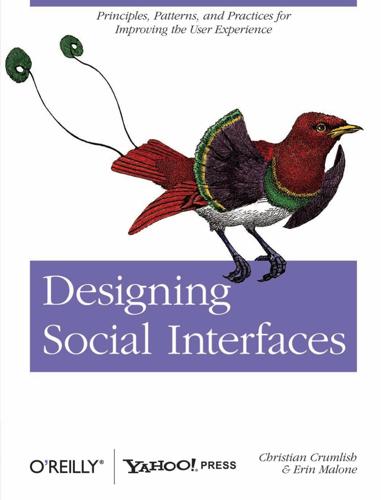
Designing Social Interfaces
by
Christian Crumlish
and
Erin Malone
Published 30 Sep 2009
Advance Praise for Designing Social Interfaces “A fabulous resource for companies looking to take advantage of the powers of the social web! This is a must-read for engineers and designers new to developing for social media, and an excellent reference for the seasoned designer.” —Abby Kirigin, Interaction design consultant/Product strategy advisor “Erin and Christian have put together an astounding collection of the most important social design patterns in use today. I recommend it for anybody building a social website or application... I wish I had this book three years ago!” —Joshua Porter, Founder of Bokardo Design and author of Designing for the Social Web (New Riders) “Christian and Erin have pulled together the current thinking on social design into a common language for driving interactions via usable open standards, open source, open processes, and interoperability.”
…
If we’re lucky, people will move through this lifecycle relatively quickly and with confidence. If that happens, they’ll be much more likely to share their enthusiasm with others. This is the ultimate goal: a virtuous cycle of sharing. —Josh Porter, Bokardo Design and author of Designing for the Social Web Download at WoweBook.Com 58 Chapter 3: You’re Invited! Invitations Invitations, both sending and acting upon them once received, are core to the viral nature of social web experiences. Receive Invitation What A user receives an invitation from a friend or connection to join a site (Figure 3-14). Figure 3-14. Invitation to join Twine.com. Download at WoweBook.Com Invitations 59 Use when Use this pattern when: • The user experience is enhanced by building a network of user connections. • Growth of the service is dependent on friends of friends. • You want to supplement traditional user acquisition with user-based referrals.
…
To danah boyd, for encouraging Erin to go foraging through her wonderful thesis document and allowing us to excerpt it in our section on Youth. To Billie Mandel, for crafting thoughtful guidance for those designing in the Mobile space. To Stuart French, for his expertise in social knowledge management in the enterprise environment. To Joshua Porter, for paving the way with his book, Designing for the Social Web, and for graciously adding his thoughts to our book. To Thomas Vander Wal, for thinking about the future in his essay on social metadata. To Chris Fahey, skeptic, coach, and friend, for his essay distinguishing patterns from cliches. To Tom Hughes-Croucher, YDN evangelist colleague and deep thinker on social application design, for his thoughts on users’ mental models.
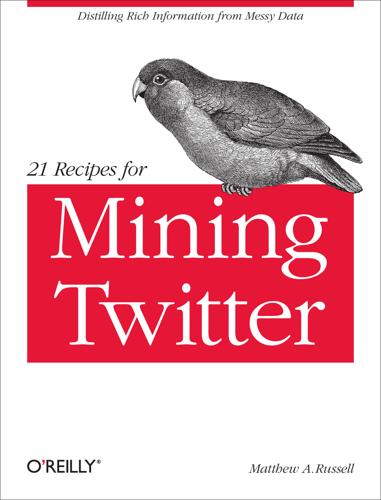
21 Recipes for Mining Twitter
by
Matthew A. Russell
Published 15 Feb 2011
ISBN: 978-1-449-30316-7 [LSI] 1296485191 Table of Contents Preface . . . . . . . . . . . . . . . . . . . . . . . . . . . . . . . . . . . . . . . . . . . . . . . . . . . . . . . . . . . . . . . . . . . . . vii The Recipes . . . . . . . . . . . . . . . . . . . . . . . . . . . . . . . . . . . . . . . . . . . . . . . . . . . . . . . . . . . . . . . . . . 1 1.1 1.2 1.3 1.4 1.5 1.6 1.7 1.8 1.9 1.10 1.11 1.12 1.13 1.14 1.15 1.16 1.17 1.18 1.19 1.20 1.21 Using OAuth to Access Twitter APIs Looking Up the Trending Topics Extracting Tweet Entities Searching for Tweets Extracting a Retweet’s Origins Creating a Graph of Retweet Relationships Visualizing a Graph of Retweet Relationships Capturing Tweets in Real-time with the Streaming API Making Robust Twitter Requests Harvesting Tweets Creating a Tag Cloud from Tweet Entities Summarizing Link Targets Harvesting Friends and Followers Performing Setwise Operations on Friendship Data Resolving User Profile Information Crawling Followers to Approximate Potential Influence Analyzing Friendship Relationships such as Friends of Friends Analyzing Friendship Cliques Analyzing the Authors of Tweets that Appear in Search Results Visualizing Geodata with a Dorling Cartogram Geocoding Locations from Profiles (or Elsewhere) 1 3 5 7 10 13 15 20 22 25 29 34 37 39 43 45 48 50 52 54 58 v Preface Introduction This intentionally terse recipe collection provides you with 21 easily adaptable Twitter mining recipes and is a spin-off of Mining the Social Web (O'Reilly), a more comprehensive work that covers a much larger cross-section of the social web and related analysis. Think of this ebook as the jetpack that you can strap onto that great Twitter mining idea you've been noodling on—whether it’s as simple as running some disposible scripts to crunch some numbers, or as extensive as creating a full-blown interactive web application.
…
All of the recipes in this book are written in Python, and if you are reasonably confident with any other programming language, you’ll be able to quickly get up to speed and become productive with virtually no trouble at all. Beyond the Python language itself, you’ll also want to be familiar with easy_install (http://pypi.python.org/pypi/setup tools) so that you can get third-party packages that we'll be using along the way. A great warmup for this ebook is Chapter 1 (Hacking on Twitter Data) from Mining the Social Web. It walks you through tools like easy_install and discusses specific environment issues that might be helpful—and the best news is that you can download a full resolution copy, absolutely free! One other thing you should consider doing up front, if you haven’t already, is quickly skimming through the official Twitter API documentation and related development documents linked on that page.
…
Twitter has a very easy-to-use API with a lot of degrees of freedom, and twitter (http://github.com/sixohsix/twitter), a third-party package we’ll use extensively, is a beautiful wrapper around the API. Once you know a little bit about the API, it’ll quickly become obvious how to interact with it using twitter. Finally—enjoy! And be sure to follow @SocialWebMining on Twitter or “like” the Mining the Social Web Facebook page to stay up to date with the latest updates, news, additional content, and more. vii Conventions Used in This Book The following typographical conventions are used in this book: Italic Indicates new terms, URLs, email addresses, filenames, and file extensions. Constant width Used for program listings, as well as within paragraphs to refer to program elements such as variable or function names, databases, data types, environment variables, statements, and keywords.
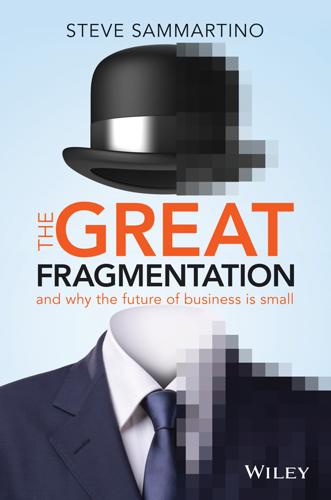
The Great Fragmentation: And Why the Future of All Business Is Small
by
Steve Sammartino
Published 25 Jun 2014
It will take a non-predictive mindset, one that’s curious to unknown possibilities. As the people shaping the connected world (entrepreneurs and corporations alike), we now have a chance to invent the commercial implications of the inevitable web of things. The social web has now connected us and introduced a new era for startups, so we should take the lead and create physical-goods mash-ups and value equations that couldn’t exist in a world without connectivity. And as for the social web, we’ll only ever know what people want to track, share and do when the tools are put in their hands. When people are able to track something, they start keeping score. We can’t help but turn things into a game.
…
If you’re a hard-working industrial participant, then it’s true that your co-workers have both a higher frequency and a higher proximity than any of your family members. We can only hope there are some people in the group we really enjoy being with. It’s probably why a lot of people take jobs — and leave bosses. Digital clustering In recent years, since the social web arrived, we’ve started escaping our geographic realities. Facilitated by these tools, there has been a classic emergence of digital cohorts based around shared value systems and interest. We can now choose the people we want to increase our frequency with even if we’re geographically constrained.
…
Sometimes we have to remind ourselves of how dramatic these changes really are. So many of the things we’re seeing are counter intuitive to what we’d expect from large corporations. Let’s take the simple example of the two biggest global social-media competitors, Facebook and Twitter. Both of them have cross-platform sharing. The entire social web has this. This means that users can choose to publish on one platform and have it automatically posted on the other platform. It’s very hard to imagine a six-pack of cola coming with three cans of Pepsi and three cans of Coca-Cola. But in the new world, there tends to be more focus on coopetition than there is on competition.

Merchants of Truth: The Business of News and the Fight for Facts
by
Jill Abramson
Published 5 Feb 2019
CHAPTER FIVE: BUZZFEED II On most summer afternoons: Alyson Shontell, “Inside BuzzFeed: The Story of How Jonah Peretti Built the Web’s Most Beloved New Media Brand,” Business Insider, December 11, 2012, https://www.businessinsider.com/buzzfeed-jonah-peretti-interview-2012-12. “Media and content: Erin Griffith, “Peretti: Human Curation Beats SEO in the Social Web,” Pando, September 19, 2012, https://pando.com/2012/09/19/peretti-human-curation-beats-seo-in-the-social-web/. At HuffPo he had focused: David Rowan, “How BuzzFeed Mastered Social Sharing to Become a Media Giant for a New Era,” Wired, January 2, 2014, https://www.wired.co.uk/article/buzzfeed. Moving into position: Kenneth Lerer, interviewed by Jill Abramson, New York, December 2, 2015.
…
,” New York, April 7, 2013, http://nymag.com/nymag/features/buzzfeed-2013-4/index4.html; “BuzzFeed Reaches More Than 130 Million Unique Visitors in November,” BuzzFeedPress, December 2, 2013, https://www.buzzfeed.com/buzzfeedpress/buzzfeed-reaches-more-than-130-million-unique-visitors-in-no?utm_term=.xnLjMyQOP#.iv3VEbLPo. To keep them happy: Charlie Warzel, “BuzzFeed Report to Publishing Partners Demonstrates Power of Social Web,” Adweek, August 29, 2012, https://www.adweek.com/digital/buzzfeed-report-publishing-partners-demonstrates-power-social-web-143194/. In the aftermath of the tragedy: Matt Stopera, “10 Reasons Everyone Should Be Furious about Trayvon Martin’s Murder,” BuzzFeed, March 22, 2012, https://www.buzzfeed.com/mjs538/10-reasons-everyone-should-be-furious-about-trayvo?
…
To get himself oriented, he roped in his old friend Duncan Watts and signed him to a contract that obliged him, every so often, to talk shop with Peretti over a beer. He dubbed it “the beer clause.” Together they devised a sort of litmus test that would be used to determine how well BuzzFeed’s content reproduced across the social web, expressed in the form of a quotient called Viral Rank—essentially the distillation of how likely a reader was to share the post with friends. If the post on “Interspecies Friends” mustered a higher Viral Rank than the post on a novelty line of lingerie made out of bacon, that was a hint to pivot toward animals and away from edible XXX nightclothes.

Speaking Code: Coding as Aesthetic and Political Expression
by
Geoff Cox
and
Alex McLean
Published 9 Nov 2012
Purification Responding to paradoxes of this kind, the Museum of Ordure is a “self-institution” that has a special interest in the management of human waste and its impact on the concept of the public sphere and civil society.23 Its early policies on preservation included running a server-based script that accelerated the process of decay of its digital objects, resulting in unpredictable and often sudden glitches appearing in the images and captions that constituted its public collection.24 Since the identification of “ordure” (such as rubbish, waste, anything unclean, or shit)25 indicates value judgment, issues related to the social web have further inspired the development of the museum’s website, in taking the detritus of communications and cataloguing it as empty speech acts. A dynamic collection of images and captions is currently produced with feeds from sites like 4chan, mixing diverse contents (from popular trivia such as images of cats to news reports on contemporary protest movements); its Twitter feed @museumofordure, although since suspended, used the hashtag #ordure and retweeted various others (like #revolution and #insurrection).26 Using techniques similar to other cultural institutions’ addressing the issue of public engagement, the museum’s aim is to reveal the excess of capitalist production.27 Its core purpose is further explained, in the About section of the website.28 Inspiration also derives from Dominique Laporte’s History of Shit (first published in French in 1978), which verified modern power to be founded on the aesthetics of the public sphere and in the agency of its citizen-subjects, but that these are conditions of the management of human waste.
…
The duplicity is evident in the way those deemed to be a danger to national security can be taken into custody and detained in ways that erase their individual human rights, turning them into what Agamben calls “noncitizens.”88 If the sovereignty-in-networks is exceptional too, it is also demonstrated in online platforms that offer the promise of democracy yet in practice are only served through centralized ownership and control. For instance, the social web mediates social relations in this manner, offering the freedom to communicate but through the exception that relates to both state and market principles, in parallel to what has already been said about the conditional aspects of freedom of expression more generally. Facebook regularly shares information with government agencies and purges activist’s accounts, such as those of campaigners trying to organize antiausterity protests in 2011, including the UK Uncut and Occupy movements.89 A closer look at the terms of service of these platforms confirms ways that ownership is carefully managed, parodied by a consumer advocacy blog with the suggestion for new terms: “We can do anything we want with your content.
…
Facebook regularly shares information with government agencies and purges activist’s accounts, such as those of campaigners trying to organize antiausterity protests in 2011, including the UK Uncut and Occupy movements.89 A closer look at the terms of service of these platforms confirms ways that ownership is carefully managed, parodied by a consumer advocacy blog with the suggestion for new terms: “We can do anything we want with your content. Forever.”90 Users are happily granted access to the means of production but not ownership. The underlying contradiction is clear: “The social web facilitates an unprecedented level of social sharing, but it does so mostly through the vehicle of proprietary platforms.”91 In such ways, freedom is extracted by a service to serve the free market, not free expression. In terms of the market, the exception is that platforms take what is given for free and monetize it.
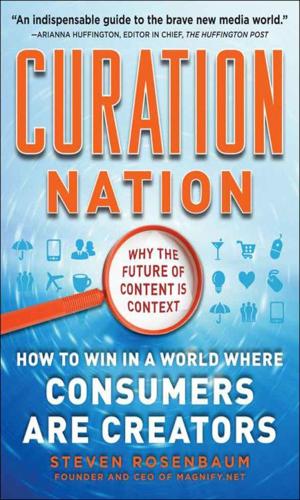
Curation Nation
by
Rosenbaum, Steven
Published 27 Jan 2011
To find the best and most relevant content and bring it forward. The people who choose to take on this role will be known as Content Curators. the future of the social web will be driven by these Content Curators, who take it upon themselves to collect and share the best content online for others to consume and take on the role of citizen editors, publishing highly valuable compilations of content created by others. In time, these curators will bring more utility and order to the social web. In doing so, they will help to add a voice and point of view to organizations and companies that can connect them with customers—creating an entirely new dialogue based on valued content rather than just brand created marketing messages.
…
So you can see that the PR folks and the advertising folks don’t look at the world the same way. Maheu points to campaigns like the Old Spice Man, which was done by a competitive agency, as evidence that broadcast television still drives buzz and starts consumer conversations. But no one denies that the social Web was a massive accelerant for Mr. Spice. While Rubel talks about raindrops, Maheu still wants to seed the clouds. There’s a difference in worldview. “I think marketing has evolved into two tiers … one which means you still need a campaign, you need points of view,” Maheu says. “You need brand to have the courage to say something and to engage with consumers on something that’s going to be interesting.”
…
What she did was bring together a remarkable mix of speakers, guests, and attendees at what was perhaps the most groundbreaking technology conference of its time: PC Forum. Now Dyson is focused, mostly, on two areas of interest: space exploration and in the related fields of health care and genetics. But she remains one of the most thoughtful participants in the emerging social Web. “There will be so much content that people will need it filtered: by topic, by whether their friends liked it, by popularity,” Dyson says. She is seeing the innovation shifting from searching to filtering: “Overall, there will be some recognition that filtering by humans—they used to be called editors—can be a useful function.
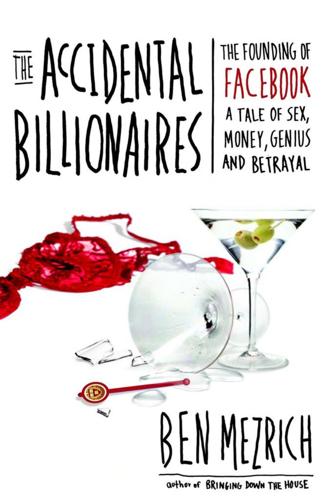
The Accidental Billionaires: The Founding of Facebook: A Tale of Sex, Money, Genius and Betrayal
by
Ben Mezrich
Published 13 Jul 2009
They wanted to shut thefacebook down? Could they even do that? Sure, Mark had met with them, had e-mailed with them, had led them on. But he hadn’t signed any contracts, and hadn’t written any code. And to Eduardo, thefacebook seemed so different. Well, it was also a social Web site—but there were dozens—if not hundreds—of social Web sites. Hell, every computer science major on campus had a social Web site under development. That Aaron Greenspan kid had even called part of his networking portal “the facebook,” or something like that. Did that mean they could all sue one another? Just for having similar ideas? “I talked to a three-one at the law school,” Mark said.
…
That couldn’t be true. Nine hundred students had signed up to his Web site in four days? How was that possible? Zuckerberg didn’t know nine hundred people. He didn’t know four people, as far as Tyler could tell. In Tyler’s view, the kid had no friends. He had no social life. How the hell had he launched a social Web site and gotten that kind of response in four days? “I checked the site out as soon as I read this. It’s true, the thing is really exploding. You have to have a Harvard e-mail, and then you get to upload your picture, and personal and academic info. You can search for people according to interests, and then when you find your friends, you make a network out of them.”
…
“There are things that seem real similar, Dad.” The key, to Tyler, was the setting, the exclusivity of it, that really separated what Mark had made from social network sites like Friendster. You had to have a Harvard e-mail to enter Mark’s site—and that had been their idea, too, to launch a Harvard-centric social Web site. The very idea of making everyone who joined have an .edu e-mail address was completely innovative, and potentially very important to the initial success of the site. It was sort of a screening process that kept the thing exclusive and safe. Maybe a lot of the features Mark had put in thefacebook.com were different—but the overall concept, to Tyler, seemed too similar.
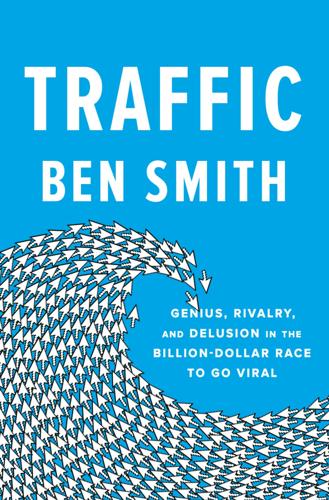
Traffic: Genius, Rivalry, and Delusion in the Billion-Dollar Race to Go Viral
by
Ben Smith
Published 2 May 2023
Privately, though, Steinberg knew he’d taken on a questionable proposition when he accepted Jonah’s offer of equity in BuzzFeed in exchange for its top business job. While he dreamed of a big exit, his job was to bring in advertising revenue—but Jonah barely had a business. What he had was a big idea, and a great story. Jonah thought that the social web would bring with it a new kind of advertising—not the grim little boxes that lined websites the way they lined newspapers, but lavish, funny, and creative content that would recall the Mad Men era. This kind of advertising would be “native content”—native to the web, native to BuzzFeed. As he had learned from the NRA experiment, ads wouldn’t need to go wildly viral in order to spread widely with low distribution costs, because at least some consumers shared ads with one another instead of seeing them only when someone paid to display them.
…
I kept interrupting the conversation to check my BlackBerry for tips about Texas governor Rick Perry’s surging presidential campaign. As usual, I was slightly more interested in the food than you’re supposed to be at a business lunch, and finished my lobster roll as Jonah was just getting started on his fish. Jonah’s pitch included a haze of terms I didn’t quite understand—“social web” and “viral lift” and “media company.” There was one line, though, that stuck with me: the “bored at work network.” Politico had been groundbreaking, too, in its time, part of a generation that included the tech site The Verge and the commentary site Vox, blending the technology of blogging with the professional tools of journalism.
…
So he moved on quickly, immediately calling up a former Huffington Post editor, Nico Pitney, about the job. That evening, I mentioned to my wife, also in digital media, that I’d had a weird, interesting conversation with this guy Jonah, who seemed smart but, obviously, I’d turned him down. She translated his talk about the social web into a language I could understand—big stories, and scoops, spreading around the internet—and told me I was an idiot. Then I called Peter Kaplan, who told me I’d be crazy not to do it, and who explained something crucial to me: Every presidential campaign cycle is defined by a new media outlet.
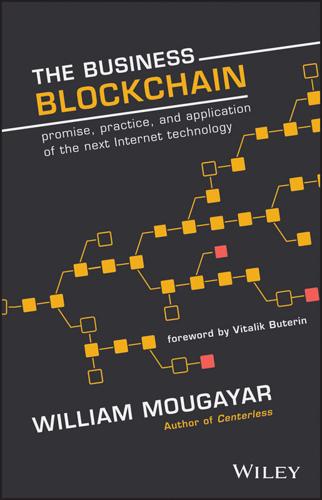
The Business Blockchain: Promise, Practice, and Application of the Next Internet Technology
by
William Mougayar
Published 25 Apr 2016
Let us remember the key mini-revolutions that the Internet brought us since 1994: Personal Communications, Self-Publishing, E-Commerce, and the Social Web. In hindsight, each of these four phases was defined by the functions they disrupted: the post-office, print media, supply chains/physical stores, and the real world. PHASE GOAL DISRUPTING OUTCOME Communications Reach anyone in the world Post office Personal Communications Publishing Spread ideas Print media Self-publishing Commerce Trade Supply chains and physical stores E-Commerce Social Interactions Connect with friends Real world Social Web Asset Transactions Manage what you own Existing custodians Trust-based Services The irony of this situation is that blockchain-based applications can replace any Web application.
…
You create value by running services on the blockchain. Blockchain services will succeed by creating a new ecosystem (just like the Web did), and it will get stronger on its own over time. There is a precedent to what has already happened in cyberspace. With the Internet, we had e-commerce, e-business, e-services, e-markets, and later the social web arrived in the form of large-scale social networks. Each one of these segments created its own wealth. Thus far, there is no clear segmentation in the emerging field of “blockchain services,” but they will be in the form of services where a trust component is stored on the blockchain (identity, rights, membership, ownership, voting, time stamping, content attribution), services where a contractual component is executed on the blockchain (wagers, family trusts, escrow, proof of work delivery, bounties, proof of bets, proof of compliance), decentralized peer-to-peer marketplaces (such as OpenBazaar or La’Zooz), and Distributed Autonomous Organizations (DAO) whose governance and operations run on the blockchain.
…
Hammer, Michael, and James Champy. Reengineering the Corporation: A Manifesto for Business Revolution. New York: HarperCollins, 1993. Kelly, Kevin. Out of Control: The New Biology of Machines, Social Systems, & the Economic World. New York: Basic Books, 1995. Mougayar, William, and David Cohen. “After the Social Web, Here Comes the Trust Web.” TechCrunch. 2015. http://startupmanagement.org/2014/04/10the-bitcoin-and-cryptocurrency-investment-landscape/. Mougayar, William. Opening Digital Markets: Battle Plans and Business Strategies for Internet Commerce. New York: McGraw-Hill, 1997. ———. “How the Cryptoconomy Will Be Created.”

Without Their Permission: How the 21st Century Will Be Made, Not Managed
by
Alexis Ohanian
Published 30 Sep 2013
Everyone who creates something online has lost control of their message but in the process has gained access to a global audience. Mister Splashy Pants is a story about the democratization of content online—starring a whale—and it demonstrated how little control we have over our brands. It turns out we never had control, only now we realize it. Before the social web, we had little idea of what people actually thought about us—now we know, and when like-minded people band together, they wield a really big stick. The talk is over. Applause. Even a few “Woo!”s from the crowd. Nailed it. I’d given a few non-CompUSA talks before then, but once the video of my TED talk hit a million views and was front-paged on reddit,4 I became a known “public speaker.”
…
The first week was slow, and we’d only raised $10,000 of Lester’s budgeted $39,000 goal, which would cover the entire production of the album, payment for band members, and fulfillment of the various rewards, such as T-shirts and even signed cowbells. Turns out I’d forgotten to upload the trailer to YouTube: I’d only uploaded it to Kickstarter, where it couldn’t be as easily shared. My bad. As soon as my foolishness was corrected, we raised more than $18,000 in a single day as the video blazed around the social web. This buzz triggered attention from bloggers, who covered the story, which eventually connected us to a writer at CNN, who wanted to write an article for the website. We still had five thousand dollars to go when that story hit the front page of CNN.com and stayed there for most of Christmas Eve—Dylan and Lester grinning for all the world to see.
…
And this time, it was all going to belong to him. It made me so proud to finally say, “Lester, your time has come today.” The industry of art, like other industries, is dramatically changing, thanks to the open Internet. For some time, only a few fortunate individuals who had wealthy patrons were able to produce art. But today, the social web has made it possible for any artist with a good idea and an Internet connection to create, publicize, and monetize his art. As power shifts from incumbents trying to preserve outdated business models to newly empowered artists, it’s bound to make former gatekeepers uncomfortable, even scared. That’s usually a positive sign.

Smart Cities: Big Data, Civic Hackers, and the Quest for a New Utopia
by
Anthony M. Townsend
Published 29 Sep 2013
But it wasn’t until the 1990s that personal mobility came to so dominate and define our lives and demand a telecommunications infrastructure that could keep up. By freeing us to gather where we wish, our mobiles are a catalyst for density; the most robust cellular networks are those that blanket stadiums in bandwidth so spectators can share every score by talking, texting, and photos sent to the social web. But these same networks can be a substrate for sprawl, a metropolitan nervous system conveniently connecting our cars to the cloud. They may be our most critical infrastructure, and seem to be our highest priority. Even as we struggle to find the public will to fund basic maintenance for crumbling roads and bridges, we gladly line up to hand over hard-earned cash to our wireless carriers.
…
But cleverly, it was also a way of soliciting updates and corrections about the real world from the app’s users, whom Vindigo recruited to report when someplace went out of business, for instance. For Crowley, it was an adroit solution to the lack of wireless connectivity, and an important lesson in hacking around gaps in the city’s still-incomplete digital infrastructure. After hours, Crowley continued to work on Dodgeball, which was starting to show the serious potential of the social web. By the end of 2000, the site had hundreds of users who had contributed over sixteen hundred reviews of restaurants and bars in Manhattan and four other cities.16 But it remained a hobby. As Crowley recalls his days at Vindigo, “I was trying to get them to pull social in, but there was just no concept of social at the time.”17 But before he could get anything started, he was laid off once again as the venture sputtered out.
…
Being your own lead user is always hard work, but when your product gives you an easy way to find a place to drink and meet new people, it takes its toll. Surrounded by this fast-growing band of coders and designers, Crowley was well on his way to joining the ranks of Mark Zuckerberg of Facebook and Jack Dorsey of Twitter, the princelings of the social web. On a screen mounted by the elevator, Foursquare’s torrent of check-ins unfolded in real time. An animated globe spun slowly, revealing hot spots of check-ins flaring up in a self-service census of the creative class. Berlin, Stockholm, and Amsterdam burned bright as smart young things and their smartphones set out for dinner, drinks, and dancing.
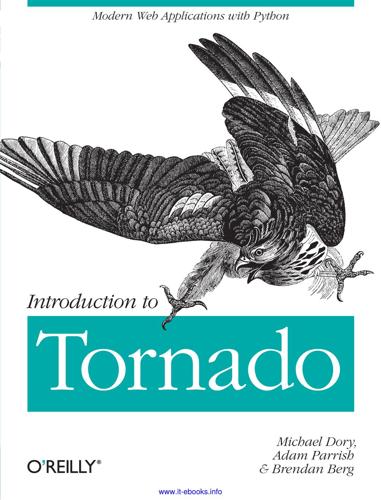
Introduction to Tornado
by
Michael Dory
,
Adam Parrish
and
Brendan Berg
Published 29 Sep 2011
Although it varies from system to system, most Linux distributions have an 8 MB default thread stack size. Apache’s architecture scales unpredictably under load, and maintaining a large pool of open connections that are each waiting for data can easily consume all the free memory available to a server. Most social web applications display real-time updates for new messages, status changes, and user notifications, which require the client keep an open connection waiting for any server responses. These HTTP keep-alive or Comet requests can quickly saturate Apache’s maximum thread pool. Once the thread pool is depleted of available workers, the server is unable to respond to new requests.
…
SSL Decryption with Nginx Developers of applications that transfer personal information between the browser and client need to take special care to protect that information from falling into the wrong hands. With unsecured WiFi access as common as it is, users are susceptible to cookie hijacking attacks that compromise their accounts on popular social networking sites. In response, most major social web applications have made their sites either use encrypted protocols by default or as a user-configurable option. Coincidentally, we can use for Nginx to decrypt SSL encryption on incoming requests and distribute the decoded HTTP requests to the upstream servers. Example 8-2 shows a server block that decrypts incoming HTTPS requests and forwards the decrypted traffic using the proxy directives we saw in Example 8-1.
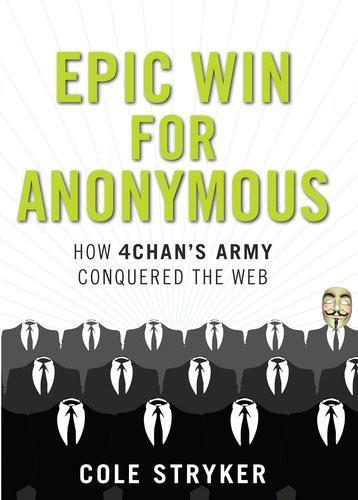
Epic Win for Anonymous: How 4chan's Army Conquered the Web
by
Cole Stryker
Published 14 Jun 2011
As Director of the WELL I spent considerable time trying to understand how ad hoc groups worked things out in cyberspace, and how people attempted to achieve their purposes through monitors and keyboards. There is still no bright line separating casual from professional conversation on the Web. The answer to the question, “Who IS a journalist?” only gets hazier every day. Every day millions of false rumors are intentionally planted on the web. Tools are being invented to help support the social web’s ability to self-correct. Given that the WELL was founded by optimistic hippies, I assumed these geeks on the forefront of technology would have high hopes for their hobby, but I was surprised to find the opposite. “I had no idea the Internet would expand to the scale it is today. Absolutely no idea,” says Figallo.
…
We focused on making great things and using what tools we had at the time—email, IM, traditional PR and maybe a little LiveJournal—to get it in front of people and get it to spread. But for those who wanted to pay to catalyze a meme, it was generally pretty sketchy. Lots of pretending to be enthusiasts on message boards. Webb spends a lot of time coming up with memes for clients. Today he doesn’t have to start from square one every time because the social web allows the Barbarian Group to maintain a constant identity on Twitter, Facebook, and the blogs of its employees. And they don’t just blog about marketing stuff. Webb himself maintains a Tumblr blog dedicated mostly to the indie rock of his youth. His followers recognize that he represents an ad agency, but he’s also a real human being.
…
Publishing, show business, media, art and design too. 4chan shows us that there are enough creative people out there doing for free, and for zero recognition, what professionals have been paid to do for centuries. Furthermore, we have learned that what separated professional creatives from the amateurs wasn’t so much a level of talent, but access to distribution channels. Now that the social web has provided so many amateurs with a way to reach millions, they’re outshining the pros everwhere. Chapter 7 * * * The Meme Life Cycle THROUGHOUT 2010 I wrote for an Internet culture blog called Urlesque. Our stated goal was to “uncover bits of the web.” We reported most memes that came along, but for me the most interesting assignments allowed me to cover the way memes spread.
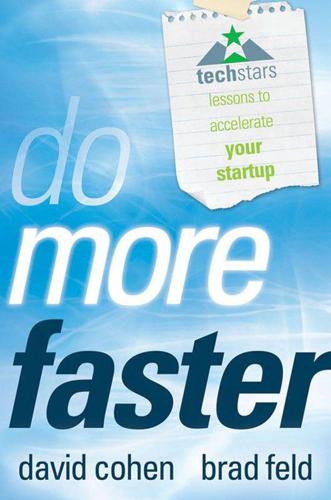
Do More Faster: TechStars Lessons to Accelerate Your Startup
by
Brad Feld
and
David Cohen
Published 18 Oct 2010
I came up with the idea of a thing I called the “Zenie Bottle”—a beautiful, collectible physical object (similar to a Lava Lamp) linked to a social web site mash-up. I pulled the plug on the project a year later. Here is where I went wrong. I built the business for my ego, not the market. The idea I started with was very simple: sell a novelty item that was fun to collect. The Zenie Bottle was a pretty glass bottle filled with a colorful substance that, when shaken, looked like a genie was living inside. But I didn't feel like selling a novelty item was a big enough idea, so I added elements to the business to make it more complex and hip. I attached a social web site mash-up in which the owner of a Zenie Bottle would have a virtual bottle on the Web where they could put pictures, music, and video into it so they could share it with their friends.
…
I told myself that I would be proud of my accomplishment if we had tremendous success. But that wasn't enough—I needed to be proud of what I was working on every single minute of every single day. Ultimately, we were underfunded for the scope of our effort. We weren't sure of our identity. Were we a novelty item, a social web site mash-up, or an entertainment property? Nope—we were all three! In each category, someone other than us was already the winner. While combining all three may have worked, it would require Herculean efforts to rise above the din of other more focused companies. We were hoping to become a fad—with very little effort.
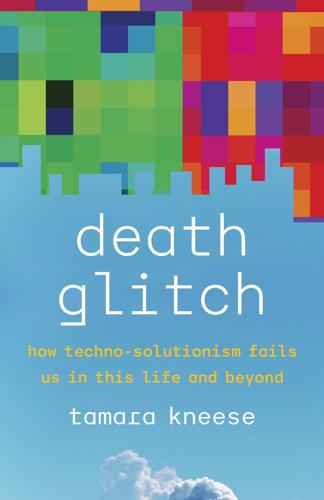
Death Glitch: How Techno-Solutionism Fails Us in This Life and Beyond
by
Tamara Kneese
Published 14 Aug 2023
Digital forms of surveillance relate to histories of chattel slavery, colonialism, and early techniques of policing and governmentality.55 Yet data are not reducible to their uses in structures of oppression: data are also metaphysical, relational objects.56 Data contain an existential quality, what the media theorist Amanda Lagerkvist calls “digital thrownness,” or gesture toward the mythological and the sublime.57 The metaphysical, speculative qualities of data imaginaries are essential to understanding how data-as-representation and data-as-infrastructure (supply chains, logistics, platformization) do not quite add up to an afterlife, even if there is a feeling or hope that they might.58 Data are ghostly, but the platforms and the data attached to them yield material effects.59 “The network society” refers to the sweeping impacts of information technology, which connects people and institutions from around the globe, altering power structures and cultural flows.60 Facebook, Twitter, Google, and other social media behemoths—largely based in the greater San Francisco Bay area—are part of a period in technoculture often referred to as Web 2.0, to distinguish these new corporate models from the supposedly static HTML-driven web before the twenty-first century.61 Popularized by the tech marketer and publisher Tim O’Reilly in 2004, the term “Web 2.0” emphasizes user-generated content, collaboration, and interaction on a dynamic web, made manifest in entities like Wikipedia, the perennial favorite example of crowdsourced knowledge production. Web 2.0 logics influenced the rise of platform capitalism and immaterial labor while influencing new modes of social organizing, perhaps even catalyzing revolutionary movements. At least that is one popular narrative.62 Some theorists associated the burgeoning social web with the productive power of networks and what they might build. In theory, networked technologies mediate shared experiences and democratic forms of communication and ritualized exchange.63 Critics, however, picked up on not only the political or economic ramifications of the network society but its effects on personal relationships.
…
From the small virtual communities of the early 1990s web sprang a new kind of connectivity attached to corporate platforms, becoming a reified “social network” that began with sites like LiveJournal (1999), Friendster (2002), MySpace (2003), and Facebook (2004). The platformization of the web expanded the reach of social networking sites and helped them infiltrate cultural production, government agencies, and financial structures.29 By the early 2000s the social web seemed to be, at least in theory, a place for “everybody.”30 As more people went online, online death became more visible. Between 2004 and 2010, the height of Web 2.0, millions of people around the world were producing social media profiles and other shareable content as intimate parts of themselves.31 The semi-public or sometimes public nature of social media profiles provides an archive of these momentary interactions, securing a network of relationships over time.
…
What is missing from the pages of @heaven, the backstory of Syndicus and Mandel’s sometimes troubled relationship, is notable: Syndicus’s caregiving responsibilities in relation to Mandel and others and her own struggles with cancer. Enter Illness Blogs People with cancer and other chronic illnesses found community and support on message boards and in discussion forums like the WELL. With the growth of the social web in the early 2000s and with the help of new sites like LiveJournal and Blogger, people created dedicated spaces for personal narratives and self-reflection. Rather than posting to a message board under a specific topic heading, people could craft long-form prose about their experiences, a form of public diary-keeping.35 Aside from Mandel’s Local Bug Report posts, there are other prominent examples of illness narratives that became books or were otherwise translated into permanent objects.
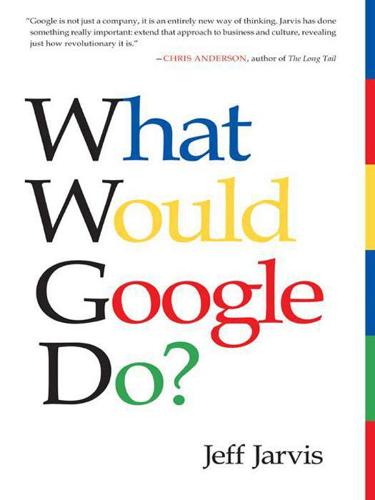
What Would Google Do?
by
Jeff Jarvis
Published 15 Feb 2009
The key to offering elegant organization to individuals or groups—the key to all platforms—is to enable others to use the tool as they wish. They know their needs. Such openness and flexibility also enables more groups to form. Each one may be small, but altogether, they add up to a larger network of groups—a mass of niches. There is an ongoing debate about who will win the social space, what company will own the social web. That’s a wrong-headed view of the opportunity. The internet already is a social network. So is life. The internet merely provides more means to make more connections. The winner is not the company that gets us to come in and be social inside a wall: the social AOL or MySpace or, for that matter, Facebook.
…
In 2004, Howard Dean’s presidential campaign used blogs and discussion as well as in-person Meetups to organize volunteers and raise money. Barack Obama’s 2008 campaign made brilliant use of social tools, including Facebook and the iPhone, to organize rallies and rake in donations. More profound, it used the social web to organize a movement. It also took advantage of the fact that other communities—such as that inside the DailyKos blog—had gathered around Obama. It didn’t hurt that one of Facebook’s founders, Chris Hughes, was an adviser to Obama’s campaign. We want to be connected. In the internet age, we have gained a reputation for being antisocial, for sitting on our couches, laptops on laps, earphones on ears, never talking to anyone.
…
See search-engine optimization Sequoia Capital, 189 Shardanand, Upendra, 35 Shirky, Clay, 50, 60, 151, 191–92, 197, 235–36, 237 Silverman, Dwight, 13 simplicity, 114–16, 236 SimplyHired.com, 39 Sirius Satellite Radio, 131 Skype, 31, 50 Smart Mobs (Rheingold), 106 Smith, Quincy, 38 Smolan, Rick, 140 social business, 158 social graph, 49 socialization, 211–12 social-media, 172–73 social responsibility, 47 social web, 51 Sorrell, Martin, 42 Sourcetool.com, 100 specialization, 26–27, 154 speed, 103–4, 105–6 Spitzer, Eliot, 96 splogs, 43 Starbucks, 60–62 Stern, Howard, 95, 131–32 Stewart, Jon, 95–96 StudieVZ, 50 Supreme Court, 225 Surowiecki, James, 88 talent, 146, 240 Tapscott, Don, 113, 151, 225 targeting, 151, 179–80 teaching, 193, 214–15 teamwork, 217 TechCrunch, 107, 192 Technorati, 15, 20 TechTV, 132 telecommunications, 165–71 Telegraph Media Group, 123 television, 84 cable, 167 decline of, 65–66 listings, 109–10 networks, 135 Television Without Pity, 135 Tesco, 179 Tesla Motors, 175 testing, 214 Threadbanger, 180 Threadless, 57 TimesSelect, 78 Time Warner, 80–81 Tobaccowala, Rishad, 114, 121–22, 145–48, 151, 177 on Apple, 228 toilet paper, 180–81 TomEvslin.com, 31 Toto, 181 Toyota, 174–75 transparency, 83, 97–98 journalism and, 92 PR and, 223 Tribune Company, 129 Trippi, Joe, 238 trust, 74, 170 control v., 82–83 in customers, 83–84 Tumblr, 192 Turner, Ted, 134 TV Guide, 109–10 20 percent rule, 111, 114 23andMe, 205 Twitter, 20, 126 Dell and, 46 mobs and, 107 real time and, 105–6 Tyndall, Andrew, 220 Union Square Ventures, 30 University of Phoenix, 217 Updike, John, 138 The Vanishing Newspaper (Meyer), 125 Vardi, Yossi, 31–32 Vaynerchuk, Gary, 107, 157–61 VC.

WikiLeaks and the Age of Transparency
by
Micah L. Sifry
Published 19 Feb 2011
Because this is your democracy, and as I said throughout the campaign, change never begins from the top down. It begins from the bottom up.6 A day later, on February 9, 2009, selling his recovery plan at a town-hall meeting in economically devastated Elkhart, Indiana, he went further in explaining his vision for using the social web to involve the public in the watchdogging of government spending: We’re actually going to set up something called Recovery.gov—this is going to be a special website we set up, that gives you a report on where the money is going in your community, how it’s being spent, how many jobs it’s created so that all of you can be the eyes and ears.
…
In no way has a community of citizen inspectors general been formed, and it’s not surprising that Recovery.gov has had no discernible effect on public trust in Obama. Over on Inspector General Devaney’s “Chairman’s Corner” blog, a handful of posts (less than one per month!) demonstrate further how out of touch he is with how to engage the social web. In his March 2010 post, he lambasted “gratuitous criticism from some journalists and Internet grouches”9 who pointed out problems with Recovery.gov’s public data, instead of embracing their comments as constructive. My colleague Clay Johnson, then director of Sunlight Labs, chided Devaney for how poorly he dealt with online criticism, writing: “You could have created a spirit of civil openness and participation like no other in an incredibly charged political environment.

Data for the Public Good
by
Alex Howard
Published 21 Feb 2012
It’s not just the consumption but the co-production of government services and democracy.” The Promise of Data Journalism The ascendance of data journalism in media and government will continue to gather force in the years ahead. Journalists and citizens are confronted by unprecedented amounts of data and an expanded number of news sources, including a social web populated by our friends, family and colleagues. Newsrooms, the traditional hosts for information gathering and dissemination, are now part of a flattened environment for news. Developments often break first on social networks, and that information is then curated by a combination of professionals and amateurs.
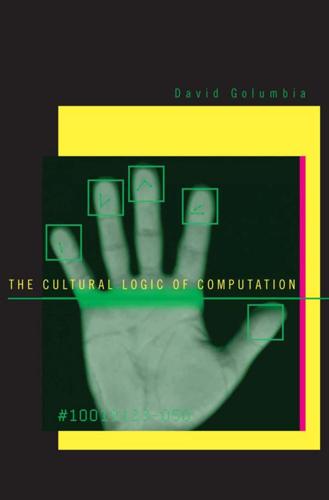
The Cultural Logic of Computation
by
David Golumbia
Published 31 Mar 2009
But Birkerts also points to a line of critique that must be taken more seriously, which goes something like this: how do we guarantee that computers and other cultural products are not so pleasurable that they discourage us from engaging in absolutely necessary forms of social interaction? I see the current emphasis on the “social web” as not so much an account of a real phenomenon as it is a reaction to what we all know inside—that computers are pulling us away from face-to-face social interactions and in so doing removing something critical from our lived experience. While I am more skeptical about the implicit value of reading per se than Birkerts, the question of what that activity is being replaced with, raised more pointedly in Bauerlein (2008), must give anyone pause.
…
Clearly the engineering presumption is that they are hierarchical, and this presumption emerges from engineers who are somewhat familiar with texts and language; one can only imagine the presumptions of engineers who do not work at all closely with texts. Closely allied to the emphasis on hierarchy is an emphasis on categorization. Every in contemporary computing one sees a profound attention to categories—one might even call it a mania for classification. In the contemporary so-called “Web 2.0” and “social web,” one of the main technologies is an XML-fueled insistence on “taxonomy,” “folksonomy,” and “ontology.” These words cover an engineering presumption that we would be much better off if the data on the web was collected into hierarchically arranged categories—categories that are ultimately meant for machine processing more than for human processing.
…
See Individualism Postal, Paul, 43, 49, 54–55, 60, 70; on Mohawk language, 43 Postcolonialism, 131, 145, 203 Posthuman, 2 Programming, 41, 101, 123, 164, 198, 202, 209–211 Programming languages, 19, 48, 84, 93, 117–121 Prototype theory, 115 Psychoanalysis, 33n1, 78, 110, 185–187, 224 Putnam, Hilary, 6, 36, 42, 55, 59–79, 84, 109, 185, 192, 195, and philosophical functionalism, 59–64 Quine, Willard van Orman, 36, 50, 55, 57, 60–61, 63–64, 69, 74, 76 Race, 20, 41, 68, 78, 133–134, 137–144, 201–203 Racialism, 51n9, 131–133, 143, defined, 131n1 Racism, 51, 133 RAND corporation, 32, 193, 195 Rand, Ayn, 51, 78 Rationalism, 1, 8, 10, 13–14, 27, 31–33, 46–58, 67, 70, 109–111, 189–196, 202, 218–219 Relativism, 64, 69, 76–78 Representational Theory of Mind (RTM), 63 Responsibility, 32, 119, 156, 164, 173–174, 194, 224 Revolution, 43, 129, 152, 154, 163, 215–216 RFID (Radio Frequency Identification Device), 176 Rhizomes, 23, 52, 153 Robbin, Jonathan, 131 RTS (Real-Time Strategy) games, 135–144, 167–168 de Saussure, Ferdinand, 45, 50 Savoir, 10, 202, 205–206 Schumpeter, Joseph, 129, 147 Screen-present, 213 p 256 Searle, John, 54–55, 64, 67, 92, 98 Semantic Web, 105, 112–119, 124–125, 208 Service economy, 130, 173 SGML (Standard Generalized Markup Language), 106–108, 111, 113, 115 Shannon, Claude, 32, 36, 83, 86, 90, 222 SHRDLU, 98–103 Simon, Herb, 36, 202 Skinner, B. F., 36, 41, 55, 57 Slavery, 12, 26, 188–189 Simulation, 12, 22, 36, 69, 75, 99–101, 136, 167, 204–205, 216–217 Smoothness (vs. striation), 11, 22–24, 134, 149, 156–162, 175, 217 Soar, 202 Social web, 6, 211 Spivak, Gayatri Chakravorty, 14, 16, 121–122 Spreadsheets, 157–161, 198, 201, 212 Standard languages, 92, 95, 119–121 Standardization, 115, 118–122, 124, 150 Standards, 6, 107, 113–115, 176 Star Trek, 78, 85 State philosophy, 8–11, 76 Strauss, Leo, 192–194 Striation, 11, 33, 52, 62, 72, 129–134, 140–144, 151–177, 208, 213, 217, 219; defined, 22–24 Strong AI, 84, 98, 106n2, 201–202 Subject-Oriented Programming, 210–211 Supply chains, 146–147, 170, 175–176 Supply-Chain Management (SCM), 164, 172, 175–176 Surveillance, 4, 13, 60, 149–152, 161–162, 176–177, 182, 213 Sweezy, Paul, 129 Syntax, 34, 37, 40, 42, 47, 66–67, 70, 94, 189–192, 195 Taylor, Frederick, 158, 161–162 Territorialization, 23–24, 153–154 Text encoding, 107–108 Text Encoding Initiative (TEI), 111–112 Text-to-speech (TTS) systems, 93–97 Turing, Alan, 12, 32, 37, 39–40, 62, 70, 83–84, 86, 89, 216 Turing Machine, 7, 19, 35–37, 40, 47, 59, 62, 75, 166, 201, 216 Turing Test, 84–85, 98, 136 Turkle, Sherry, 185–186, 207 Turner, Fred, 5, 152, 219 Index Unicode, 124 Virtuality, 22–23 Voice recognition, 94–95, 97 von Neumann, John, 12, 32, 35, 37, 83, 195, W3C (World Wide Web consortium), 113, 117–118 Wal-Mart, 79, 147, 174–176 Wark, McKenzie, 5, 23, 25, 143–144, 151, 221 Weaver, Warren, 86–94, 98 p 257 Web 2.0, 208, 211 Weizenbaum, Joseph, 4, 53, 71, 207 Wiener, Norbert, 4, 87–92, 97 Wikipedia, 5, 26, 124, 208, 219 Winograd, Terry, 5, 71, 98–103 Wittgenstein, Ludwig, 14–15, 37, 55–56, 62, 64, 68, 71, 74–80, 108–109 Word processors, 112, 116, 157 XML, 111–119, 211 Zinn, Howard, 143 Žižek, Slavoj, 187, 224
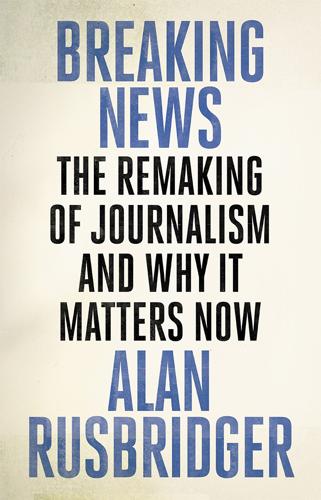
Breaking News: The Remaking of Journalism and Why It Matters Now
by
Alan Rusbridger
Published 14 Oct 2018
It was new, but it was old. But ‘I participate’ was something entirely different. Most editors wanted to be in control. The one obvious thing about the social web was that no one was in control. Anyone could do, or say, anything. That might please free speech fundamentalists or anarchists, but was hardly cheering news to most journalists. If you had assembled a hundred journalists back in the office and discussed with them the nature of the social web. It might have looked a little like this: • 10 per cent: Habitual users in their personal and professional lives. ‘It’s so obviously the future, why can’t we go faster?’
…
They were evenings of bitter rivalries; of tribal raucousness; of punches and epic hangovers. We were, in effect, building two cultures under one roof and, as long as one didn’t unduly threaten or impinge on the other, we could muddle through. For now. Emily had been right about Web 2.0 – as no one was now calling it. It was all anyone in the US was interested in. The social web, social media. None of the terms being used to name or describe it captured the dramatic upheaval of the revolution we were now entering. It was as if someone had tried to summarise the effects of Gutenberg as ‘distributed publishing’. Social media was where the users, the money, the technology and the energy were swarming.
…
It was still difficult to see how you could build a big enough online audience while simultaneously asking them to pay for the privilege. Quite a bit of print would follow that logic – with a mushrooming of give-away titles. For the moment, for general news, the online future looked as though it was bound to be free. So many consultants, so much to keep abreast of. The social web was the focus of the 2006 report by Mary Meeker, a Morgan Stanley venture capitalist whose annual pronouncements on digital media were treated as close to holy writ. Murdoch’s MySpace was singled out as a company of extraordinary growth. Mobile was a glimmer in the eye (8 per cent of global phone subscribers were on 3G).

The Start-Up of You: Adapt to the Future, Invest in Yourself, and Transform Your Career
by
Reid Hoffman
and
Ben Casnocha
Published 14 Feb 2012
Trade-offs are inevitable when you’re balancing different considerations such as the market realities of employment and your own natural interests. Even as I have developed a career in the technology industry I have not relinquished my original aspirations. In fact, the issues of personal identity and community incentives that I researched in academia are relevant to my current entrepreneurial passion for the social Web, online networks, and marketplaces. My longstanding interests in these themes have helped me develop industry skills and differentiation around the creation of massive Internet platforms. Recently, I made a career move to start doing venture investing at Greylock. Again, I built on my assets and pursued my aspirations in the local environment in which I found myself.
…
Browse Fortune magazine’s “100 Best Companies to Work For” list, and next to each company is a list of your LinkedIn connections out to the third degree who work there—making it easy to focus on companies where you already have a foot in the door. Instead of an anonymous editor or algorithm telling millions of readers what’s important or relevant, the rise of a social web allows trusted connections to act as information curators. Finally, pushing interesting information out to your network increases your chances of serendipitous intelligence. Post an article, email a quote, forward along a job offer, and in other ways share small gifts to your network. Your friends will appreciate it, and you will increase the chances that those same people respond in kind and send you intelligence later on.
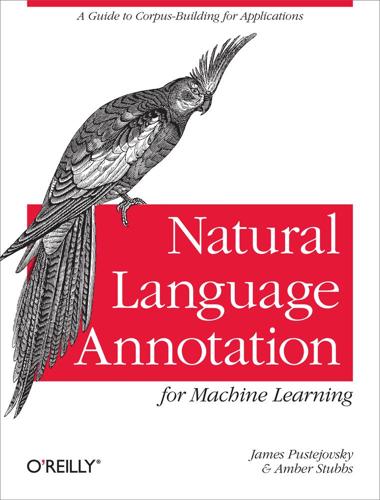
Natural Language Annotation for Machine Learning
by
James Pustejovsky
and
Amber Stubbs
Published 14 Oct 2012
If you are interested in taking the raw text from an HTML page, the NLTK includes a package that will clean that input for you: >>> url = "http://www.bbc.co.uk/news/world-us-canada-18963939" >>> html = urlopen(url).read() >>> raw = nltk.clean_html(html) Chapter 11 of Natural Language Processing with Python provides information and resources for compiling data from other sources, such as from word processor files, databases, and spreadsheets. In terms of mining information from other web sources, such as Twitter and blogs, Mining the Social Web by Matthew A. Russell (O’Reilly) provides detailed information for using the Twitter API, as well as resources for mining information from email, LinkedIn, and blogs. Eliciting Data from People So far we have assumed you will be annotating texts or recordings that already exist. But for some tasks, the data just isn’t there, or at least it doesn’t exist in a form that’s going to be of any use.
…
Reichenbach, Hans. 1947. Elements of Symbolic Logic. New York: Macmillan Co.; New York: Dover Publications, 1980 (reprint). Rumshisky, Anna. 2008. Verbal Polysemy Resolution through Contextualized Clustering of Arguments. PhD Dissertation, Brandeis University. Russell, David A. 2011. Mining the Social Web. Sebastopol, CA: O’Reilly. Saquete, Estela. 2010. “ID 392:TERSEO + T2T3 Transducer. A System for Recognizing and Normalizing TIMEX3.” In Proceedings of the 5th International Workshop on Semantic Evaluation. Saurí, Roser, Robert Knippen, Marc Verhagen, and James Pustejovsky. 2005. “Evita: A Robust Event Recognizer for QA Systems.”
…
, Clustering and Unsupervised Learning macro-averaging, Other Classifiers to Know About MAE (Multipurpose Annotation Environment), Multiple Labels: Film Genres, Choosing an Annotation Environment, MAE User Guide–Frequently Asked Questions, Installing and Running MAE, Loading a Task, Loading a File, Annotating Entities, Attribute information, Nonconsuming tags, Annotating Links, Deleting Tags, Saving Files, Defining Your Own Task, Attributes–Default attribute values, id attributes, start attribute, Attribute types, Default attribute values, Frequently Asked Questions attribute types, Attribute types attributes, Attribute information, Attributes–Default attribute values, Default attribute values default values, Default attribute values defining, Attributes–Default attribute values setting values for, Attribute information entities, annotating in, Annotating Entities FAQ, Frequently Asked Questions files, Loading a File, Saving Files loading, Loading a File saving, Saving Files id attributes, id attributes installation/running, Installing and Running MAE links, annotating in, Annotating Links nonconsuming tags in, Nonconsuming tags start attribute, start attribute tags, deleting, Deleting Tags tasks, Loading a Task, Defining Your Own Task defining, Defining Your Own Task loading, Loading a Task MAI (Multidocument Adjudication Interface), MAI User Guide–Saving Files, Installing and Running MAI, Loading a Task, Loading Files, The MAI Window–Deleting tags, The MAI Window adjudicating with, The MAI Window–Deleting tags files, loading, Loading Files installing/running, Installing and Running MAI MAI Window, The MAI Window tasks, loading, Loading a Task MAMA cycle (Model-Annotate-Model-Annotate), Annotate with the Specification, Be Prepared to Revise Markov assumption, Language Models MATTER methodology, The Annotation Development Cycle–The Annotation Development Cycle, Model the Phenomenon–Model the Phenomenon, Model the Phenomenon, Model the Phenomenon, Annotate with the Specification, Annotate with the Specification, Annotate with the Specification, Train and Test the Algorithms over the Corpus, Evaluate the Results, Revise the Model and Algorithms, Defining Your Goal and Dataset–Distributions Within Corpora, Building Your Model and Specification–Other Standards Affecting Annotation, Annotation and Adjudication–Creating the Gold Standard (Adjudication), Be Prepared to Revise, Writing the Annotation Guidelines–Example 4: Link Tags—Semantic Roles, Creating the Gold Standard (Adjudication), Training: Machine Learning–Matching Annotation to Algorithms, Testing and Evaluation–Final Testing Scores, Revising and Reporting–Training and Testing, Reporting About Your Work–About Your Revisions, Annotation: TimeML–Event Structures adjudication, Annotate with the Specification, Creating the Gold Standard (Adjudication) annotation, Annotation and Adjudication–Creating the Gold Standard (Adjudication) annotation guideline, Model the Phenomenon, Writing the Annotation Guidelines–Example 4: Link Tags—Semantic Roles goals/datasets, defining, Defining Your Goal and Dataset–Distributions Within Corpora gold standard corpus, Annotate with the Specification machine learning, Training: Machine Learning–Matching Annotation to Algorithms MAMA cycle, Annotate with the Specification, Be Prepared to Revise model/specification, building, Building Your Model and Specification–Other Standards Affecting Annotation modeling, Model the Phenomenon–Model the Phenomenon Precision and Recall metric, Evaluate the Results reporting, importance of, Reporting About Your Work–About Your Revisions revising, Revising and Reporting–Training and Testing revising the algorithm, Revise the Model and Algorithms specification, Model the Phenomenon testing/evaluation, Testing and Evaluation–Final Testing Scores training/testing, Train and Test the Algorithms over the Corpus use of, in the TimeML and TimeBank, Annotation: TimeML–Event Structures maximum a posteriori (MAP) hypothesis, Naïve Bayes Learning Maximum Entropy classifiers (MaxEnt), Classification, Maximum Entropy Classifiers, Maximum Entropy Classifiers Naïve Bayes vs., Maximum Entropy Classifiers Maximum Entropy Markov Models (MEMMs), Structured Pattern Induction, Sequence Induction Algorithms Maximum Likelihood Estimation, Language Models (see MLE (maximum likelihood estimation)) Message Understanding Conference (MUC), Example 3: Extent Annotations—Named Entities Message Understanding Conferences (MUCs), Creating Your Own Model and Specification: Generality Versus Specificity Metacritic.com, Unique Labels: Movie Reviews, Example 1: Single Labels—Movie Reviews metadata, The Importance of Language Annotation metadata annotation, Metadata Annotation: Document Classification–Multiple Labels: Film Genres, Unique Labels: Movie Reviews, Multiple Labels: Film Genres, Multiple Labels: Film Genres multiple lables, Multiple Labels: Film Genres unique lables, Unique Labels: Movie Reviews XML and, Multiple Labels: Film Genres micro-averaging, Other Classifiers to Know About Mining the Social Web (Russell), Collecting Data from the Internet Mitchell, Tom, Defining Our Learning Task MLE (maximum likelihood estimation), Language Models, Naïve Bayes Learning model(s), Model the Phenomenon, Building Your Model and Specification–Other Standards Affecting Annotation, Building Your Model and Specification, Some Example Models and Specs, Adding Named Entities, Semantic Roles, Semantic Roles, Adopting (or Not Adopting) Existing Models–Using Models Without Specifications, Creating Your Own Model and Specification: Generality Versus Specificity–Creating Your Own Model and Specification: Generality Versus Specificity, Using Existing Models and Specifications–Using Existing Models and Specifications, Using Models Without Specifications, Model and Specification, About Your Model and Specifications, Model: Preliminary Specifications–Links, Model: The TimeML Specification Used in TimeBank–Confidence, Modeling the Future: Directions for TimeML–Event Structures arity, Some Example Models and Specs creating new vs. using existing, Adopting (or Not Adopting) Existing Models–Using Models Without Specifications creating, advantages/disadvantages of, Creating Your Own Model and Specification: Generality Versus Specificity–Creating Your Own Model and Specification: Generality Versus Specificity defined, Model the Phenomenon, Building Your Model and Specification existing, advantages/disadvantages of, Using Existing Models and Specifications–Using Existing Models and Specifications multimodel annotations, Semantic Roles Named Entities, adding to, Adding Named Entities planning for the future with, Modeling the Future: Directions for TimeML–Event Structures reporting on, About Your Model and Specifications revising, Model and Specification semantic roles and, Semantic Roles specifications, using without, Using Models Without Specifications TimeML, defining and evolution of, Model: Preliminary Specifications–Links TimeML, results of MAMA cycle, Model: The TimeML Specification Used in TimeBank–Confidence Model-Annotate-Model-Annotate (MAMA) cycle, Annotate with the Specification (see MAMA cycle) Model-based sequence classification, Sequence Induction Algorithms Movie Review Corpus (MRC), Example 1: Single Labels—Movie Reviews MPQA Opinion Corpus, Sentiment classification Multidocument Adjudication Interface, MAI User Guide (see MAI (Multidocument Adjudication Interface)) multimodel annotation, Model the Phenomenon, Semantic Roles Multipurpose Annotation Environment, Multiple Labels: Film Genres (see MAE (Multipurpose Annotation Environment)) N n-grams, Corpora Today, N-grams defined, Corpora Today and lexical statistics, N-grams Naïve Bayes learning, Classification, Joint Probability Distributions, Naïve Bayes Learning–Sentiment classification, Naïve Bayes Learning, Sentiment classification, Maximum Entropy Classifiers Classifier, Joint Probability Distributions MaxEnt vs., Maximum Entropy Classifiers maximum a posteriori (MAP) hypothesis, Naïve Bayes Learning sentiment classification, Sentiment classification Named Entities (NEs), The Annotation Development Cycle, Adding Named Entities, Inline Annotation, Example 3: Extent Annotations—Named Entities, Example 3: Extent Annotations—Named Entities as extent tags, Example 3: Extent Annotations—Named Entities and inline tagging, Inline Annotation and models, Adding Named Entities Simple Named Entity Guidelines V6.5, Example 3: Extent Annotations—Named Entities Narrative Containers, Narrative Containers–Narrative Containers natural language processing, What Is Natural Language Processing?
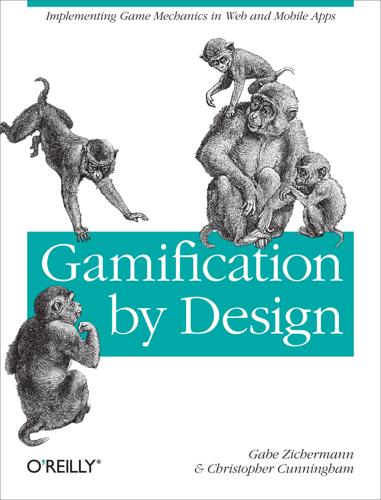
Gamification by Design: Implementing Game Mechanics in Web and Mobile Apps
by
Gabe Zichermann
and
Christopher Cunningham
Published 14 Aug 2011
Critical Elements of an Online Rewards Experience A social-rewards program grows loyalty by making a significant behavior-changing connection with the player. Several key elements increase your chance of making this connection. An effective online rewards experience must be contextual, use real-time feedback, leverage the social web, and be a vehicle for accomplishment. Relevant context is important because visitors and members have unconsciously and consciously trained themselves to ignore information that isn’t interesting or relevant to them. A better gamification platform will allow you to learn about your users and then customize their online experience based on their actions and interests.
…
nickname=Test User&embed_id=widget_id" type="text/javascript"></script> In this example, you call the comment microwidget by using the widget’s endpoint. You then specify the comment widget and the ID of the widget in the page where the comment will appear. The comment widget contains a level image, points total, and level name. Enabling social-sharing A modern rewards program leverages the social web. Here is an example of tracking Facebook-sharing by associating the Badgeville bvCredit function with the onClick event. You can use API calls or JavaScript to track sharing as long as the sharing button is not in an iFrame: <a href='example' onclick='bvCredit("Share");'>Facebook Share!</a> You can give credit for multiple behaviors in one call: <a href='#' onclick='bvCredit("Share"); bvCredit("FBLike");'>Share!
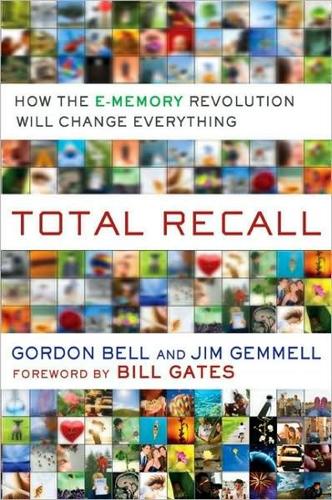
Total Recall: How the E-Memory Revolution Will Change Everything
by
Gordon Bell
and
Jim Gemmell
Published 15 Feb 2009
Getting SMS messages off your cell phone might require a little more effort. If you have a smartphone, you can get programs like SMS Exporter or SMS Cool! It is really a shame that more and more communication is being buried inside social Web sites like Facebook. I don’t believe you will want to make the effort presently required to save every single communication in your social Web sites. However, you should be sure to save some favorites, and occasionally just grab the look of your home page for your e-memory. Hopefully these sites will wise up soon and release our data from captivity. I spoke above about receiving all of your bills and statements electronically.

Designing Search: UX Strategies for Ecommerce Success
by
Greg Nudelman
and
Pabini Gabriel-Petit
Published 8 May 2011
Folksonomy refers to a system of classification based on the practice of collaboratively creating and managing tags to annotate digital content. It has also been called collaborative tagging, social indexing, or social tagging. As Gene Smith describes in his book, Tagging: People-Powered Metadata for the Social Web, folksonomies and tagging usually work well—in most cases adequately resolving the auto-indexing issues that occur in the context of Google Images, as described earlier. Unfortunately, the human element also introduces its own quirks along the way. Take a look at the example of a Flickr image shown in Figure 14-3.
…
“Making $10,000 a Pixel: Optimizing Thumbnail Images in Search Results.” UXmatters, May 11, 2009. Retrieved July 26, 2009. Riflet, Guillaume. “Semapedia, or How to Link the Real World to Wikipedia.” Webtop Mania, August 26, 2008. Retrieved July 26, 2009. Smith, Gene. Tagging: People-Powered Metadata for the Social Web. Berkeley: Peachpit Press, 2008. Smolski, Roger. “Beer, Carbon Offset, and a QR Code Campaign.” 2d code, July 27, 2009. Retrieved July 26, 2010. Smolski, Roger. “QRCity Claimed by Senigallia.” 2d code, July 29, 2010. Retrieved March 12, 2011. Sterling, Bruce. Shaping Things. Cambridge, Massachusetts: MIT Press, 2005.
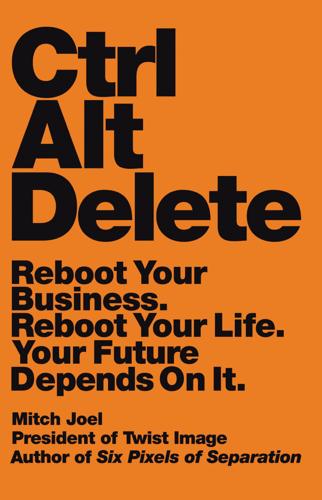
Ctrl Alt Delete: Reboot Your Business. Reboot Your Life. Your Future Depends on It.
by
Mitch Joel
Published 20 May 2013
What services like Klout reinforce is the need to be aware of your online social comings and goings, because these ratings are public and available for the world to see (and this includes your boss, your employees, your customers, and your potential clients and employers). Consumer Reports rates and grades products and services. The Internet allowed anybody to comment on any company or service. Now the social web has brought this scoring and grading down to you and me. Here’s a personal story about influence and social grading: I spent close to fifteen years in the music industry. Along with that, I spend more time than I care to admit on airplanes. Those worlds never collided… until recently. Like most people, I buy cheap flights, and if things need to be changed, I approach the customer service staff at the gate with a smile and a prayer, and hope that I won’t be charged the price of a small condo in Florida.
…
This is what happens in a world where anyone can publish their thoughts in text, images, audio, and video instantly. It becomes a game where brands are jumping in the pool simply because every other brand is jumping in the pool. What does that get you? Mediocrity at best, but junk is the more likely outcome. Prior to the social web, how many advertorials did you read that were so captivating, you could not help but rip them out of the magazine (or newspaper) and share them with friends and colleagues? Admit it—it’s not easy to recall a scenario like that. There are so few companies that will admit that the quality of their content can’t match the quantity that they are producing.
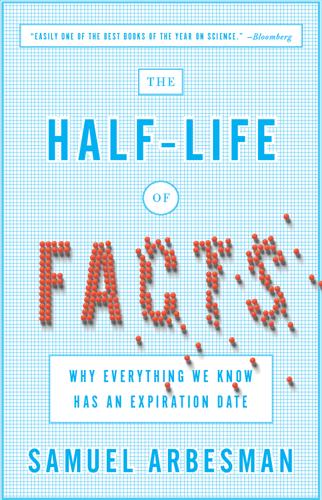
The Half-Life of Facts: Why Everything We Know Has an Expiration Date
by
Samuel Arbesman
Published 31 Aug 2012
If you don’t recognize his name, you may remember some of the New York Times headlines about work done by him and his longtime collaborator James Fowler: “Are Your Friends Making You Fat?”; “Find Yourself Packing It On? Blame Friends”; “Study Finds Big Social Factor in Quitting Smoking”; “Strangers May Cheer You Up, Study Says.” What these researchers have found, in study after study, is that our actions have consequences that ripple across our social web to our friends, our friends’ friends, and even our friends’ friends’ friends. But just as health behaviors spread, so do facts and bits of knowledge. Since information spreads through social rather than physical space, it is vital that we understand social networks and how they operate. In this globalized age, where we can be anywhere on the planet within a day or so, the ties we have to those we know, rather than where we are, take on greater meaning.
…
Instead of the scientist simply working with the set of references they use to write their papers in isolation, it allows them to see their friends’ references; it acts as a sort of social network for scientists. As Mendeley grows in popularity—and it seems that it’s hitting the critical mass that’s necessary for any social Web site to thrive—it allows for the collaborative exposure of knowledge that each of us individually hasn’t been aware of. But it provides another important feature: It allows scientists to see articles that are related to ones that they’re already looking at. By automatically finding topic relationships between papers, Mendeley brings undiscovered public knowledge to the scientific masses.

Uncanny Valley: A Memoir
by
Anna Wiener
Published 14 Jan 2020
Job listings were an excellent place to get sprayed with HR’s idea of fun and a twenty-three-year-old’s idea of work-life balance. Sometimes I forgot I wasn’t applying to summer camp. Customized setup: design your ultimate workstation with the latest hardware. Change the world around you. We work hard, we laugh hard, we give great high fives. We’re not just another social web app. We’re not just another project-management tool. We’re not just another delivery service. I got a haircut. I took personal time. I shrugged off the salespeople’s knowing looks whenever I came into the office wearing anything dressier than a T-shirt and jeans. I knew, from visiting my accounts, that startup offices tended to look the same—faux-midcentury-modern furniture, brick walls, snack bar, bar cart.
…
But using male pseudonyms wasn’t just useful for defusing or de-escalating tense exchanges. It was useful for even the most harmless support requests. I was most effective when I removed myself. Men, I saw, simply responded differently to men. My male pseudonyms had more authority than I did. * * * It was still the era of the social web. Everyone in the pool. Alone, together. Social networks, claimed the social networks’ founders, were tools for connection and the free circulation of information. Social would build communities and break down barriers. Pay no attention to that ad tech behind the curtain: social would make people kinder, fairer, more empathetic.

Brilliant, Crazy, Cocky: How the Top 1% of Entrepreneurs Profit From Global Chaos
by
Sarah Lacy
Published 6 Jan 2011
Facebook organizes people’s school and personal life, LinkedIn organizes people’s professional life, and MyHeritage—and its competitors—want to organize far-flung, sometimes undiscovered family members. MyHeritage was started at a time when only old people and hobbyists cared about genealogy, but several different trends have changed that. Not only has the connection-based social Web exploded, but whole databases of ancestry links have come online. The amount of family media has exploded thanks to digital cameras and video cameras being embedded in nearly every device, and technology for facial recognition software and other discovery tools for mediums like photo and video have emerged as wel .
…
The former founders and executives from PayPal had their fingerprints al over the burgeoning U.S. Web 2.0 movement. They had founded LinkedIn, Slide, Yelp, YouTube, and now Geni, and they had invested in Facebook, Digg, and others. Sacks had two big advantages—he knew how to turn the wonky academic science of genealogy into a sexy social Web application, and he knew how to play the venture game. He told me at the time of the deal, “Charles River Ventures invested $10 mil ion with a double liquidation preference.” That meant CRV got the first $20 mil ion out of any exit. “Do you real y think we won’t even be worth $20 mil ion? Worst case they double their money.”
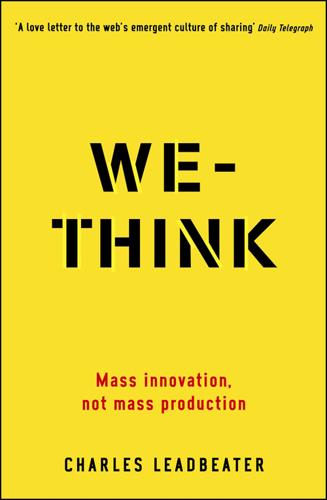
We-Think: Mass Innovation, Not Mass Production
by
Charles Leadbeater
Published 9 Dec 2010
Of course, the information and media businesses are right at the forefront of the transition from boulders to pebbles because the web so directly affects them. Yet even more traditional sectors will feel the pull of the pebbles in time, not least because the consumers and workforce of the near future will have grown up using the social web to search for and share ideas with one another. They will bring with them the web’s culture of lateral, semi-structured free association. This new organisational landscape is taking shape all around us. Scientific research is becoming ever more a question of organising a vast number of pebbles.
…
These communities meet a basic human need that will get stronger as we become materially richer.5 Ideas are animated when they are shared, and people are driven to share because recognition and regard can be reliably earned only from communities, networks, clans, families, religious groups, movements that are not animated by money. The social web provides people with a new way to win recognition for being a good player, programmer, film-maker, singer, composer, citizen, writer, scientist, researcher and so on. Our well-being depends on our being esteemed by people we ourselves hold in high esteem. So long as the web continues to provide a way for people to earn recognition it will continue to grow.

The Internet Is Not the Answer
by
Andrew Keen
Published 5 Jan 2015
It’s almost the stream of all human consciousness and communication, and the products we build are just different views of that.”93 One ominous 2009 Facebook project was thus the Gross Happiness Index, a classically utilitarian attempt to measure the mood of its users by analyzing the words and phrases that they publish on their Facebook page. Another was the even creepier 2012 company study that altered the news feeds of 700,000 Facebook users to experiment with their mood swings.94 Sergey Brin’s “big circle” of data is, for Mark Zuckerberg, the recursive loop of the social Web. The more people who join Facebook, the more valuable—culturally, economically, and, above all, morally—Zuckerberg believes Facebook will become to us all. He even came up with what has become known as Zuckerberg’s law, a social variation of Moore’s law, and which suggests that each year our personal data on the network will grow exponentially.
…
Labeled the Internet’s public enemy number one for her stupid tweet, Sacco lost her job and was even accused of being a “f****** idiot” by her own father.36 Sacco will now forever be associated with this insensitive but hardly criminal tweet. Such is the nature and power of the Internet. “When you only have a small number of followers, Twitter can feel like an intimate group of pub friends,” Sophie Gadd notes about a social Web that is both unforgetting and unforgiving.37 “But it’s not. It’s no more private than shouting your conversations through a megaphone in the high street.” The dangers of the crystal republic predate George Orwell’s 1984 and twentieth-century totalitarianism. They go back to the enlightened despotism of Catherine II of Russia, the subject of Johann Baptist Lampi’s portrait hanging in Berlin’s Deutsches Historisches Museum, the David Cameron look-alike painting that had landed Sophie Gadd on page 3 of the Daily Mail.
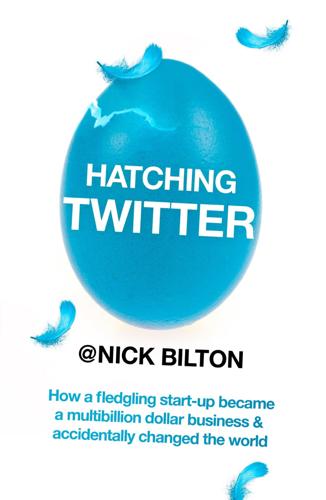
Hatching Twitter
by
Nick Bilton
Published 5 Nov 2013
Exciting new social rides were being built on the plots that had once belonged to pet-food Web sites and other pedestrian ideas from the late nineties. And now admission was free. You simply paid in privacy by giving up your personal information for access. The new Valley had a new name too. Web 2.0! New and improved: the social Web. MySpace and Friendster were the chatter of the late-teen world, and this nascent thing called Facebook was spreading around college dorm rooms with the velocity of a common cold. Flickr, the social photo site, had recently been purchased by Yahoo! for almost forty million dollars, a small gold mine in those days.
…
Ev saw this and his throat tightened; he quickly pushed Oprah aside and grabbed the keyboard, frantically typing the same exact tweet in all caps and hitting “send,” his heart pounding as he heard the cameraman yell: “And we’re back in five, four, three …” At one point in the show Kutcher appeared on the screen, sitting in the same office he had been in a few hours earlier when he beat CNN to a million followers. “Congratulations!” Oprah said to him. “This is a commentary on the state of media,” Kutcher said to Oprah and the audience. “I believe that we’re at a place now with social media where one person’s voice can be as powerful as a media network. That is the power of the social Web.” He went on to explain that Twitter allowed him to control the type of images and videos that were shared about him online, specifically beating the paparazzi: He could now usurp the Us Weeklys of the world by posting pictures he had preapproved before the tabloids could. As the show went on, Oprah’s viewers started signing up for the site in droves.

To Save Everything, Click Here: The Folly of Technological Solutionism
by
Evgeny Morozov
Published 15 Nov 2013
If the Quantified Self movement allows us to establish our authenticity with numbers, social networking allows us to accomplish that in subtler, seemingly more creative ways: by curating the timeline of our life, by uploading our favorite photos, by using the coolest apps on the block, by maintaining a unique social graph (Facebook speak for a set of human connections that each user has). If only one looks closely enough, one can discern how the themes of fakeness and authenticity shape Facebook’s own self-presentation. So Mark Zuckerberg claims that “the social web can’t exist until you are your real self online.” Peter Thiel, the first private investor in Facebook, contrasts the authenticity offered by Facebook—where no pseudonyms are allowed—with that of its former rival, MySpace, where everything goes. “MySpace is about being someone fake on the internet; everyone could be a movie star.
…
Video is available at http://allfacebook.com/mark-zuckerberg-sarah-lacy-interview-video_b1063. 111 “outdated and antiquated”: Steven Overly, “Web Start-Up Ruck.us Aims to Engage the Politically Independent,” Washington Post, March 12, 2012, http://www.washingtonpost.com/business/capitalbusiness/web-start-up-ruckus-aims-to-engage-the-politically-independent/2012/03/09/gIQAKvU55R_story.html . 112 “the word comes from rugby”: Ruck.us, “FAQs,” http://blog.ruck.us/faqs. 112 “Whereas 30 years ago we were blissfully ignorant”: Nathan Daschle, “How to Pick Your Presidential Candidate Online,” CNN.com, April 19, 2012, http://www.cnn.com/2012/04/19/opinion/daschle-elect/index.html. 113 “the Americans Elect innovation is so exciting”: ibid. 113 “The trends are undeniable”: ibid. 113 “Politics is the last sector”: Alex Fitzpatrick, “Ruck.Us Breaks Up Party Politics on the Social Web,” Mashable, May 11, 2012, http://mashable.com/2012/05/11/ruckus. 114 “Plots to disrupt the two-party system”: Steve Freiss, “Son of Democratic Party Royalty Creates a Ruck.us,” Politico, June 26, 2012, http://www.politico.com/news/stories/0612/77847.html. 114 “our two-party system doesn’t form”: ibid. 114 “the creativity of party politics”: Nancy L.
…
Available at SSRN: http://ssrn.com/abstract=2115483. 313 “A despot in a sorcerer’s hat”: Ian Bogost, “Shit Crayons,” Ian Bogost’s blog, undated, http://www.bogost.com/writing/shit_crayons.shtml. 314 “Behind the allure of the quantified self”: Gary Wolf, “The Data-Driven Life,” New York Times, April 28, 2010, http://www.nytimes.com/2010/05/02/magazine/02self-measurement-t.html. 314 “We don’t have a pedometer in our feet”: ibid. 315 “the social web can’t exist”: quoted in Julianne Pepitone, “Facebook Is Now Too Big to Buy,” CNNMoney, November 8, 2011, http://money.cnn.com/2011/11/08/technology/zuckerberg_charlie_rose/index.htm. 315 “MySpace is about being someone fake”: quoted in Holman Jenkins, “Technology = Salvation,” Wall Street Journal, October 9, 2010, http://online.wsj.com/article/SB10001424052748704696304575537882643165738.html. 315 “Expressing our authentic identity”: “United States: Sharing to the Power of 2012,” The Economist, November 17, 2011, http://www.economist.com/node/21537000. 315 “Profiles will no longer be outlines”: ibid. 315 as Lionel Trilling showed: Lionel Trilling, Sincerity and Authenticity (Cambridge, MA: Harvard University Press, 1972). 315 as Trilling correctly noted: Trilling et al., “Sincerity and Authenticity: A Symposium,” Salmagundi 41 (1978): 87–110. 315 “of proving ourselves not merely good”: ibid., 98. 316 “with a kind of dress, with faded denims”: ibid., 96. 316 “in the name of contemporary authenticity”: Theodor Adorno, The Jargon of Authenticity (Oxford: Psychology Press, 2006), 102. 316 “What is crucial about authenticity”: Charles Guignon, On Being Authentic (Oxford: Psychology Press, 2004), 81. 317 “the unique American individual”: Abigail Cheever, Real Phonies: Cultures of Authenticity in Post–World War II America.
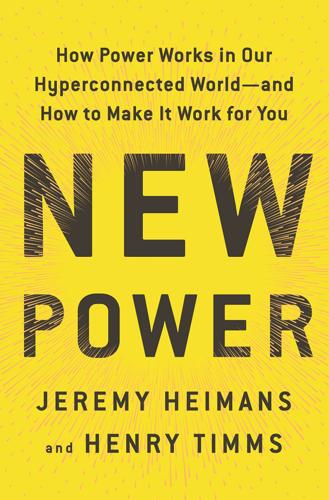
New Power: How Power Works in Our Hyperconnected World--And How to Make It Work for You
by
Jeremy Heimans
and
Henry Timms
Published 2 Apr 2018
As Ben Smith, editor in chief, puts it: “If your goal—as is ours at BuzzFeed—is to deliver the reader something so new, funny, revelatory, or delightful that they feel compelled to share it, you have to do work that delivers on the headline’s promise, and more. This is a very high bar. It’s one thing to enjoy reading something, and quite another to make the active choice to share it with your friends. This is a core fact of sharing and the social web of Facebook, Twitter, Pinterest, and other platforms.” It is easy to think of this as trivial behavior, and in many ways it is. But BuzzFeed has triumphed by taking it so seriously. Its data-driven and analytical approach to understanding its audience, what makes them tick and how to activate them, is key to its success.
…
As former BuzzFeed president Jon Steinberg and Jack Krawczyk noted in AdAge, “Our data show that online sharing, even at viral scale, takes place through many small groups, not via the single status post or tweet of a few influencers. While influential people may be able to reach a wide audience, their impact is short-lived. Content goes viral when it spreads beyond a particular sphere of influence and spreads across the social web via…people sharing with their friends.” The good news here? You probably have much more influence over your friends than Kim Kardashian does. Connectivity can be supercharged when it links someone, along with her peers, to a larger belief or philosophy. This effect explains the wild popularity of Humans of New York, a blog turned best-selling book by the street photographer Brandon Stanton.
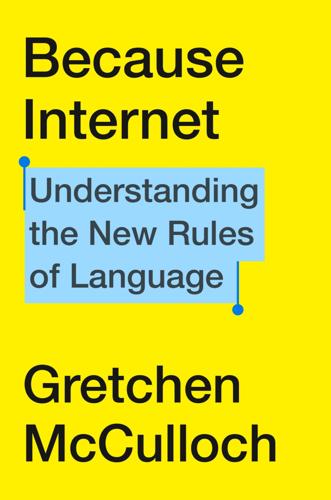
Because Internet: Understanding the New Rules of Language
by
Gretchen McCulloch
Published 22 Jul 2019
Searching for “old internet people” brings me to a hand-coded HTML website (first created 1998, last updated 2006) defending the idea of building your own site without using graphics or templates (“some explanation from us ‘old Internet people’”), a forum thread from 2011 (“us old Internet people need to get used to a social web”), and a tweet agreeing with a 2018 New York magazine article on the decline of typing memorized urls to get to websites directly, rather than go through a search engine or social media (“Looks like it’s really hitting a note with us “old” internet people”). The self-conscious quotation marks suggest that users of this term often feel themselves to be coining it spontaneously, but the fact that several people have done so means that it’s an emerging norm that I’m picking up on.
…
Other accounts simply became inactive: Eshwar Chandrasekharan, Umashanthi Pavalanathan, Anirudh Srinivasan, Adam Glynn, Jacob Eisenstein, and Eric Gilbert. 2017. “You Can’t Stay Here: The Efficacy of Reddit’s 2015 Ban Examined Through Hate Speech.” Proceedings of the ACM on Human-Computer Interaction 1(2). pp. 31–53. Researchers asked soccer fans: Leonie Rösner and Nicole C. Krämer. 2016. “Verbal Venting in the Social Web: Effects of Anonymity and Group Norms on Aggressive Language Use in Online Comments.” Social Media + Society 2(3). Anil Dash. July 20, 2011. “If Your Website’s Full of Assholes, It’s Your Fault.” Anil Dash: A blog about making culture. Since 1999. anildash.com/2011/07/20/if_your_websites_full_of_assholes_its_your_fault-2/.
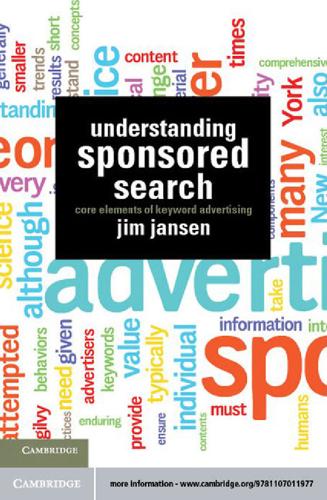
Understanding Sponsored Search: Core Elements of Keyword Advertising
by
Jim Jansen
Published 25 Jul 2011
Searchers no longer have the sole expectation of searching to find information for a specific outcome when they go on the Internet, as the growth of interactions with social media shows [10]. As people spend more and more time connecting, sharing, and interacting with the social Web, they expect to interact with what they find in the search results. Time spent with the social Web involves many types of interactions with like-minded individuals in a community or network, one of which is looking for and sharing recommendations. This will be an exciting and challenging venue for sponsored search. Also, the blending with social media may introduce more push aspects to sponsored search.

Nerds on Wall Street: Math, Machines and Wired Markets
by
David J. Leinweber
Published 31 Dec 2008
During the tech bubble, a company called iExchange opened for business with a huge burst of PR, including segments on the major network news programs. The company T-shirts, which seemed to be everywhere in its hometown of Pasadena, read “BUY SELL” on the front and “TELL” on the back. It raised over $30 million from some of the biggest names in venture capital, and had one of the slickest social web sites seen up to that time. The home page from that site, www.iexchange.com, on June 20, 2000, is shown in Figure 10.1. The business model was that the first few tastes were free, and then investor users (like H.V., J.P., and I.G. over on the right) could pay analyst users (like “The Visionary,” “Big Jim,” and “Biotech Believer” in the middle pane) a modest fee, usually just a few dollars, for new research. iExchange got a piece of every transaction.
…
The business model was that the first few tastes were free, and then investor users (like H.V., J.P., and I.G. over on the right) could pay analyst users (like “The Visionary,” “Big Jim,” and “Biotech Believer” in the middle pane) a modest fee, usually just a few dollars, for new research. iExchange got a piece of every transaction. There were $25,000 monthly prizes for the best stock picks, which was supposed to keep everyone honest. The Epinions.com rating site for social web sites gave iExchange four stars, “a good place to make money.” The anonymous successful investors on the right are minting money. Surely they will be willing to pay the insightful analysts who let them reap these rewards? What could go wrong? Plenty. Perhaps you noticed that the screen grab is from the Internet Archive’s Wayback Machine,6 the elephant graveyard of the Internet.
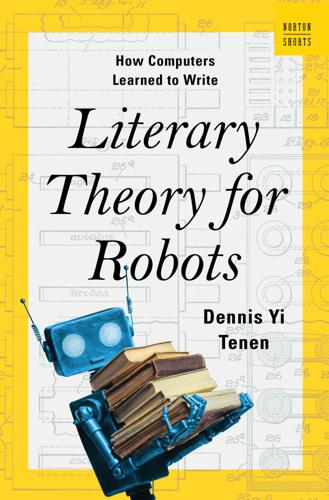
Literary Theory for Robots: How Computers Learned to Write
by
Dennis Yi Tenen
Published 6 Feb 2024
Schank, his advisor, established the efficacy of script schemas. Meehan’s TALE-SPIN combined both approaches in one program, citing both Polti—the French playwright—and Propp—the Soviet folklorist—as influences in addition. TALE-SPIN wrote stories by first generating a world and then charting a path through it, similar to Keeler’s social “web-work.” On program startup, the reader was asked to select several options from a list of pre-defined characters: a bear, bee, boy, girl, fox, crow, or an ant, among others. The corresponding character schema instantiated a specimen template, using randomly chosen type attributes: Will our bear be tall or short?

Designing Interfaces
by
Jenifer Tidwell
Published 15 Dec 2010
When a user posts a link to her Facebook or Twitter stream, that carries other implications: “I thought this was cool, and it represents something about who I am.” Followers are still likely to read these links, especially if they trust that the poster has good taste. Furthermore, followers may repost or retweet it themselves, as will their followers, ad infinitum. This is how memes start, content goes viral, and the social web rolls on. Chapter 2. Organizing the Content: Information Architecture and Application Structure At this point, you know what your users want out of your application or site. You’re targeting a chosen platform: the Web, the desktop, a mobile device, or some combination. You know which idiom or interface type to use—a form, an e-commerce site, an image viewer, or something else—or you may realize that you need to combine several of them.
…
Tufte (Graphics Press, 1997) Information Dashboard Design: The Effective Visual Communication of Data by Stephen Few (O’Reilly, 2006) Now You See It: Simple Visualization Techniques for Quantitative Analysis by Stephen Few (Analytics Press, 2009) Designing Social Interfaces: Principles, Patterns, and Practices for Improving the User Experience by Christian Crumlish and Erin Malone (O’Reilly and Yahoo! Press, 2009) Designing for the Social Web by Joshua Porter (New Riders Press, 2008) Search Patterns: Design for Discovery by Peter Morville and Jeffery Callender (O’Reilly, 2010) And finally, here are the classic patterns books that started the whole concept: The Timeless Way of Building by Christopher Alexander (Oxford University Press, 1979) A Pattern Language by Christopher Alexander, Sara Ishikawa, Murray Silverstein, Max Jacobson, Ingrid Fiksdahl-King, and Shlomo Angel (Oxford University Press, 1977) Design Patterns: Elements of Reusable Object-Oriented Software by Erich Gamma, Richard Helm, Ralph Johnson, and John M.

Collaborative Society
by
Dariusz Jemielniak
and
Aleksandra Przegalinska
Published 18 Feb 2020
Madden, Teens, Privacy & Online Social Networks: How Teens Manage Their Online Identities and Personal Information in the Age of MySpace (Pew Internet & American Life Project, 2007). 7. D. Boyd, “Can Social Network Sites Enable Political Action?” International Journal of Media & Cultural Politics 4 (2008): 241–244. 8. J. G. Breslin, A. Passant, and S. Decker, “Introduction to the Social Web (Web 2.0, Social Media, Social Software),” in The Social Semantic Web, ed. J. G. Breslin, A. Passant, S. and Decker, (Springer Berlin Heidelberg, 2009), 21–44. 9. E. Zuckerman, “Cute Cats to the Rescue” (chapter 6), in From Voice to Influence: Understanding Citizenship in a Digital Age, ed. D.
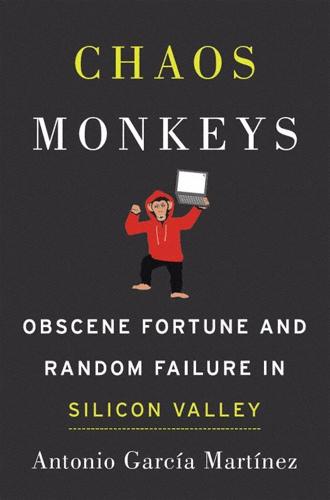
Chaos Monkeys: Obscene Fortune and Random Failure in Silicon Valley
by
Antonio Garcia Martinez
Published 27 Jun 2016
It was the taste of the Oprah-like celebrity, something to justify the taxi ride to the Upper West Side from Midtown. Sheryl was followed by the relative noncelebrity Paul Adams, a product manager on the Ads team. Adams was making a name for himself as a Malcolm Gladwell of the brave new social media world, having published a book called Grouped: How Small Groups of Friends Are the Key to Influence on the Social Web. Like Gladwell, he had cherry-picked a few seminovel conclusions from sociological research around relationship networks, and had woven it into a grand, overarching story about the future of media and consumption, doled out in bite-size morsels that fit inside a media buyer’s brain. The net of it was that new ideas and products propagated via ever-changing social-influencer networks, and that figuring out the network, and exploiting the mutual influence of friends on one another, was the key to making your voice heard or product sold.
…
See also investors; venture capitalists (VCs) AdGrok, 113, 140–48 startups, 96, 154–55 VCs, 121 Game of Thrones, 324, 382 Gartrell, Alex, 476 Gates, Bill, 148–49, 151 Ge, Hong, 322–23 geeks, 29, 100, 107–8, 198, 268, 396 General Motors, 14, 25–26, 82 geographic data, 301 Getaround, 241–45 Gil, Elad, 192 Gladwell, Malcolm, 367 Gleit, Naomi, 356, 378 Gmail, 78, 103, 286, 324 go-big-or-go-home ethos, 206, 300 go-big-or-go-home strategy, 206 Golding, William, 444–45 Goldman Sachs credit crash, 425 credit derivatives, 26–27 departing, 29–31 ICE and, 492 joining, 15–16 partnership management structure, 16 post, 102 pricing quant, 16–18, 24, 29, 141, 207 traders’ contests, 21–24 trading credit indices, 14 Google acquisitions, 155 Ads, 85, 164 AdSense, 186, 275 AdWords, 106, 186, 222, 286, 300, 364 AdX, 461 alerts, 228 auction of keywords, 80–83 campus, 290 clickthrough rates, 451 employee pampering, 264 Facebook war, 492–93 Google Plus, 286–90, 308, 431–33, 492–93 Google Ventures, 78, 83 joining, 346 logo, 124 monetization, 186 PMs, 192 as publisher, 39 RTB, 41 scheming, 382 shuttle, 339 TGIF, 348 graffiti office art, 332–35 Graham, Paul (“PG”) advice, 231 essay, 46–47, 52–53 first meeting, 90 genius guru, 98 meeting with, 60–62 mythologies, 99 offer from, 63–64 on saying no, 187, 203 on startups, 87 startups and, 157–60 tsunami, 102 Graham, Robin Lee, 496 greed, 44, 74 Grindr, 487 GrokBar, 84–85, 184 GrokPad, 95, 100 Grouped: How Small Groups of Friends Are the Key to Influence on the Social Web (Adams), 367 Groupon, 78 Growth team, 373–79, 395 Guevara, Che, 354 Gundotra, Vic, 433, 493 H-1B visas, 70 hackers black-hat, 314 culture, 284 ethos, 284 hackathons, 262, 364 hacker way, 408 kludge and, 47 lingo, 84 multipurpose, 92 N00b and, 269 roles, 91 Zuckerberg and, 270 hacking all night, 406 building AdGrok, 123 configuration files, 92 defined, 47 on demo, 48 experience, 186 mobile, 229 people and products, 8 harassment, 66–68 Hart, Camille, 4–5 hashing, 387 hate speech, 315 Hemingway, Ernest, 106 Herodotus, 421 Herzl, Theodor, 496 Hoffman, Reid, 88 hogrammers, 400 home-brewing, 406 Houston, Drew, 175 HTC, 282 hybridizing, 341 Hykes, Solomon, 119 IBM, 20, 70, 148–49, 325 ID for Advertising (IDFA), 485 identity consumption patterns and, 385 Facebook, 382, 440 hashing and, 387 matching, 434, 438, 442, 466 name and, 381–82 online, 265, 477 PII, 395 work, 285 immigrant workers, 68–72 initial public offering (IPO) drawn out process, 247 Facebook, 284, 309, 342, 358, 371, 378, 399 lockout period, 409, 495 reevaluation, 417–20 on Wall Street, 124 Zuckerberg and, 342 Instacart, 50 Instagram product department, 493 user growth curve, 490 Intel, 70, 122 intellectual property, 134–35, 204, 252, 471 InterContinental Exchange (ICE), 492 intermodal container, 447–48 Internet advertising Airbnb, 25 characteristics, 36–37 digital advertising, 448 effectiveness, 386 Facebook, 3–4, 8, 279–81, 299, 309, 317, 362–63, 368–69, 393–403, 460 Google Ads, 85, 164 IAB, 448 mobile, 484, 487 multipronged, 39–40 News Feed, 482–84, 488, 492 opting out, 485 programmatic, 396, 435 stack, 439 technologies, 429, 446, 454 Internet Advertising Bureau (IAB), 448 Internet Explorer, 286 Internet Retailer, 173 investors Adchemy, 163 AdGrok, 110–19, 142, 145–47, 161 advertising, 83 angel, 110–13, 115, 117, 154, 206 choosing, 156 common, 397 early stage, 49 money and time, 74 nature of, 115 New York, 101–2 ownership and, 143 pitching to, 53 potential, 140 running game on, 255 YC, 157, 160 iPhones, 74, 198 Irish Data Privacy Audit, 278, 320–23 Islam, 356 Israeli Psychologist, 458, 476 Jacobs, Josh, 438 Java, 181 Jesuits, 456 Jin, Kang-Xing (KX), 209–10, 398 job offers, 252 Jobs, Steve, 112, 149–51, 428 advertising and, 485 genius, 282 Johnson, Mick, 202, 229–31, 332 Johnson, Samuel, 330 Johnston, John, 154 Kayak, 124 Kennedy, John F., 107 Kenshoo, 125 Kesey, Ken, 404 Keyani, Pedram, 262–64, 410 Keys, Alicia, 370 keywords, 80–83, 293 Kildall, Gary, 148–49 Kile, Chris, 145 Kitten initiative, 291–92 launch, 294–95 sausage grinder, 296 Kleiner Perkins Caufield & Byers (KPCB), 110–11 kludge, 47 Kobayashi, Takeru, 21 Koum, Jan, 491 Lady Gaga, 189, 228 Land of Stateless Machines, 231–32, 237, 481 Laraki, Othman, 192 The Last Judgment, 334 lawsuits Adchemy, 133–39, 141–42, 152, 167–68, 203–4 class-action, 81 expensive feints, 74 legal problems, 317 Lessin, Sam, 1, 444 Lewis, Michael, 16, 199, 422 Lexity, 83 Liar’s Poker (Lewis), 16, 199 lifetime value (LTV), 486–87 Likes, 6, 208–14, 451 limited partners (LPs), 155 Lindsay, Roddy, 335 LinkedIn, 43, 78, 124, 162, 279 Linux, 337 liquidity event, 45 LiveRamp, 386 Livingston, Jessica, 60 localhost, 95 lockdown, 287–88 Logout Experience (LOX), 376–77 Loopt, 160–61, 178 Lord of the Flies (Golding), 444–45 Losse, Katherine, 445 Machiavelli, Niccolò, 271 machine-learning models, 310 Madoff scandal, 16 Mai, Susi, 126–27 MaiTai kiteboarding camp, 126 major life event (MLE), 411 mallet finger, 45 Manifest Destiny, 356 Manikarnika, Shreehari (“Hari”), 389, 400–401 Mann, Jonathan (JMann), 14 mapping, 291, 398, 490 Marcus Aurelius, 42 marimbero, 304–5 Marine Corps Scout Snipers, 298 marketing digital, 388–89 duplicity, 443 marketers, 37, 74 MMA, 448 PMM, 277, 366 Martin, Dorothy, 360–61 Marxism, 359 Match.com, 54, 387 Mathur, Nipun, 210 Maugham, W.
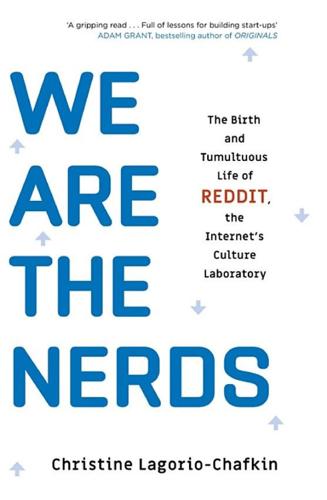
We Are the Nerds: The Birth and Tumultuous Life of Reddit, the Internet's Culture Laboratory
by
Christine Lagorio-Chafkin
Published 1 Oct 2018
There were pop stars, models, Academy Award–winning actresses, athletes, reality stars, and, shockingly, two minors: gold-medal-winning American gymnast McKayla Maroney and MTV reality star Liz Lee. The dissemination of private nude photos—perhaps by a jilted ex-boyfriend with a phone full of sexts—had already become sufficiently common in the age of the social web that it had been made a crime in several states and had earned a cringeworthy name: “revenge porn.” In a cover story in Vanity Fair, the actress Jennifer Lawrence, one of the victims of the hack, said, “It’s not a scandal; it’s a sex crime.” Although there was plenty of condemnation like this from victims and the press, it didn’t stop hundreds of millions of individuals around the globe from sneaking a look.
…
When asked at the end of November whether he believed Reddit had a role in the election’s outcome, Huffman was open to the possibility, saying, “It’s hard to say.” He said The_Donald, specifically, was a reflection of the conversation that was happening nationwide—only amplified, thanks to the nature of the see-what-you-want-to-see social web. “I think that’s one of the challenges you see when you democratize media and news consumption,” he said. “The feedback loop gets louder and louder and louder.” Within a week of the election, both Facebook and Google came under intense scrutiny for having allowed the propagation of blatantly false articles, videos, and stories about political candidates and polarizing issues that may have influenced how the American electorate voted.

The Art of SEO
by
Eric Enge
,
Stephan Spencer
,
Jessie Stricchiola
and
Rand Fishkin
Published 7 Mar 2012
These signals become a voting system for the masses. In addition, the search engines believe that these signals are harder to spam. At SMX Munich in April 2011, Bing’s Stefan Weitz and Google’s Maile Ohye both indicated that it was comparatively simple to find social media spam because the behavior pattern matching is more predictable on the social web than it is with the link graph. Similarly, user behavior on the Web provides many potential signals that search engines can use. Consider the example of bounce rate, which is a measurement of the percentage of visitors to a site that visit only one page. If one site has a 47% bounce rate, and another site that competes with it has a 60% bounce rate, you could consider the site with the 47% bounce rate a better page to show in response to a user’s search query.
…
Blogs and forums The world of online social networking started out as one where discussion sites (forums, Q+As, bulletin boards, and the like) and the blogosphere reigned supreme. Eventually, consolidation and massive adoption of the major networks (those mentioned above) took over the hearts and minds of the press, but the social web is still very much alive in the blogosphere and forums. Marketers have massive opportunities in these spaces, too. For example, SEOmoz receives tens of thousands of visits each week from blogs and discussion sites of all sizes, and participation/interaction with those sources often yields fantastic results in referral traffic, mindshare, and links.
…
Raven Tools A toolset that offers both search and social tracking functionality, Raven can help you track many of the basic metrics from Twitter, Facebook, StumbleUpon, YouTube, and blogs, and will likely expand into other networks in the future. Converseon A very impressive social and web monitoring tool that, like Radian6, is geared toward enterprises. Converseon offers human-reviewed sentiment classification and analysis—a very powerful tool for those seeking insight into their brand perception on the social web. PageLever Specifically focused on tracking Facebook interactions and pages, PageLever provides more depth and data than the native Insights functionality. Twitter Counter A phenomenal tool for monitoring the growth of Twitter accounts over time (it tracks latently, offering historical data for many accounts even if you haven’t used it before).

Android 3. 0 Application Development Cookbook
by
Kyle Merrifield Mew
Published 3 Aug 2011
Beside his full time freelance work, he blogs at http://thinkdiff.net and writes articles on different technologies, especially Facebook application development. For the past year he's been developing iOS applications as a hobby and also developed some android applications. He lives in Bangladesh with his wife Jinat. Currently he's working as a Freelancer, managing and developing social web applications and iOS applications. He publishes his own iOS applications at http://ithinkdiff.net. He was a technical reviewer for the titles Zend Framework 1.8 Web Application Development and PHP jQuery Cookbook by Packt. I'm very grateful to my father who bought a computer for me in 2001, since then I have loved programming and working with various technologies.
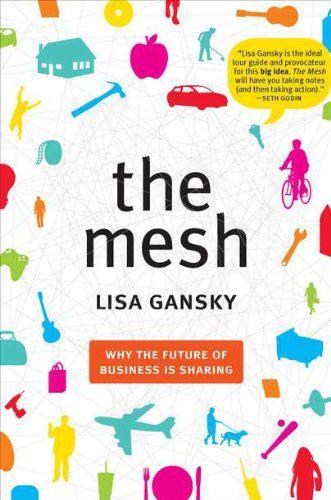
The Mesh: Why the Future of Business Is Sharing
by
Lisa Gansky
Published 14 Oct 2010
The Web site will help you pick a theme, find members, make plans, and schedule your first Meetup. Fotolog: Social networking site for photo bloggers. http://www.fotolog.com Green Drinks: Meetups for people in the environmental field. http://www.greendrinks.org inCampus: Social networking service for students. http://www.incampus.com Klout: Measures influence across the social Web and allows you to track the impact of your opinions, links, and recommendations. http://klout.com LinkedIn: Service for colleagues, former colleagues, and friends to network. http://www.linkedin.com Meetup: Network of local interest groups that meet face-to-face. Users organize groups or join them.
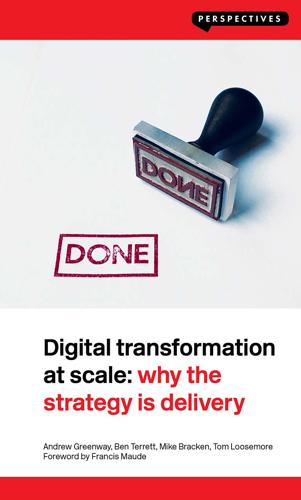
Digital Transformation at Scale: Why the Strategy Is Delivery
by
Andrew Greenway,Ben Terrett,Mike Bracken,Tom Loosemore
Published 18 Jun 2018
Others in your organisation will notice the benefits, and look to copy the digital team’s methods. As Emer Coleman, the GDS’s first Head of Communications, wrote in 2012, ‘Many more of my government communication colleagues across Whitehall will begin to explore how different relationships can be built through the behaviours we manifest in the social web, and how ultimately that just might be a good thing for government.’ Openness is about what you say as much as where you say it. Having part of a large corporate or government talk candidly about what it is doing and what it plans to do next is still unusual. Having those same organisations openly and humbly admitting failings and missteps is radical.
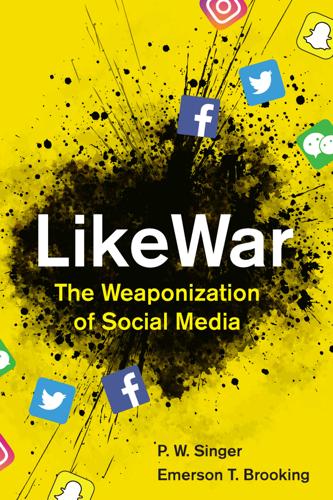
Likewar: The Weaponization of Social Media
by
Peter Warren Singer
and
Emerson T. Brooking
Published 15 Mar 2018
To be effective, these terms would have to be regularly monitored and updated, pulling engineers ever closer to the task of “regulating” free speech. To do otherwise—to leave hundreds of millions of users to say or do whatever they pleased—risked the government jumping in and passing ever more stringent legislation. In other words, to allow truly free speech would be financially ruinous. Among the companies destined to rule the new social web—Twitter, Google, and Facebook—a shaky consensus emerged. All three banned personal threats or intimidation, soon expanding to include a more general ban on harassment. All but the free-spirited Twitter banned graphic violence and pornography, which included taking a hard-line stance against nudity.
…
Raghav Rao, “Information Control and Terrorism: Tracking the Mumbai Terrorist Attack Through Twitter,” Information Systems Frontiers 13, no. 1 (2011): 33–43. 64 Indian government had said: Busari, “Tweeting the Terror.” 64 “Die, die, die”: Ibid. 64 begging for blood donations: Noah Schatman, “Mumbai Attack Aftermath Detailed, Tweet by Tweet,” Wired, November 26, 2008, https://www.wired.com/2008/11/first-hand-acco/. 64 spread word of tip lines: Tamar Weinberg, The New Community Rules: Marketing on the Social Web (O’Reilly, 2009), 127. 64 to work collectively: Jeff Howe, “The Rise of Crowdsourcing,” Wired, June 1, 2006, https://www.wired.com/2006/06/crowds/. 65 $218 million: Clare Foran, “Bernie Sanders’s Big Money,” The Atlantic, March 1, 2016, https://www.theatlantic.com/politics/archive/2016/03/bernie-sanders-fundraising/471648/. 65 “to crowdfund their war”: “Why an Ordinary Man Went to Fight Islamic State,” The Economist, December 24, 2016, https://www.economist.com/news/christmas-specials/21712055-when-islamic-state-looked-unbeatable-ordinary-men-and-women-went-fight-them-why. 65 fundamentalist donors: Elizabeth Dickinson, “Private Gulf Donors and Extremist Rebels in Syria” (panel presentation, Brookings Institution, Washington, DC, December 19, 2013). 65 “financial jihad”: Lisa Daftari, “Hezbollah’s New Crowdfunding Campaign: ‘Equip a Mujahid,’” The Foreign Desk, February 9, 2017, http://www.foreigndesknews.com/world/middle-east/hezbollahs-new-crowdfunding-campaign-equip-mujahid/?
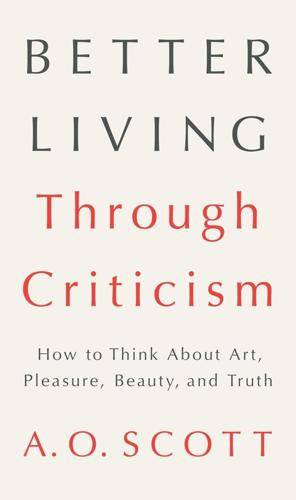
Better Living Through Criticism: How to Think About Art, Pleasure, Beauty, and Truth
by
A. O. Scott
Published 9 Feb 2016
Nostalgia and artisanal pride may keep us around for a while, but nothing will ever really be the same. We must adapt or die, replacing old idioms and practices, rooted in the materialism of paper and ink, with the more abstract language of the virtual domain. We bid farewell to proofs and slugs, endnotes and front matter, and embrace feeds, hyperlinks, search engine optimization, social Web audience development, and whatever new catchphrase or concept promises to save us. We learn the vernacular of clicks and uniques and try to find a home and a voice in publications that are also publishing platforms. From one perspective—on some days—this upheaval can feel tragic, even apocalyptic.
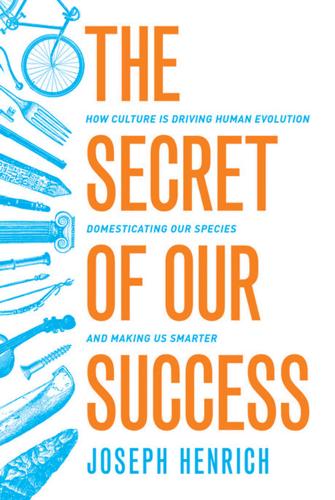
The Secret of Our Success: How Culture Is Driving Human Evolution, Domesticating Our Species, and Making Us Smarter
by
Joseph Henrich
Published 27 Oct 2015
Not only are individual ritual relationships more important than genetic relatedness, but individuals have three times as many ritual partners as they do close blood relations.49 Taken together, ritual and affinal relationships, both of which are culturally constructed and nonexistent in primates or other animals, explain much more about the patterns of association, cooperation, helping, and sharing than blood ties. Elsewhere, in southern Africa, the Ju/'hoansi achieve the same end as the Hadza and Aché, a vast interconnected social web that threads through many bands. They too also rely on affinal connections and communal rituals, but they also have the hxaro exchange relationships. Hxaro partnerships are special, culturally defined, relationships that come with obligations and are sustained by ongoing exchanges of goods. Since people form and inherit many such relationships, goods given as gifts between partners pulse constantly through this broad network.
…
By combining all the available evidence, two linguists, Nick Evans and Patrick McConvell, have proposed that the Pama-Nyungan speakers spread because of new (1) patrilineal kinship institutions, (2) marriage rules that prescribed unions outside the local group and possibly outside the dialect group, (3) multigroup ritual gatherings or ceremonies supported by seed processing and storage capabilities, (4) intensive initiation rites for adolescents (as we saw among the Arunta), and (5) more encompassing cosmologies, conveyed through song cycles, that established sacred group identities (which saved Paralji’s band in chapter 8). These kinship, marriage, and ritual institutions involved social norms that tightly bound males from different residential groups in interdependent social webs. The marriage norms of “dialect exogamy” meant that men had to seek wives from groups speaking different languages or dialects. This created an incentive to build relationships with other groups and forced local groups to remain integrated into larger populations. As discussed in chapter 9, the emotional impact of these new rites might have fostered solidarity among local bands and, especially, bound male adolescents together for life.
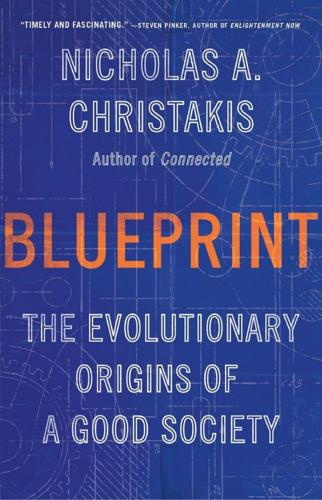
Blueprint: The Evolutionary Origins of a Good Society
by
Nicholas A. Christakis
Published 26 Mar 2019
They must also affect the survival or reproduction of the individual expressing them. In the chicken experiment, if the Darwinian fitness of the pecking hen depended on the feather quality of the hen she threatened, then we would say it was an exophenotype. In the case of our species, if your genes predispose you to introduce your friends to one another, and if this social web you weave affects your survival, then it is a social exophenotype. Humans make social networks as reproducibly as bowerbirds make bowers. To properly analyze these social exophenotypes, we would ideally need a set of different hominid species—as in the examples of the oldfield and deer mice or the different species of spiders—and compare across species to show how social structure varied.
…
But people might analogously engage in niche construction by manipulating the social world around them just like other animals manipulate the physical world. Returning to our spider example, some webs are better for catching flies than others, and the spiders with genes that programmed them to make those webs are more likely to survive and pass on those genes. Similarly, some ancestral humans may have been better able to shape the social webs around them and engage in collective activities like hunting large game or warding off competing groups. Humans with genes that helped them do that would have been more likely to survive as well. Eventually, genes and alleles predisposing humans to make beneficial sorts of social arrangements would arise and expand.

The Life and Death of Ancient Cities: A Natural History
by
Greg Woolf
Published 14 May 2020
The surpluses produced by villagers did not just sustain their urban rulers but were used by them as the base of vast webs of exchange. Later chapters will introduce the exchange networks that linked Bronze Age Mesopotamia to Afghanistan, northwest India, and Anatolia, and that connected Mexican Teotihuacan to the jungles of the Yucatan peninsular and the steppe of the American Southwest. The complex social web most densely woven in city centres stretches out across the countryside, linking one city to another and enmeshing everyone else within it. Cities were not only nodes in this network: they were also key components of the hardware through which information, as well as people and their possessions, were moved.
…
All primate societies are held together by a web of one-to-one relationships, meaning that each member potentially has some sort of relationship with every other. Moreover, these relationships change over the relatively long lives of the members as new pair bonds are formed, as authority is challenged, lost, or reaffirmed, and as individuals die and younger ones take their places in the social web. Managing these relationships takes primates a lot more work than bees undertake in their simpler eusocial universes, where a drone is a drone is a drone. Each member of a primate society has to create, and then maintain a social map. Updating it requires observational and interpretative work by every individual, and the neocortex is where this work is done.

Power and Progress: Our Thousand-Year Struggle Over Technology and Prosperity
by
Daron Acemoglu
and
Simon Johnson
Published 15 May 2023
The Socially Bankrupt Web What Google can learn about its users from the metadata of their email activity and location pales in comparison with what some people are willing to share with their friends and acquaintances about their activities, intentions, desires, and views. Social media was bound to put the targeted-ad business model into a higher gear. Mark Zuckerberg saw from the very beginning that key to Facebook’s success would be its ability to be a vehicle, or in fact even a manufacturer, of a “social web,” in which people would engage in a range of social activities. To accomplish this, he prioritized the growth of the platform above all else. But monetizing this information was always going to be a challenge, even with Google’s successful business model out there to be emulated. Facebook’s first few forays into data collection as a means of improving its ability to target ads were failures.
…
People can create their own echo chambers in a subscription-based platform, and new ways of monetizing misinformation and insecurities may arise. Nevertheless, alternative business models can move away from seeking intense user engagement, which has proved to be conducive to the worst type of social interaction, damaging both to mental health and democratic discourse. A “social web” can have myriad positive effects if its pernicious impact on misinformation, polarization, and mental health can be contained. Recent research tracks the start of Facebook’s service in new languages and shows that small businesses in the affected countries get access to information from foreign markets and expand their sales as a result.
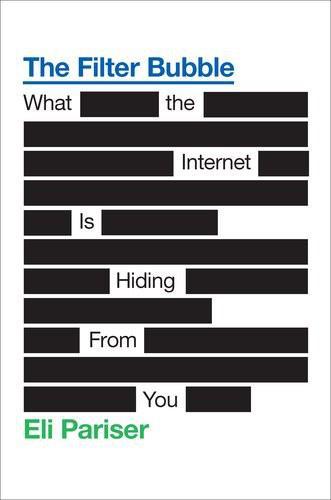
The Filter Bubble: What the Internet Is Hiding From You
by
Eli Pariser
Published 11 May 2011
She’s a “local maximum”: Though there are people whose posts you’re far more interested in, it’s her posts that you see. In part, this feedback effect is due to what early Facebook employee and venture capitalist Matt Cohler calls the local-maximum problem. Cohler was an early employee at Facebook, and he’s widely considered one of Silicon Valley’s smartest thinkers on the social Web. The local-maximum problem, he explains to me, shows up any time you’re trying to optimize something. Say you’re trying to write a simple set of instructions to help a blind person who’s lost in the Sierra Nevadas find his way to the highest peak. “Feel around you to see if you’re surrounded by downward-sloping land,” you say.
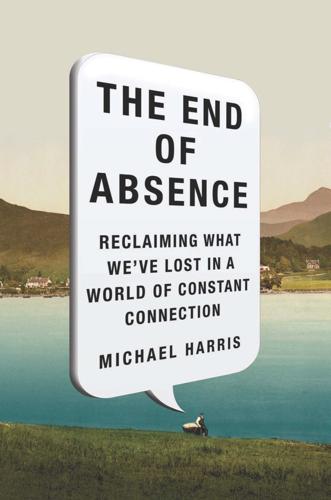
The End of Absence: Reclaiming What We've Lost in a World of Constant Connection
by
Michael Harris
Published 6 Aug 2014
The thought of the victim is that everybody in the world has seen this. And that everybody in the world is going to respond to it like the mean-spirited person that created it.” Dinakar watched the program, figuring there must be a way to stem such cruelty, to monitor and manage unacceptable online behavior. Most social Web sites leave it to the public. Facebook, Twitter, and the like incorporate a button that allows users to “flag this as inappropriate” when they see something they disapprove of. In the age of crowdsourced knowledge like Wikipedia’s, such user-driven moderation sounds like common sense, and perhaps it is.8 “But what happens,” Dinakar explains, “is that all flagging goes into a stream where a moderation team has to look at it.
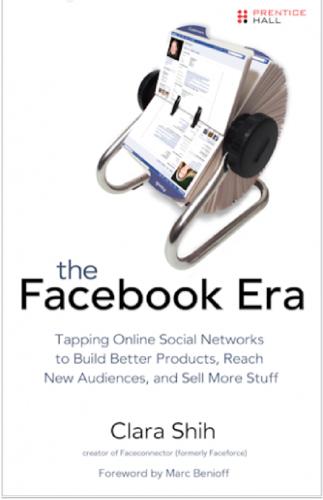
The Facebook era: tapping online social networks to build better products, reach new audiences, and sell more stuff
by
Clara Shih
Published 30 Apr 2009
The school’s private social network has been especially important for the Kennedy community after Hurricane Katrina forced students to evacuate at the beginning of the 2005–2006 academic year. The site allowed parents and administrators to support one another, share information, and help facilitate transfers to other schools. iDraw&Paint, shown in Figure 1.4, is another example of a social Web site on Ning. The site features tips and tricks, discussion forums, special interest groups, news, and an artwork showcase for amateur artists. Today, Ning hosts hundreds of thousands of specialized networks on its free, adsupported version. But despite the low barriers to starting a network on Ning, growth of new Ning sites appears to have slowed while the number of applications and audiences of Facebook continues to soar.
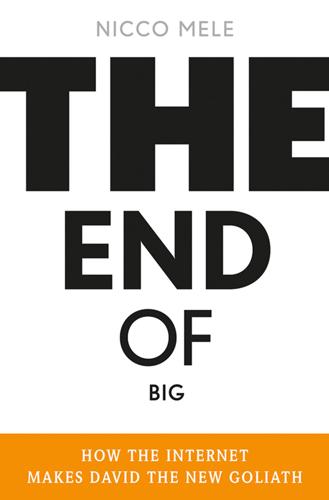
The End of Big: How the Internet Makes David the New Goliath
by
Nicco Mele
Published 14 Apr 2013
Jones, Losing the News (New York: Oxford University Press, 2009), 4. 29. http://digitalhks.pbworks.com/w/page/50872581/Media%3A%20Texas%20Tribune 30. http://www.niemanlab.org/2009/06/four-crowdsourcing-lessons-from-the-guardians-spectacular-expenses-scandal-experiment/ 31. http://mashable.com/2010/11/24/investigative-journalism-social-web/ 32. Amanda Michel, “Get Off the Bus: The Future of Pro-Am Journalism,” Columbia Journalism Review, Mar.-Apr. 2009: http://www.cjr.org/feature/get_off_the_bus.php. 33. Michel, “Get Off the Bus.” 34. http://www.propublica.org/special/reportingnetwork-signup 35. http://www.kk.org/thetechnium/archives/2008/03/1000_true_fans.php 36. http://www.cjr.org/feature/the_josh_marshall_plan.php 37. http://www.huffingtonpost.com/jeff-cohen/josh-marshall-on-the-grow_b_131571.html 38. http://www.huffingtonpost.com/jeff-cohen/josh-marshall-on-the-grow_b_131571.html 39. http://www.niemanlab.org/encyclo/talking-points-memo/ 40. http://en.wikipedia.org/wiki/Wikipedia:Five_pillars 41. http://blog.oregonlive.com/mapesonpolitics/2010/04/kitzhaber_opponent_of_gorge_ca.html 42. http://storify.com/acarvin/rep-gifford 43. http://storify.com/jcstearns/tracking-journalist-arrests-during-the-occupy-prot 3.
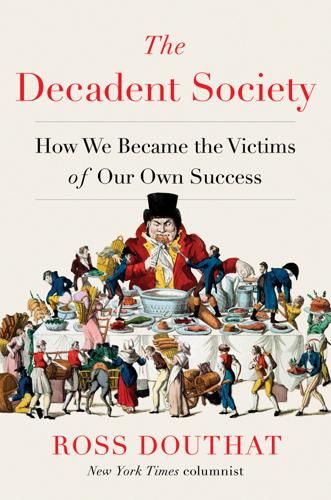
The Decadent Society: How We Became the Victims of Our Own Success
by
Ross Douthat
Published 25 Feb 2020
Sudden crises can have a profound effect: if you have just one child or grandchild (or your neighbor or friend has just one), and he or she dies or gets wounded in a foreign war, gets knocked into bankruptcy or foreclosure by a major recession, or ends up addicted, jailed, or dead during the opioid epidemic, your perspective on the future can be altered more dramatically than someone whose social web is larger, whose ties to the future expand instead of narrow. Another story from the Times in 2017 featured Roger Winemiller, a farmer who lost two adult children to opioid overdoses within nine months. The article focused on inheritance and loss, illustrated by the farmer’s doubts that his remaining son, who has also struggled with addiction, can inherit the farm that Winemiller inherited from his uncle twenty years earlier.

The Digital Party: Political Organisation and Online Democracy
by
Paolo Gerbaudo
Published 19 Jul 2018
Digital democracy has been defined as ‘a collection of attempts to practise democracy without the limits of time, space and other physical conditions’.135 Alongside similar terms – online democracy, e-democracy, cyber-democracy, e-government, e-voting or open government and teledemocracy – it has been used to capture the way digital technology can enhance political participation by: lowering barriers to information and discussion; extending the ways citizens can intervene on policy-making and allowing citizens to follow policymaking more closely.136 This notion operates with a rather concise and intuitive techno-deterministic narrative: digital technology offers the opportunity to go beyond the process of representation to develop a more participatory politics, tapping into the participatory architecture and culture of the social web. Although for many years this idea appeared as a vapourware, with little impact on politics and society, digital parties have turned it into a key plank of their new politics and enacted it in the creation of decision-making platforms often involving hundreds of thousands of people. The ambition behind the idea of online democracy is making citizens’ involvement in the political process more direct and authentic.
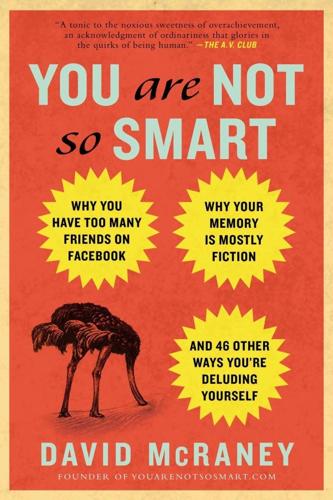
You Are Not So Smart
by
David McRaney
Published 20 Sep 2011
With better tools—like telephones, Facebook, e-mail, World of Warcraft guilds, and so on—you become slightly more efficient at maintaining relationships, so the number can be larger, but not much larger. Dunbar’s most recent research suggests even power-users of Facebook with 1,000 or more friends still communicate regularly with only around 150 people, and of that 150 they strongly communicate with a group of less than 20. The social Web is revolutionizing the way institutions operate, and the way people communicate, but in the end it might not have much of an effect on the core social group you depend on for true friendship. You can maintain a giant number of weak ties to people on Facebook, Twitter, and whatever comes next, much like you can in a giant company.

The WEIRDest People in the World: How the West Became Psychologically Peculiar and Particularly Prosperous
by
Joseph Henrich
Published 7 Sep 2020
In these regulated-relational worlds, people’s survival, identity, security, marriages, and success depended on the health and prosperity of kin-based networks, which often formed discrete institutions known as clans, lineages, houses, or tribes. This is the world of the Maasai, Samburu, and Cook Islanders. Within these enduring networks, everyone is endowed with an extensive array of inherited obligations, responsibilities, and privileges in relation to others in a dense social web. For example, a man could be obligated to avenge the murder of one type of second cousin (through his paternal great-grandfather), privileged to marry his mother’s brother’s daughters but tabooed from marrying strangers, and responsible for performing expensive rituals to honor his ancestors, who will shower bad luck on his entire lineage if he’s negligent.
…
However, because growing firms often hire residentially and relationally mobile individuals, greater interfirm competition should strengthen impersonal prosociality, not social embeddedness and interpersonal prosociality. As more people spend much of their day in more cooperative environments, governed by impartial norms, they should become generally more cooperative and trusting with anonymous others, even outside of work. Of course, these psychological shifts can reverberate outward across our social webs, as those psychologically affected by intergroup competition interact with and influence others.27 This is an interesting story, but is it true? Many believe that all forms of competition turn people into greedy, self-centered connivers. Could cultural evolution really have devised a way to embed a domesticated form of intergroup competition within our economic system?
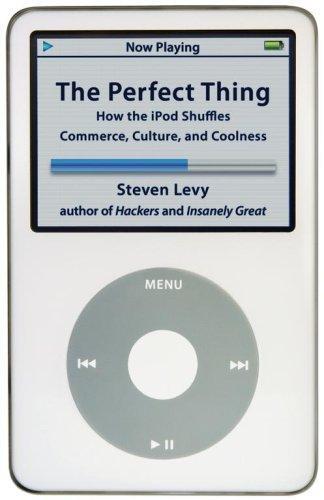
The Perfect Thing: How the iPod Shuffles Commerce, Culture, and Coolness
by
Steven Levy
Published 23 Oct 2006
On Apples iPod downloading headquarters, you can find more than a hundred celebrity playlists, not just those of musicians—Avril Lavigne digs Lesley Gore; Barry Manilow confesses that "Tom Waits is my favorite male singer"— but movie stars and athletes such as Sharon Stone ("Just Like a Woman") and Dale Earnhardt Jr. ("A Horse with No Name"). Elsewhere on the Net, it's common for bloggers to list favorite tunes, and on social Web sites like MySpace.com, your song preferences are the Unk that potentially binds you to new friends. On iPods themselves, this practice has been ground down to the nub. Simply handing over your iPod to a friend, your blind date, or the total stranger sitting next to you on the plane opens you up like a book.
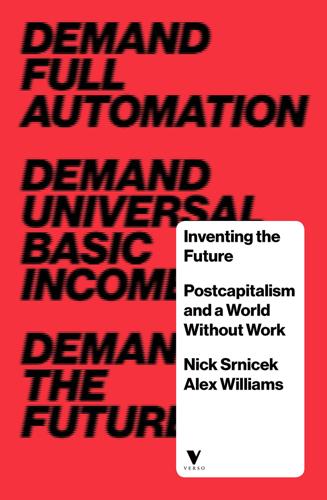
Inventing the Future: Postcapitalism and a World Without Work
by
Nick Srnicek
and
Alex Williams
Published 1 Oct 2015
The pathway towards a postcapitalist society requires a shift away from the proletarianisation of humanity and towards a transformed and newly mutable subject. This subject cannot be determined in advance; it can only be elaborated in the unfolding of practical and conceptual ramifications. There is no ‘true’ essence to humanity that could be discovered beyond our enmeshments in technological, natural and social webs.18 The idea that a post-work society would simply inculcate further mindless consumption neglects humanity’s capacity for novelty and creativity, and invokes a pessimism based upon current capitalist subjectivity.19 Likewise, the development of new needs must be distinguished from their commodification.

The End of College: Creating the Future of Learning and the University of Everywhere
by
Kevin Carey
Published 3 Mar 2015
If time, money, family, and circumstances didn’t matter, I would rather have learned about the secret of life in person in Cambridge, Massachusetts. But all of those things do matter, a lot, and I was still able to get an 87 percent. Moreover, no one is alone on the Internet if they don’t want to be. In addition to faster connections and cheaper, more powerful computers, the last decade has seen the rise of the social Web. People form deep and lasting connections with others in virtual environments. They become part of authentic communities. And as technology improves, the nature of those interactions will more closely approximate actual face-to-face meetings. The person sitting at a chair, staring at a monitor, is a cramped and increasingly archaic vision of human-computer interaction.
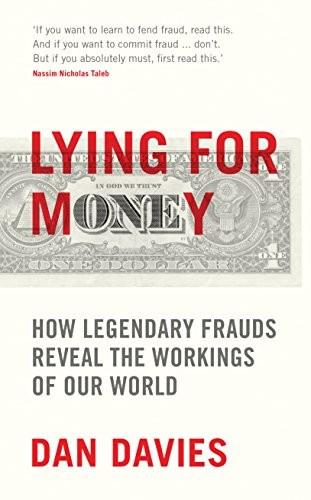
Lying for Money: How Fraud Makes the World Go Round
by
Daniel Davies
Published 14 Jul 2018
Land is physical and tangible and hard to steal, but an inheritance right is something different; you can’t always tell whether it’s been stolen from you and promised to someone else. As soon as the concept of a property right was invented, as soon as ownership got more complicated than simply the ability to control things by fighting anyone else who wanted them, there is a need for a social web of trust that the rights will be respected and not misused. And where there’s trust, there’s the opportunity for fraud. Inheritances also have another important property when we look at them as potential locuses of fraud; they were one of the few ways in which abstract property rights over large and valuable things could come to be owned by women.
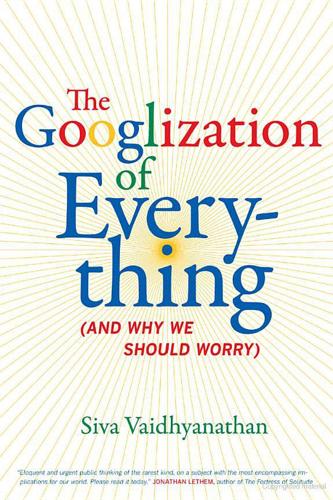
The Googlization of Everything:
by
Siva Vaidhyanathan
Published 1 Jan 2010
The fifth privacy interface is poorly understood and has only recently gained notice, although Nathaniel Hawthorne explained it well in The Scarlet Letter. It’s what I call “person to public.” At this interface, which is now located largely online, people have found their lives exposed, their names and faces ridiculed, and their well-being harmed immeasurably by the rapid proliferation of images, the asocial nature of much ostensibly “social” Web behavior, and the permanence of the digital record. Whereas in our real social lives we have learned to manage our reputations, the online environments in which we work and play have broken down the barriers that separate the different social contexts in which we move. On Facebook, MySpace, or YouTube, a coworker may be an online friend, fan, or critic.
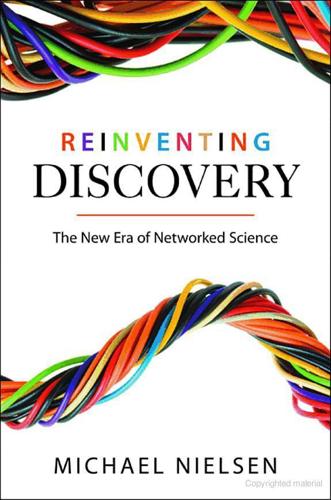
Reinventing Discovery: The New Era of Networked Science
by
Michael Nielsen
Published 2 Oct 2011
Imagine a connected online web of scientific knowledge that integrates and connects data, computer code, chains of scientific reasoning, descriptions of open problems, and beyond. That web of scientific knowledge could incorporate video, virtual worlds, and augmented reality, as well as more conventional media, such as papers. And it would be tightly integrated with a scientific social web that directs scientists’ attention where it is most valuable, releasing enormous collaborative potential. In part 2 of this book we’ll explore, in concrete terms, how the era of networked science is coming about today. We’ll see, for example, how vast databases containing much of the world’s knowledge are being mined for discoveries that would elude any unaided human.
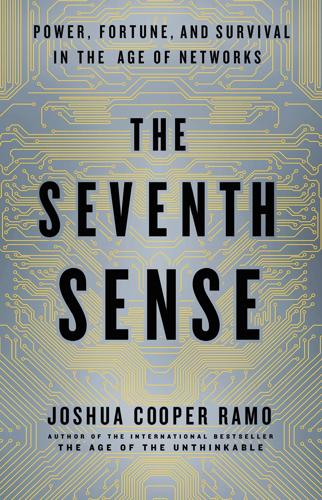
The Seventh Sense: Power, Fortune, and Survival in the Age of Networks
by
Joshua Cooper Ramo
Published 16 May 2016
Postel’s motto to Be liberal in what you accept had been a byword for most of them, and it had helped the networks grow at an incredible pace, but at the price of vulnerability. Now most everyone has something to protect. No one wants to be too liberal in what they accept—the opposite, in fact. The brutal, inarguable, profitable demands of this kind of power cracked apart the unique social webs of the Hack-Tic era. The openness that we loved in so many areas of life, from our minds to our markets, has now become a liability. “I remember what the Internet was like before it was being watched, and there has never been anything in the history of man that is like it,” Edward Snowden once observed, nostalgic for the datascape he saw melt away during his time at the NSA.
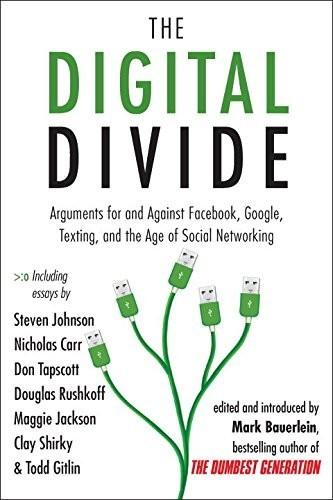
The Digital Divide: Arguments for and Against Facebook, Google, Texting, and the Age of Social Netwo Rking
by
Mark Bauerlein
Published 7 Sep 2011
Ever since we first introduced the term “Web 2.0,” people have been asking, “What’s next?” Assuming that Web 2.0 was meant to be a kind of software version number (rather than a statement about the second coming of the Web after the dot-com bust), we’re constantly asked about “Web 3.0.” Is it the semantic web? The sentient web? Is it the social web? The mobile web? Is it some form of virtual reality? It is all of those, and more. The Web is no longer a collection of static pages of HTML that describe something in the world. Increasingly, the Web is the world—everything and everyone in the world casts an “information shadow,” an aura of data which, when captured and processed intelligently, offers extraordinary opportunity and mind-bending implications.

The Truth Machine: The Blockchain and the Future of Everything
by
Paul Vigna
and
Michael J. Casey
Published 27 Feb 2018
Unlike the KYC solution, which seeks smarter ways for people to prove who they are, this one lowers the barrier to entry by finding efficiencies in the system itself so that it’s less important to “know your customer.” Whether WeTrust’s model works or not, it may help us learn a lot about how these new systems of algorithmic, distributed trust can interface with those old, deeply embedded social webs of trust. We think it’s important that solutions to the challenges faced by the poor aren’t just imposed in some cookie-cutter manner by Silicon Valley venture capitalists who insist they know best. Solutions must be informed by and tailored to the underlying cultural structures of the communities in question.
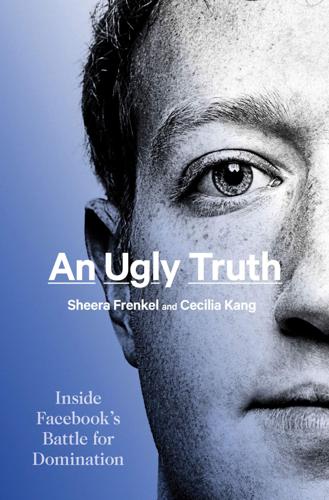
An Ugly Truth: Inside Facebook's Battle for Domination
by
Sheera Frenkel
and
Cecilia Kang
Published 12 Jul 2021
(In 2007, Google’s founders, Brin and Page, and Chief Executive Eric Schmidt discussed a partnership with Zuckerberg in the tiny apartment. Zuckerberg and Page sat at the table, Brin sat on the futon, and Schmidt sat on the floor.) In their conversations, Zuckerberg laid out his vision for what he called “the social web,” how Facebook was an entirely new communications technology, one where news entertainment would be generated for free by its users. Sandberg walked Zuckerberg through how she had helped scale Google’s ad business, turning search queries into data that gave advertisers rich insights about users, contributing to the company’s spectacular cash flow.

The Sirens' Call: How Attention Became the World's Most Endangered Resource
by
Chris Hayes
Published 28 Jan 2025
And this competitive process, like the processes that push attention merchants to compel our attention against our will to extract it, selects for a form of attention—solitary—that is alienating. But the human urge for social connection, specifically for collective spectacle, to pay attention together, is so overpowering that the story does not end there. The entire conceit of the social web is sharing and connecting. And let’s be honest: there is great joy in sharing. Passing along something you loved so other people you love can love it too is a form of genuine connection. Sure, we can’t all be in the same room, and we’re all on our individual screens, but we can bridge that divide through likes and comments and texts and the little share button.

Utopia Is Creepy: And Other Provocations
by
Nicholas Carr
Published 5 Sep 2016
The cover gives Grossman’s words a wry twist, offering a much darker view of the radical personalization of culture. Peer into the cover’s computer screen and all you see looking back at you is you. In a solipsistic world, every Lonely Girl is a Great Man. DIGITAL SHARECROPPING December 19, 2006 STRIP THE HAPPY-FACE EMOTICONS from the social web, and you’re left with a sad-face truth: By putting the means of production into the hands of the masses but withholding from those same masses any ownership over the products of their work, the internet provides an incredibly efficient mechanism for harvesting the economic value of the free labor provided by the very many and concentrating it into the hands of the very few.

The Inevitable: Understanding the 12 Technological Forces That Will Shape Our Future
by
Kevin Kelly
Published 6 Jun 2016
A zillion data points will give you insight that a mere hundred thousand don’t. A zillion chips connected to the internet create a pulsating, vibrating unity that 10 million chips can’t. A zillion hyperlinks will give you information and behavior you could never expect from a hundred thousand links. The social web runs in the land of zillionics. Artificial intelligence, robotics, and virtual realities all require mastery of zillionics. But the skills needed to manage zillionics are daunting. The usual tools for managing big data don’t work very well in this territory. A statistical prediction technique such as a maximum likelihood estimation (MLE) breaks down because in the realm of zillionics the maximum likely estimate becomes improbable.

Is the Internet Changing the Way You Think?: The Net's Impact on Our Minds and Future
by
John Brockman
Published 18 Jan 2011
Here as many as five hundred men, women, and children would mingle, chat, dine, dance, perhaps even worship together. And although a pubescent girl who saw a cute boy at the next campfire might not know him personally, her mother probably knew his aunt, or her older brother had hunted with his cousin. All were part of the same broad social web. Moreover, in the ever present gossip circles a young girl could easily collect data on a potential suitor’s hunting skills, even on whether he was amusing, kind, smart. We think it’s natural to court a totally unknown person in a bar or club. But it’s far more natural to know a few basic things about an individual before meeting him or her.
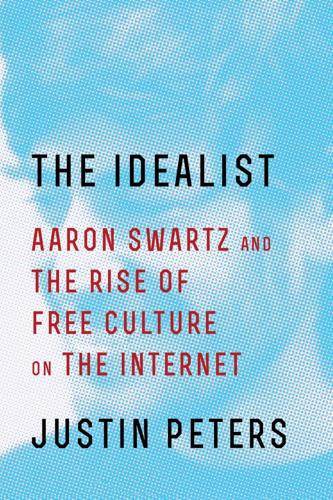
The Idealist: Aaron Swartz and the Rise of Free Culture on the Internet
by
Justin Peters
Published 11 Feb 2013
Their attention and loyalty could be sold to advertisers eager to promote their goods on the site; their browsing and sharing histories could conceivably be mined for a wealth of personal information that could also be sold off. Content producers could, theoretically, even pay to have Reddit show users their stories. If attention was currency on the nascent social Web, then Reddit seemed primed for riches. The prospective acquisition presented Swartz with an existential quandary. Though he claimed to not care about money, he didn’t object to having or making it. But he wondered whether he and his colleagues actually deserved the sums under discussion. On his blog, Swartz openly questioned Reddit’s real value, recounting a conversation with an author who was astounded at the site’s popularity: “So it’s just a list of links?”
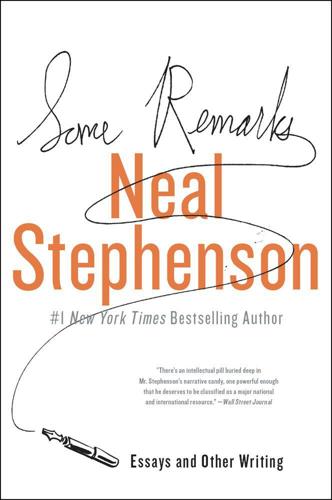
Some Remarks
by
Neal Stephenson
Published 6 Aug 2012
When a schmo’s paycheck is delivered over the I-way, the number on the bottom line is plotted in his Profile, and if that schmo got it by telecommuting we know about that too—the length of his coffee breaks and the size of his bladder are an open book to us. When a schmo buys something on the I-way it goes into his Profile, and if it happens to be something that he recently saw advertised there, we call that interesting, and when he uses the I-way to phone his friends and family, we Profile Auditors can navigate his social web out to a gazillion fractal iterations, the friends of his friends of his friends of his friends, what they buy and what they watch and if there’s a correlation. So now it’s a year later. I have logged many a megaparsec across the Demosphere, I can pick out an anomalous Profile at a glance and notify my superiors.
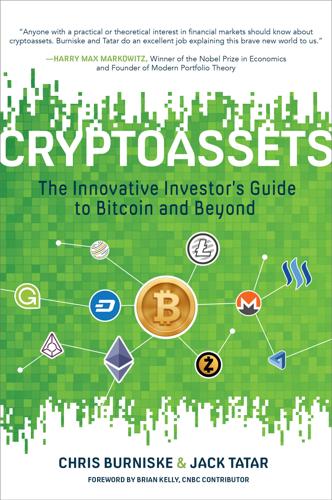
Cryptoassets: The Innovative Investor's Guide to Bitcoin and Beyond: The Innovative Investor's Guide to Bitcoin and Beyond
by
Chris Burniske
and
Jack Tatar
Published 19 Oct 2017
Blockchain technology can now be thought of as a general purpose technology, on par with that of the steam engine, electricity, and machine learning. To quote a May 2016 article in Harvard Business Review by Don and Alex Tapscott: “The technology most likely to change the next decade of business is not the social web, big data, the cloud, robotics, or even artificial intelligence. It’s the blockchain, the technology behind digital currencies like bitcoin.”7 Incumbents are sensing the inherent creative destruction, especially within the financial services sector, understanding that winners will grow new markets and feast off the disintermediated.

Custodians of the Internet: Platforms, Content Moderation, and the Hidden Decisions That Shape Social Media
by
Tarleton Gillespie
Published 25 Jun 2018
DeviantArt even makes this explicit in its preamble: “As the guiding force of this large and vibrant community we have two primary and often conflicting goals in the service we provide for you, the members of the community; the first being to ensure that members are free to express themselves within reason with as few restrictions as possible while nurturing an environment of creativity, learning, and talent and the second is to protect the members of the community, to the best of our abilities, from infringement of copyright, discrimination, harassment, and prejudice.” Free expression and vibrant community have long served as the twin principles for the social web; here they again provide discursive frames not just for celebrating social media but for justifying its self-regulation. A number of the content policy managers I spoke with expressed ambivalence about the policing they find necessary. While many like their jobs and find value in what they’re doing, they don’t like that it is necessary to impose such a high degree of oversight.
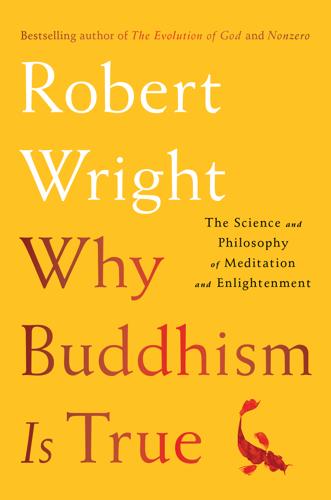
Why Buddhism is True
by
Robert Wright
Just look at all the tribalism—the discord and even open conflict along religious, ethnic, national, and ideological lines. More and more, it seems, groups of people define their identity in terms of sharp opposition to other groups of people. I consider this tribalism the biggest problem of our time. I think it could undo millennia of movement toward global integration, unravel the social web just when technology has brought the prospect of a cohesive planetary community within reach. Given that the world is still loaded with nuclear weapons and that biotechnology is opening a Pandora’s box of new weaponry, you can imagine our tribalistic impulses ushering in a truly dark age. Or maybe I’m getting carried away.

Mood Machine: The Rise of Spotify and the Costs of the Perfect Playlist
by
Liz Pelly
Published 7 Jan 2025
On one hand, independent labels were definitely still feeling the hit from piracy: CD sales were tanking, vinyl hadn’t really made a comeback yet, Bandcamp wasn’t popular yet. They were often looking for whatever life raft they could find. On the other hand, some independent artists were really making the most of the internet in a time before the consolidated social web had taken hold. Just a few months before Merlin signed that first Spotify deal on behalf of much of the independent sector, there was a presentation at the 2008 Future of Music Coalition (FMC) conference on the “vitality” of the emerging online marketplace for independent artists, painting a somewhat rosy picture.

Palo Alto: A History of California, Capitalism, and the World
by
Malcolm Harris
Published 14 Feb 2023
It looks helter-skelter, but as I’ve said, Palo Altans managed to generate sinks to absorb and grow huge amounts of capital over and over, with remarkable consistency during the period in question. In a world starved for efficiency gains—novel ways to tighten costs—a bet on the Valley keeps getting better. Just ask some rich people. By the time we arrive at the second wave of social web companies—post-Facebook, that is to say—the Valley was producing, on a pure numbers basis, the most productive workers in the history of the world. When the Stanford student start-up Instagram sold to Zuckerberg and company in 2012 for a nice round $1 billion, the company had only 13 employees and was not yet two years old.66 Some critics called it a foolish deal for an app that didn’t make any money, but Team Zuck proved the doubters wrong.
…
Founded by Manish Shah and Auren Hoffman, RapLeaf was not so different from PayPal at the end of the day: Both were going to create a reputation layer of the web, combining user data from a number of sites to create a portable personal score, which would come to displace, say, eBay’s internal reputation system. That plan failed when the auction site banned listings with RapLeaf links—eBay’s color-star reputation system stands at the time of this writing—but the firm got good at scraping data from the social web. It pivoted to a “people search” layer above the individual networks. The company’s growth magic was scraping users’ email contact lists and spamming their unsuspecting friends with irresistible emails informing them that “someone is looking for you”—perhaps inspired by Facebook’s success with contact-list scraping.
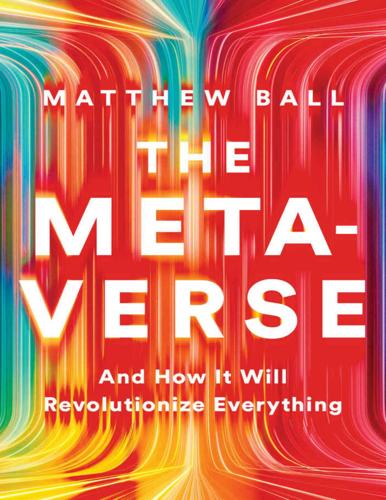
The Metaverse: And How It Will Revolutionize Everything
by
Matthew Ball
Published 18 Jul 2022
By the end of 2021, TikTok had more than billion users and was reportedly the most visited web domain of the year, with Google and Facebook rounding out the top three. Though the top integrated virtual world platforms are mighty and fast-growing, they also represent a far smaller portion of the gaming industry than Facebook does in the social web. In 2021, the combined revenues of Roblox, Minecraft, and FNC represented less than 2.5% of gaming revenues in 2021, and reached fewer than 500 million of an estimated 2.5 billion–3 billion players. Moreover, they’re dwarfed by the major cross-platform engines. Roughly half of all games today run on Unity, while Unreal Engine’s share of high-fidelity 3D immersive worlds is estimated at between 15% and 25%.

Tripping on Utopia: Margaret Mead, the Cold War, and the Troubled Birth of Psychedelic Science
by
Benjamin Breen
Published 16 Jan 2024
It had been 2 o’clock that morning, just before they went to bed. They were both drunk on martinis. Marianne told Timothy she knew about his mistress and was “incredibly unhappy.” “That’s your problem,” Leary replied. The psychiatrist who extolled the virtues of connecting mental anguish to a wider social web, seeing the individual as part of a fabric of relationships, had, in the end, reduced his own misdeeds to a problem for someone else to solve. Newspapers throughout California ran the story. “Psychologist’s Wife Ends Life After Conference,” went the headline of an article in the Long Beach Independent.

Shadow Libraries: Access to Knowledge in Global Higher Education
by
Joe Karaganis
Published 3 May 2018
I’ll take it from someone who took the photocopies, who went there every week and paid 30, 20 reais ... and I’ll patiently take photo after photo with my iPad.” The specific mix of technologies used by students is clearly a moving target, as services drop in and out of use and new resources become available. Email, Facebook, and Dropbox are at the center, surrounded by the wider social web that supports small-group communication and file storage. Cameras on cell phones and devices provide a constant stream of documentation of classroom materials and activities. Collectively, these tools define a sharing ecosystem that falls between the copy shops and the high-level shadow libraries.
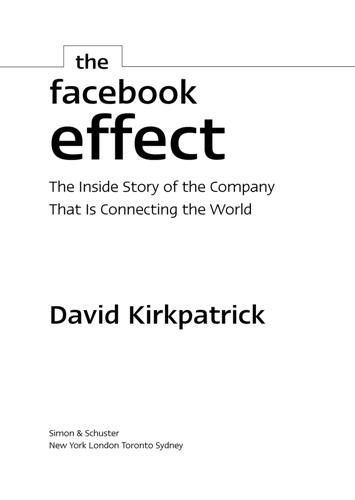
The Facebook Effect
by
David Kirkpatrick
Published 19 Nov 2010
Grown Up Digital: How the Net Generation Is Changing the World. New York: McGraw-Hill, 2008. Turkle, Sherry. Life on the Screen: Identity in the Age of the Internet. New York: Touchstone, 1995. Vander Veer, E. A. Facebook: The Missing Manual. Sebastopol, CA: O’Reilly, 2008. Weber, Larry. Marketing to the Social Web: How Digital Customer Communities Build Your Business. Hoboken, NJ: Wiley, 2009. Winograd, M., M. Hais. Millenial Makeover: MySpace, YouTube & the Future of American Politics. New Brunswick, NJ: Rutgers University Press: 2008. Wright, Robert. Non-Zero: The Logic of Human Destiny. New York: Pantheon Books, 2000.
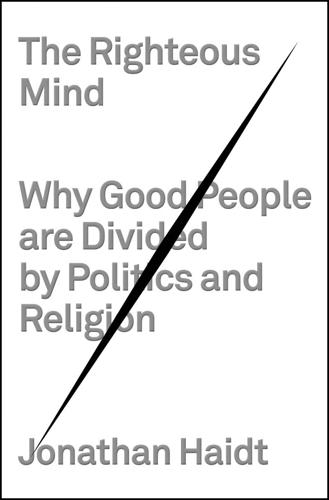
The Righteous Mind: Why Good People Are Divided by Politics and Religion
by
Jonathan Haidt
Published 13 Mar 2012
I was welcomed at the local university by Professor Biranchi Puhan, an old friend of Shweder’s, who gave me an office and introduced me to the rest of the psychology department, from which I recruited a research team of eager students. Within a week I was ready to begin my work, which was supposed to be a series of experiments on moral judgment, particularly violations of the ethics of divinity. But these experiments taught me little in comparison to what I learned just from stumbling around the complex social web of a small Indian city and then talking with my hosts and advisors about my confusion. One cause of confusion was that I had brought with me two incompatible identities. On one hand, I was a twenty-nine-year-old liberal atheist with very definite views about right and wrong. On the other hand, I wanted to be like those open-minded anthropologists I had read so much about and had studied with, such as Alan Fiske and Richard Shweder.

The Future of the Professions: How Technology Will Transform the Work of Human Experts
by
Richard Susskind
and
Daniel Susskind
Published 24 Aug 2015
Bleacher Report, a blog written by 2,000 sports fans, now has 22 million unique users each month, enough to rival Yahoo and CNN sports.204 Global Voices, an online network of 1,200 writers and editors, who are largely volunteers, scrape through the Internet to find, curate, and translate pieces (into thirty languages) that are written outside the mainstream press (what they call the ‘citizen and social web’). Scott Gant captures this new spirit in the title of his book, We’re All Journalists Now.205 New ‘digital-only’ institutions have also emerged, often with non-traditional business models. The Huffington Post is a for-profit online news platform on which anyone can submit an article, alongside paid writers.

Servants: A Downstairs History of Britain From the Nineteenth Century to Modern Times
by
Lucy Lethbridge
Published 18 Nov 2013
Yet the uncategorisable nature of the servant-master bond, so convenient for the master, was beginning by the turn of the century to chafe; many servants felt bitterly their exclusion from the social changes brought about by the Industrial Revolution. The idea that English society was bound by a complex and essentially benevolent social web that held the classes together in mutual co-dependency was one of the most potent myths of Edwardian England, at a time when inequalities were in real life stark. The upper and middle classes enjoyed improvements in diet, sanitation and medicine and a concomitant rise in life expectancy. At the turn of the century they could expect to live for nearly sixty years, while the life expectancy of the poorest of the working classes, whose diet chiefly consisted of tea, bread, and dripping, had not risen at all for three centuries, and remained at just thirty years.

The Hype Machine: How Social Media Disrupts Our Elections, Our Economy, and Our Health--And How We Must Adapt
by
Sinan Aral
Published 14 Sep 2020
We are mentally wired—in fact, we are evolutionarily bound by our neurophysiology—to communicate, connect, and coordinate with one another. Then we invented the Hype Machine. The Hype Machine is designed to facilitate the rapid diffusion of the social information that our brains have evolved to process, on a scale we have never witnessed. Unlike television or the Internet, the social web puts us directly in touch with the real-time, searchable social streams of millions of people every day. The ten-second Vine loops, the split-second scans of Instagram images—sometimes we don’t even notice its influence. But the Hype Machine delivers social information in incredibly rich detail and at unprecedented scale.

Data Wrangling With Python: Tips and Tools to Make Your Life Easier
by
Jacqueline Kazil
Published 4 Feb 2016
If you find an API you want to use, create a few rules around how you will use it and what to do if it is not accessible (you may want to store responses locally to avoid downtime issues). Collecting enough responses over time can also help eliminate some selection bias in your research. Outside of social web services, there are a variety of sites where you can post your own questions and ideas and ask for a crowdsourced reply. Whether you want to go to an expert forum related to the topic or post a survey and circulate it though your own channels is up to you, but be aware when using your own research questions and methods that you must account for whatever size and sampling errors arise.
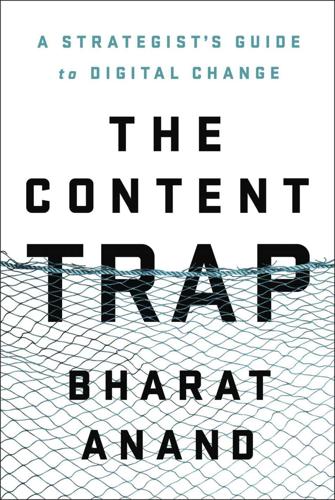
The Content Trap: A Strategist's Guide to Digital Change
by
Bharat Anand
Published 17 Oct 2016
It was initially thought that one of the Internet’s greatest benefits was anonymity. Users could communicate without others knowing who they were. Expressing opinions, sending customer complaints, or seeding grassroots movements could all be done without fear of reprisal or retribution. But as interpersonal communication and the social Web grew, a funny thing happened: Relational identity became as important online as in the real world. Tencent’s first stroke of genius was in recognizing this early on. As the users on Tencent’s IM platform grew in number, so did their desire to differentiate themselves from millions of others. To allow users to stand out from the pack, Tencent tapped still more alternatives.

The Zero Marginal Cost Society: The Internet of Things, the Collaborative Commons, and the Eclipse of Capitalism
by
Jeremy Rifkin
Published 31 Mar 2014
And it’s an economy that lives more on social trust rather than on anonymous market forces. Rachel Botsman, an Oxford- and Harvard-educated former consultant to GE and IBM who abandoned her career to join the new sharing economy, describes the path that led up to collaborative consumption. She notes that the social Web has passed through three phases—the first enabled programmers to freely share code; Facebook and Twitter allowed people to share their lives; and YouTube and Flickr allowed people to share their creative content. “Now we’re going into the fourth phase,” Botsman says, “where people are saying, ‘I can apply the same technology to share all kinds of assets offline, from the real world.’”29 Let me add an amplifier at this juncture: while the Communications Internet is an enabler, as it merges with the Energy Internet and the Logistics Internet in the years ahead, establishing an integrated and sharable communication, energy, and logistics infrastructure—an Internet of Things—that can operate at near zero marginal cost, it dramatically boosts the potential of the other sharable sectors, including rentals, redistribution networks, cultural exchanges, and exchanges of professional and technical skills.

Track Changes
by
Matthew G. Kirschenbaum
Published 1 May 2016
Structur and Alpha are one-of-a-kind writing instruments created in a single author’s image: to know the software is to know something of the mind of the writer, however obliquely. When tens of thousands of people shared, tweeted, or embedded the clip from George R. R. Martin’s Conan interview, it was doubtless with the sense of casual novelty—“get-a-load-of-this”—that characterizes so much of the social Web. But there was also something more at work—the sense, however intuitive or instinctive, that this was something worth knowing, specifically worth knowing about this author and his writing. Not that WordStar explained anything, exactly. But the contrast between the inaccessible recesses of Martin’s mind—knowable only to him, at best only in partial and fragmentary form—and the banality of the instrument through which he channels its expression is, I believe, a large measure of what accounts for the fascination with the technical details of his computer system.

WTF?: What's the Future and Why It's Up to Us
by
Tim O'Reilly
Published 9 Oct 2017
In developing our first books, we practiced a version of this kind of crowdsourcing ourselves. In 1987, I wrote a book called Managing UUCP and Usenet, which described how to use a program called the Unix-to-Unix Copy Program (UUCP) to connect to Usenet, a distributed dial-up precursor to today’s social web. It was on Usenet that the world’s software developers conversed about their work, shared tips and advice, and, increasingly, talked about everything from sex to politics. At first the book was based on my own experience connecting systems to Usenet, but that experience was limited. Readers sent me information about how to use additional equipment that I didn’t have access to and the fine points of geekery (“Here’s the ‘chat script’ for calling in through a Develcon switch,” or “Here are the pins you need to connect in an RS-232 cable” for some particular brand of modem.)

MacroWikinomics: Rebooting Business and the World
by
Don Tapscott
and
Anthony D. Williams
Published 28 Sep 2010
Rather than the filmmaker looking for a small number of wealthy investors, IndieGoGo promotes the idea of many investors providing a small amount of money each—much like the crowd funding of the Obama campaign. And much like Obama supporters, once fans donate money, they are much more committed to seeing the project succeed. They can use social Web technologies to build online buzz for the film they’ve just invested in. SnagFilms.com makes it much easier for independent documentary films to find an audience. The site currently offers for free viewing 850 full-length documentaries, from established heavyweights to first-timers.15 By streaming films worldwide, on-demand, 24-7 and with no software installation or downloading required, SnagFilms’ potential audience is huge.
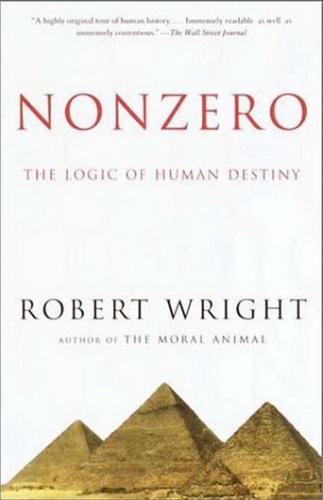
The Moral Animal: Evolutionary Psychology and Everyday Life
by
Robert Wright
Published 1 Jan 1994
One great way for a village to fend off assault, or to conduct assault, is to ally with another village, a standard tactic among the Northwest Coast Indians. And, once this alliance exists, any enemies have good cause to themselves find allies. And so on: an “arms race” of organization that expands the social web outward, weaving more and more villages together. The speed with which hostility can thus move to higher levels of social organization, leaving harmony in its wake, has been much noted by anthropologists. The Nuer of Sudan, as studied by E. E. Evans-Pritchard early this century, were an especially vivid case.
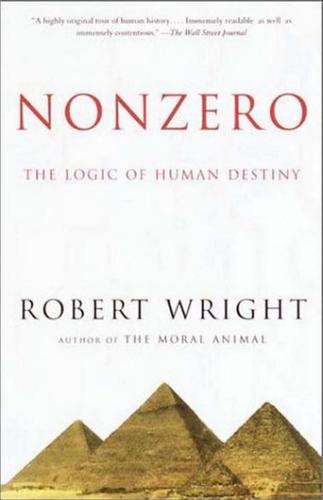
Nonzero: The Logic of Human Destiny
by
Robert Wright
Published 28 Dec 2010
One great way for a village to fend off assault, or to conduct assault, is to ally with another village, a standard tactic among the Northwest Coast Indians. And, once this alliance exists, any enemies have good cause to themselves find allies. And so on: an “arms race” of organization that expands the social web outward, weaving more and more villages together. The speed with which hostility can thus move to higher levels of social organization, leaving harmony in its wake, has been much noted by anthropologists. The Nuer of Sudan, as studied by E. E. Evans-Pritchard early this century, were an especially vivid case.

Character Limit: How Elon Musk Destroyed Twitter
by
Kate Conger
and
Ryan Mac
Published 17 Sep 2024
He was exceptionally quiet, preferring online chats to talking in person. He faded into the background when the group worked on projects or went out for drinks. And even though he was working for the renowned Blogger founder, Dorsey did his own journaling on a competing blogging platform, LiveJournal. For the early days of the social web, Dorsey was a prolific poster. And while his personality came out more in his LiveJournal posts, he felt like he needed something more. On both platforms, a user needed so much intention to post—drafting sentences and paragraphs of a blog or uploading and editing images from their digital cameras—before publishing.
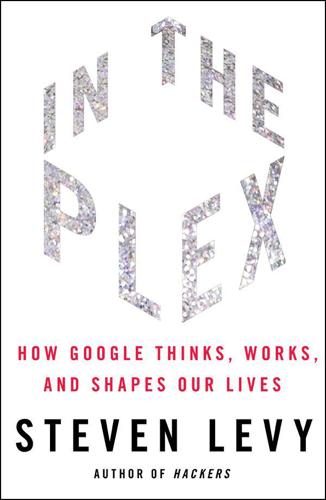
In the Plex: How Google Thinks, Works, and Shapes Our Lives
by
Steven Levy
Published 12 Apr 2011
It sounded like a postmortem for a lost battle, he would later admit, but it was the Google way. Google set about organizing many of the web’s socially oriented companies into a major initiative that it called OpenSocial. The idea was to build a shared infrastructure where multiple websites could participate in a more social web. A user’s identity would be portable; a profile formed on one site could be used on other sites or services. While Google bore the burden of much of the programming and organization, it was careful not to label the effort as solely its own: the party line was that this was an open-source group effort that would benefit all.
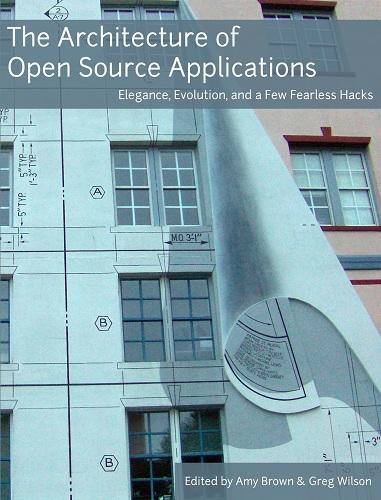
The Architecture of Open Source Applications
by
Amy Brown
and
Greg Wilson
Published 24 May 2011
In our implementation, when the VisTrails object is activated, we load the VisTrails application and allow users to open, interact with and select a pipeline that they want to insert. After they close VisTrails, the pipeline result will be shown in PowerPoint. Pipeline information is also stored with the OLE object. To enable users to freely share their results together with the associated provenance, we have created crowdLabs.7 crowdLabs is a social Web site that integrates a set of usable tools and a scalable infrastructure to provide an environment for scientists to collaboratively analyze and visualize data. crowdLabs is tightly integrated with VisTrails. If a user wants to share any results derived in VisTrails, she can connect to the crowdLabs server directly from VisTrails to upload the information.

In the Age of the Smart Machine
by
Shoshana Zuboff
Published 14 Apr 1988
For all the bone-crushing labor demanded of the agricultural worker or the cottage weaver, the traditional rhythms of exertion and play were a world removed from the behavioral demands of industrial production. Work patterns were irregular, alternating between intense effort and idleness. Most work activities emanated from the home, and the distractions of the family, the taverns, and the social web of the community limited any undivided commitment to work. Cottage workers, upon whom most textile production depended, were relatively impervious to the middleman's demand for heightened productivity. Their inclination to physical exertion was guided more by their own immediate needs than by acquisitive ambitions.

Valley of Genius: The Uncensored History of Silicon Valley (As Told by the Hackers, Founders, and Freaks Who Made It Boom)
by
Adam Fisher
Published 9 Jul 2018
Sean Parker: The dot-com era sort of ended with Napster, then there’s the dot-com bust, which leads to the social media era. Steven Johnson: At the time, the web was fundamentally a literary metaphor: “pages”—and then these hypertext links between pages. There was no concept of the user; that was not part of the metaphor at all. Mark Pincus: I mark Napster as the beginning of the social web—people, not pages. For me that was the breakthrough moment, because I saw that the internet could be this completely distributed peer-to-peer network. We could disintermediate those big media companies and all be connected to each other. Steven Johnson: To me it really started with blogging in the early 2000s.

The Emperor of All Maladies: A Biography of Cancer
by
Siddhartha Mukherjee
Published 16 Nov 2010
First, Fowler and Christakis plotted a diagram of all known relationships in Framingham—friends, neighbors, and relatives, siblings, ex-wives, uncles, aunts—as a densely interconnected web. Viewed abstractly, the network began to assume familiar and intuitive patterns. A few men and women (call them “socializers”) stood at the epicenter of these networks, densely connected to each other through multiple ties. In contrast, others lingered on the outskirts of the social web—“loners”—with few and fleeting contacts. When the epidemiologists juxtaposed smoking behavior onto this network and followed the pattern of smoking over decades, a notable phenomenon emerged: circles of relationships were found to be more powerful predictors of the dynamics of smoking than nearly any other factor.

Designing Data-Intensive Applications: The Big Ideas Behind Reliable, Scalable, and Maintainable Systems
by
Martin Kleppmann
Published 17 Apr 2017
.: “Impala: A Modern, Open-Source SQL Engine for Hadoop,” at 7th Biennial Conference on Innovative Data Systems Research (CIDR), January 2015. [42] Matthieu Monsch: “Open-Sourcing PalDB, a Lightweight Companion for Stor‐ ing Side Data,” engineering.linkedin.com, October 26, 2015. [43] Daniel Peng and Frank Dabek: “Large-Scale Incremental Processing Using Dis‐ tributed Transactions and Notifications,” at 9th USENIX conference on Operating Sys‐ tems Design and Implementation (OSDI), October 2010. [44] ““Cloudera Search User Guide,” Cloudera, Inc., September 2015. [45] Lili Wu, Sam Shah, Sean Choi, et al.: “The Browsemaps: Collaborative Filtering at LinkedIn,” at 6th Workshop on Recommender Systems and the Social Web (RSWeb), October 2014. [46] Roshan Sumbaly, Jay Kreps, Lei Gao, et al.: “Serving Large-Scale Batch Compu‐ ted Data with Project Voldemort,” at 10th USENIX Conference on File and Storage Technologies (FAST), February 2012. [47] Varun Sharma: “Open-Sourcing Terrapin: A Serving System for Batch Gener‐ ated Data,” engineering.pinterest.com, September 14, 2015.
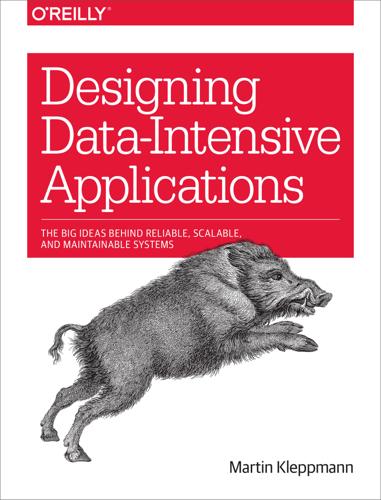
Designing Data-Intensive Applications: The Big Ideas Behind Reliable, Scalable, and Maintainable Systems
by
Martin Kleppmann
Published 16 Mar 2017
[43] Daniel Peng and Frank Dabek: “Large-Scale Incremental Processing Using Distributed Transactions and Notifications,” at 9th USENIX conference on Operating Systems Design and Implementation (OSDI), October 2010. [44] ““Cloudera Search User Guide,” Cloudera, Inc., September 2015. [45] Lili Wu, Sam Shah, Sean Choi, et al.: “The Browsemaps: Collaborative Filtering at LinkedIn,” at 6th Workshop on Recommender Systems and the Social Web (RSWeb), October 2014. [46] Roshan Sumbaly, Jay Kreps, Lei Gao, et al.: “Serving Large-Scale Batch Computed Data with Project Voldemort,” at 10th USENIX Conference on File and Storage Technologies (FAST), February 2012. [47] Varun Sharma: “Open-Sourcing Terrapin: A Serving System for Batch Generated Data,” engineering.pinterest.com, September 14, 2015

The Age of Surveillance Capitalism
by
Shoshana Zuboff
Published 15 Jan 2019
As one manager describes it, “You base predictions off an action, and then you do stuff around that action.” Actions are signals like “following,” “liking,” and “sharing,” now and in the past. The circle widens from there. With whom did you share? Who do they follow, like, and share with? “Instagram is mining the multilayered social web between users,” but that mining is based on observable, measurable behaviors moving through time: the dynamic surplus of the shadow text drawn from its own caches as well as Facebook’s, not the content displayed in the public text.35 In the end, the photos you see resonate with strange relevance for your life.
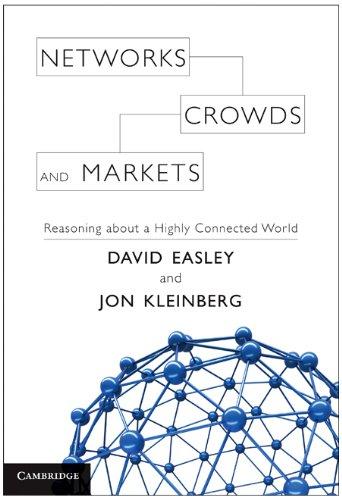
Networks, Crowds, and Markets: Reasoning About a Highly Connected World
by
David Easley
and
Jon Kleinberg
Published 15 Nov 2010
APPLICATIONS OF STRUCTURAL BALANCE 139 set V mutual set W friends set X inside V mutual friends inside X mutual friends inside W mutual antagonism between all sets mutual friends mutual inside Z friends inside Y set Z set Y Figure 5.6: A complete graph is weakly balanced precisely when it can be divided into multiple sets of mutual friends, with complete mutual antagonism between each pair of sets. so forth). In such a case, if A distrusts B and B distrusts C, we might conclude that A is far more expert than C, and so should distrust C as well. Ultimately, understanding how these positive and negative relationships work is important for understanding the role they play on social Web sites where users register subjective evaluations of each other. Although the questions raised here are fundamental ones, there is not yet enough empirical evidence to clearly resolve them; it remains a topic of active research. 140 CHAPTER 5. POSITIVE AND NEGATIVE RELATIONSHIPS 5.4 A Weaker Form of Structural Balance In studying models of positive and negative relationships on networks, researchers have also formulated alternate notions of structural balance, by revisiting the original assumptions we used to motivate the framework.

The Master and His Emissary: The Divided Brain and the Making of the Western World
by
Iain McGilchrist
Published 8 Oct 2012
This would suggest that the nature of the modern Western urban environment may be exaggerating the tendencies that the left hemisphere has projected there, as well as suggesting one reason why the natural environment is felt to have such a healing influence. Eastern cultures, and in particular the Japanese, have been characterised as ‘interdependent’; in other words, individuals are less seen in isolation than they are in the West, instead forming part of an interconnected social web. For them, the sense of the self (as we saw for the right hemisphere) develops through understanding its influence on others. Self-improvement in such cultures has far less to do with getting what one wants, and far more to do with confronting one’s own shortcomings, in the interests of harmony, at home, at work, and amongst friends.75 Westerners perform better on tasks with independent demands than on tasks with interdependent demands.76 East Asians make stronger efforts to justify their choices if they have been made on behalf of a friend, Westerners if made for themselves.77 The Japanese word for self, jibun, implies a share of something which is both separate and not separate, individual and yet still shared.